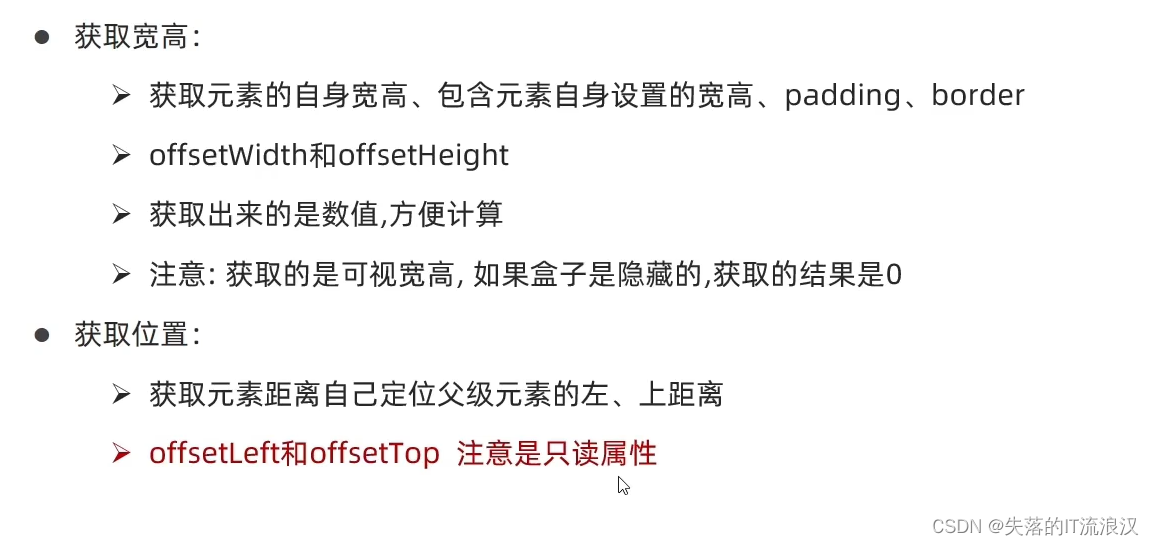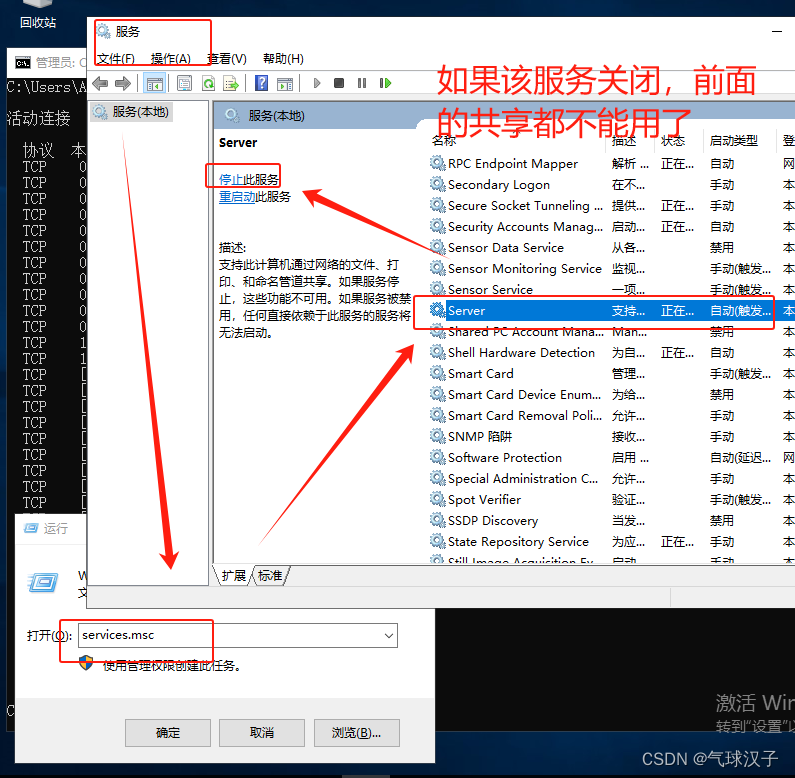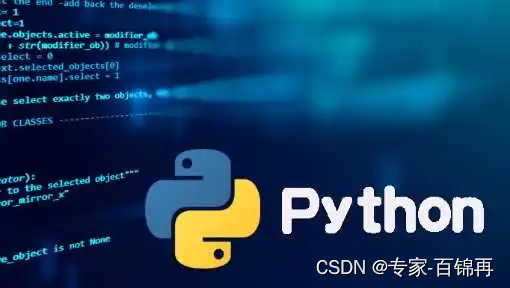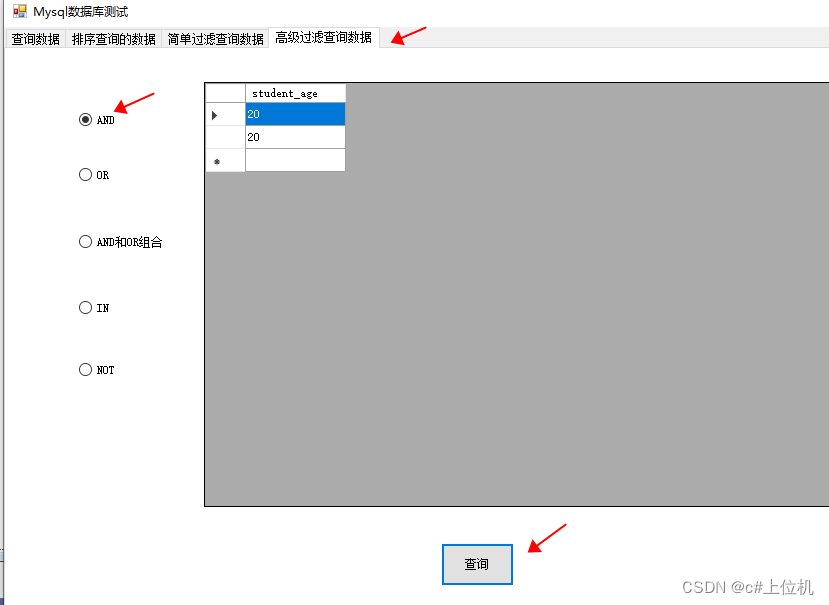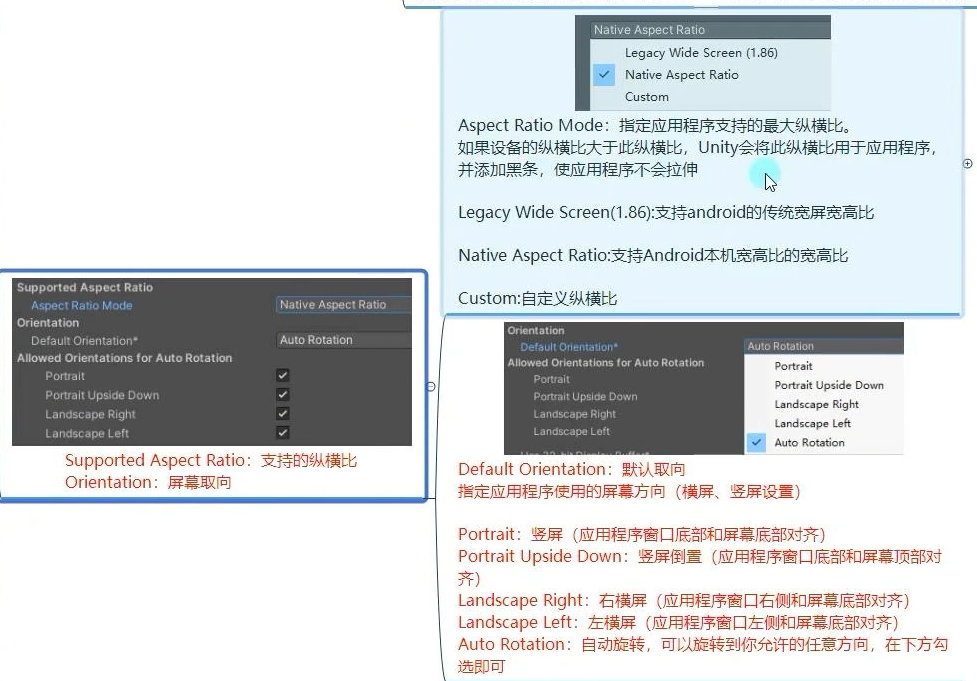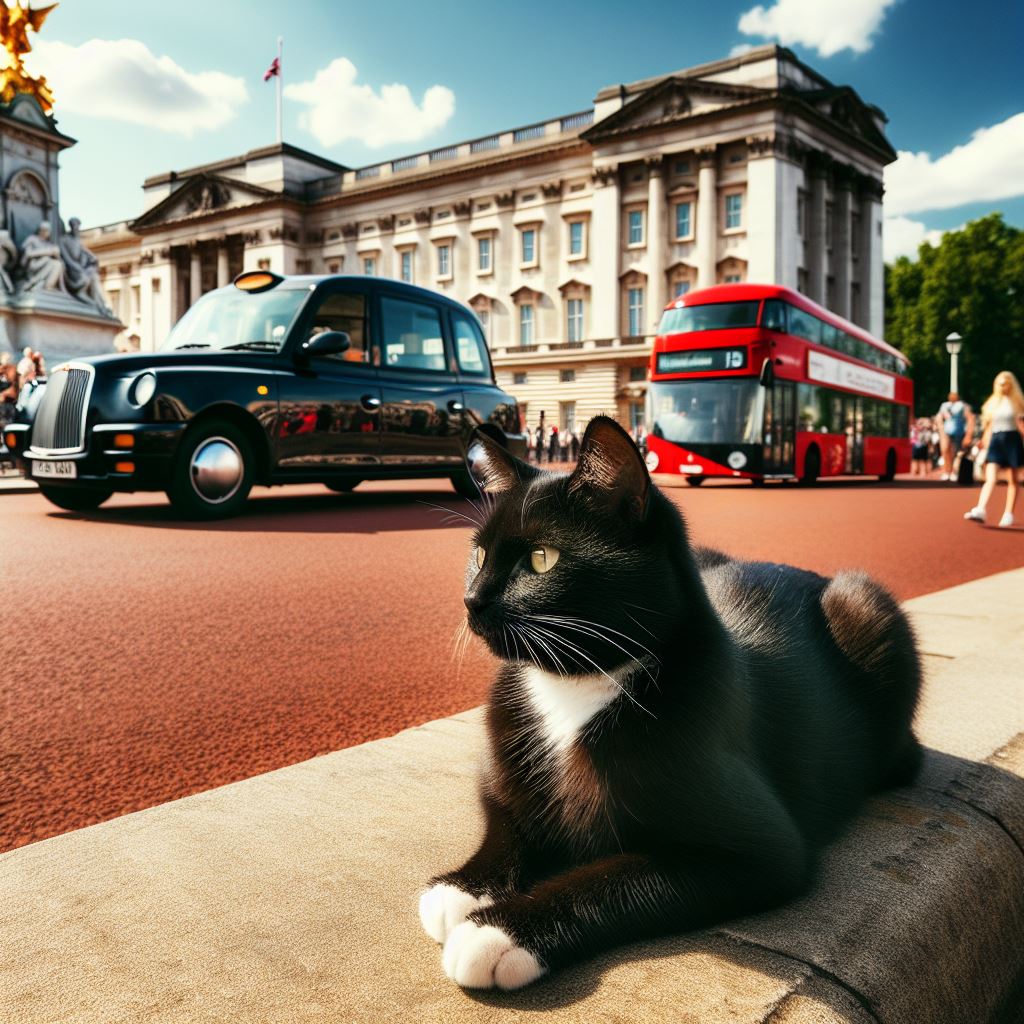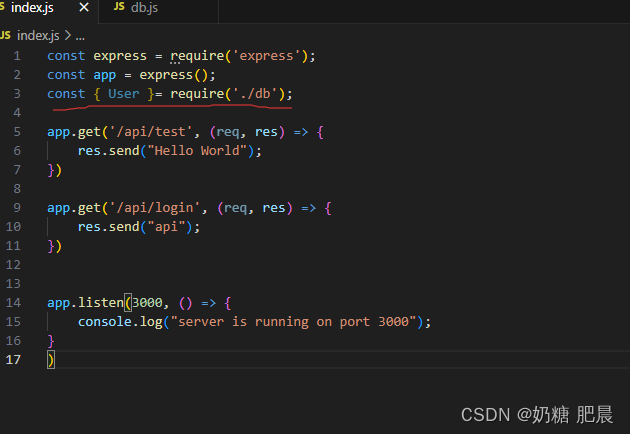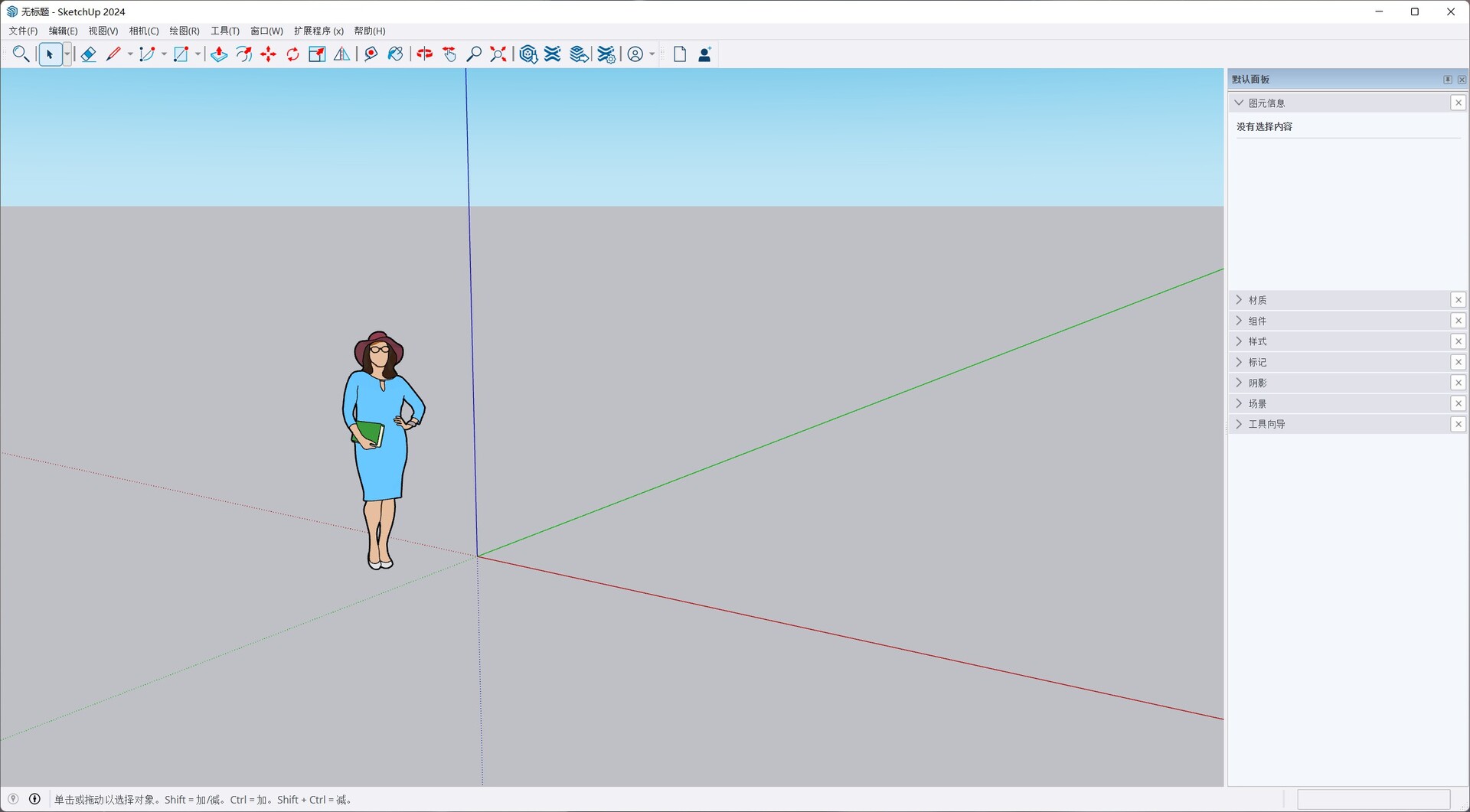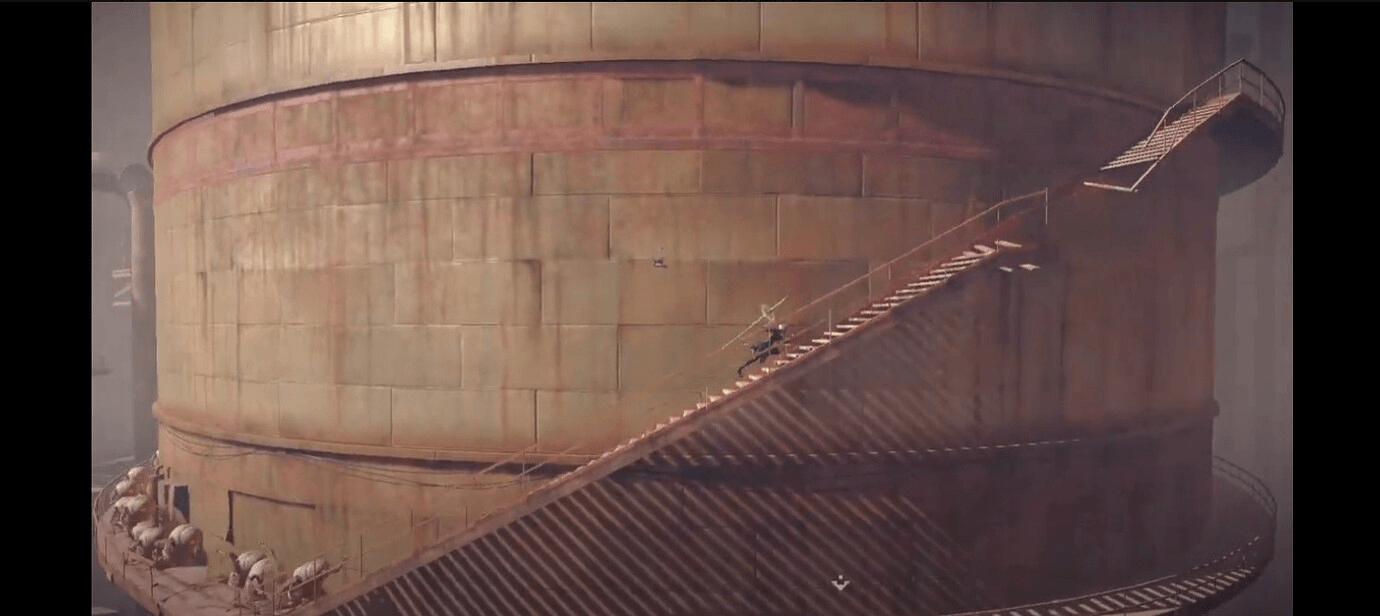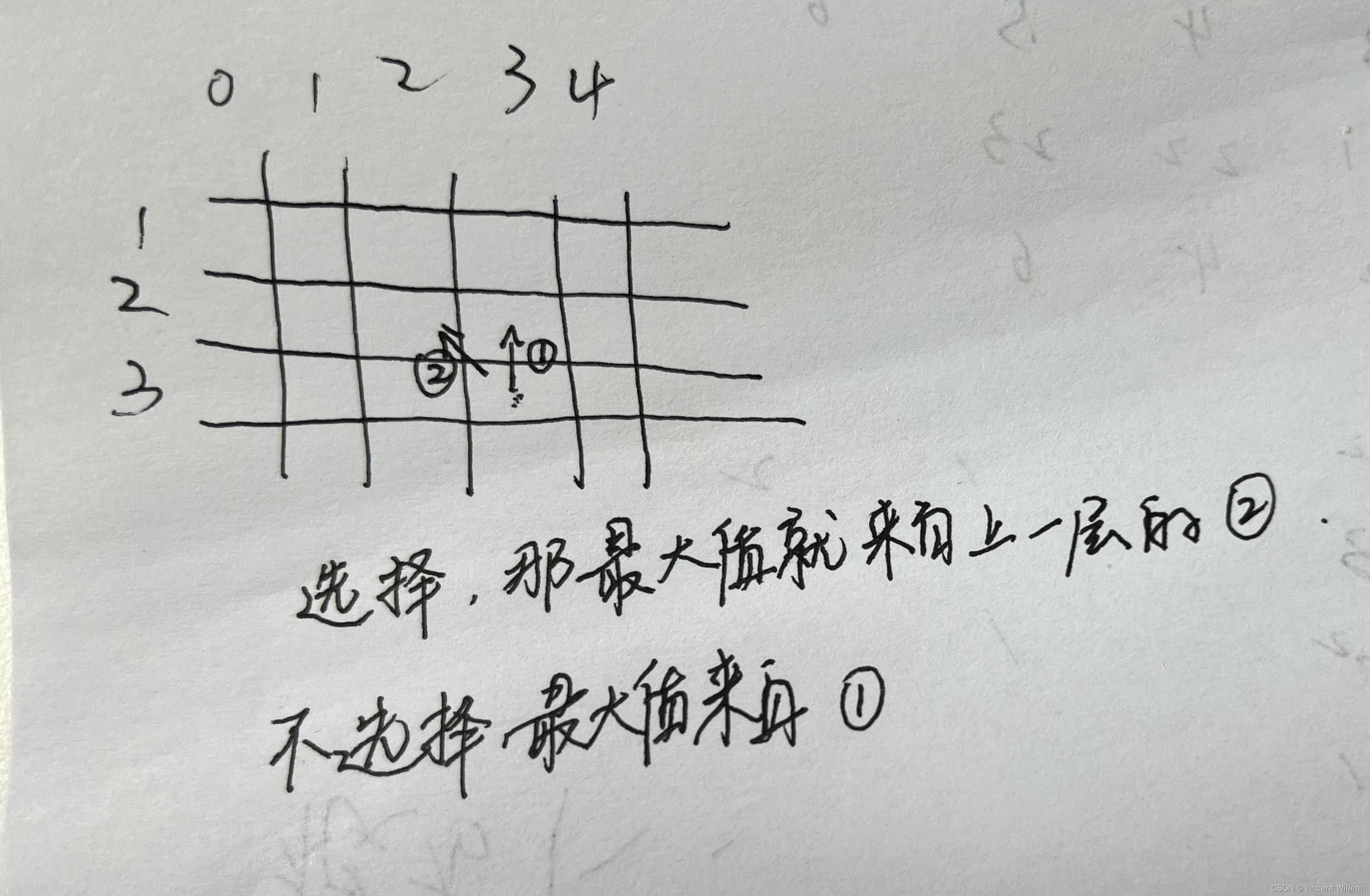Questions, Present Progressive and Future Tenses
Course Certificate
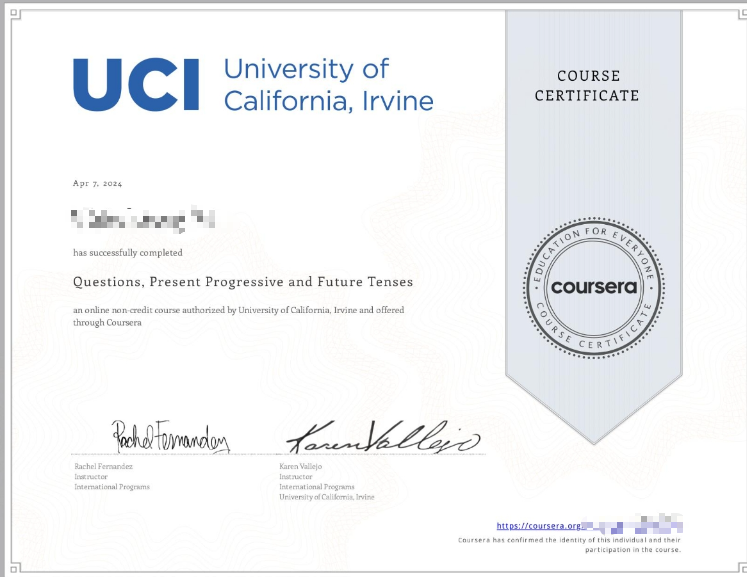
本文是学习 Questions, Present Progressive and Future Tenses 这门课的学习笔记,如有侵权,请联系删除。

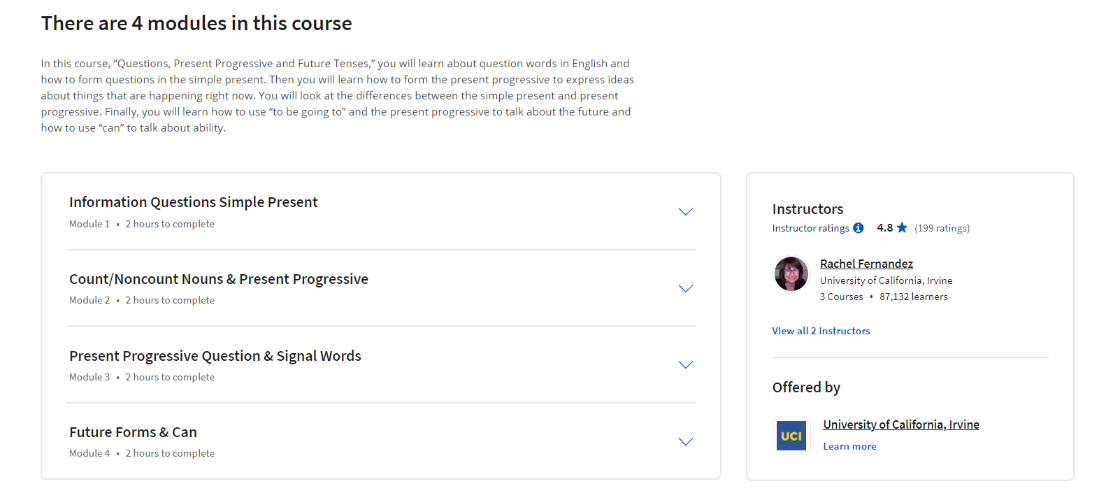
文章目录
- Questions, Present Progressive and Future Tenses
- Week 01: Information Questions Simple Present
- Learning Objectives
- Question Words
- Question Words (Practice Exercise)
- Information Questions BE
- Information Questions BE (Practice Exercise)
- Information Questions Simple Present
- Information Questions Simple Present (Practice Exercise)
- Quiz: Information Questions Simple Present
- Week 02: Count/Noncount Nouns & Present Progressive
- Learning Objectives
- Count/Non-Count Nouns, How Many & How Much
- Count/Non-Count Nouns, How Many & How Much (Practice Exercise)
- Present Progressive
- Present Progressive (Practice Exercise)
- Present Progressive Negative
- Present Progressive Negative (Practice Exercise)
- Quiz: Count/Noncount Nouns & Present Progressive
- Week 03: Present Progressive Question & Signal Words
- Learning Objectives
- Present Progressive Yes/No Questions
- Present Progressive Yes/No Questions (Practice Exercise)
- Present Progressive Information Questions
- Present Progressive Information Questions (Practice Exercise)
- Present Progressive & Simple Present
- Present Progressive & Simple Present (Practice Exercise)
- Quiz: Present Progressive Questions & Signal Words
- Week 04: Future Forms & Can
- Learning Objectives
- Future - BE Going To
- Future - BE Going To (Practice Exercise)
- Present Progressive as Future
- Present Progressive as Future (Practice Exercise)
- Can
- Using Can & Can't (Practice Exercise)
- Quiz: Future Forms & Can
- 后记
sequoia: 美 [səˈk(w)ɔɪə] 红杉
courthouse:法院大楼
bald eagle:秃鹰,白头雕
present progressive: 现在进行时
count noun:可数名词
non-count noun:不可数名词
cabinet: 美 [ˈkæbɪnət] 储物柜
ketchup:番茄酱
lettuce:美 [ˈletɪs] 莴苣
avocado:美 [ˌævəˈkɑːdoʊ] 鳄梨🥑
alligator:美 [ˈælɪɡeɪtər] 短吻鳄
go to the movies: 看电影
cheetah :美 [ˈtʃiːtə] 猎豹
flamingo:美 [fləˈmɪŋɡoʊ] 火烈鸟
flute: 美 [fluːt] 长笛 play the flute
Week 01: Information Questions Simple Present
We will start this week with question words. You will learn how to ask information questions in the simple present. Information questions are questions where the answer is not “yes” or “no.” The answer is some information. For example, “Where are you?” is an information question because the answer is not “yes.” It is, “I’m at school.”
Learning Objectives
- Identify main questions words.
- Ask information questions in simple present.
Question Words
Question words. In this lesson, we will look at different
words we use to ask questions. Here are some question words. What asks about a thing. Where asks about a place. Why asks for a reason. Usually the answer
to why is because. When asks about a time. Who asks about a person. How asks about a
condition or a process. So how are you? I’m fine. Or how
does that happen? Which, gives you a choice. Which one do you want?

Let’s practice. Here, you have a question, but it doesn’t have
the question word. What question word
goes in the blank? You see the answer, she eats breakfast at 07:00 AM. What question word do we need? When. When does
she eat breakfast? She eats breakfast at 07:00 AM. When asks about time. Here’s another. What
goes in the blank? The answer is he doesn’t
want to take a nap. Oh, why? Why is he unhappy? He doesn’t want to take a nap. Why asks for a reason.
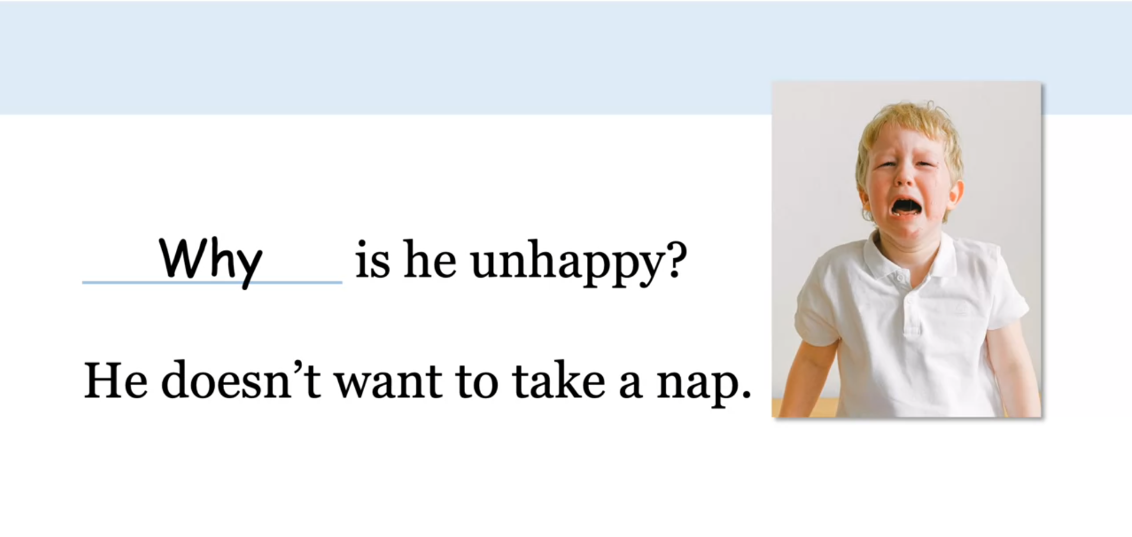
Here the answer is, they take the bus. The question is, how do
they come to school? How asks about how
something happens, a process, or a condition.
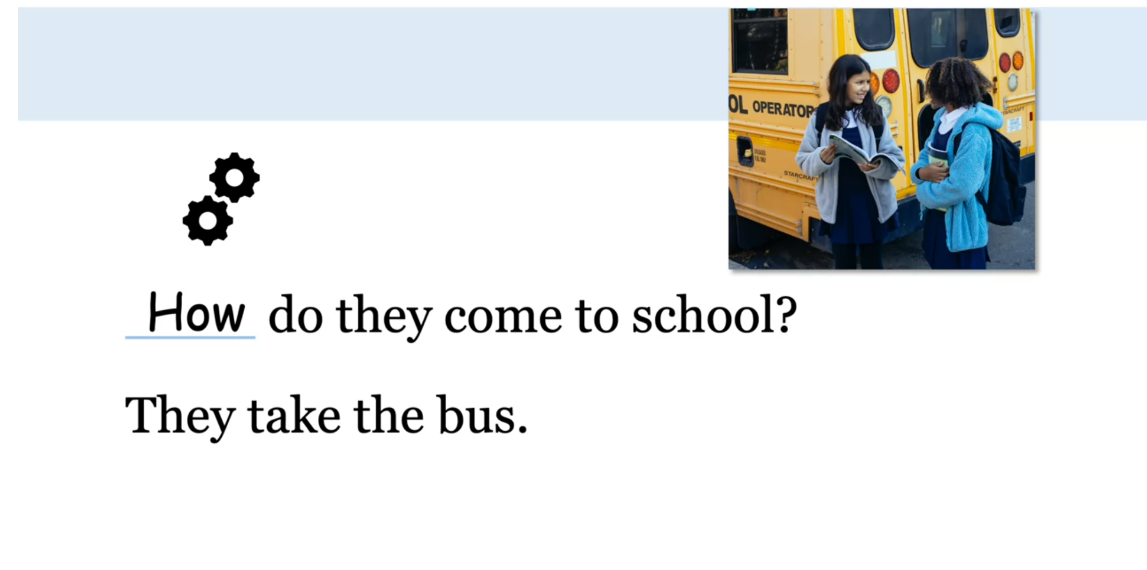
Here the answer is
they live in Texas. I see a map. Where.
Where do they live? They live in Texas. Where asks about a place. What goes in the blank? What. What is in the
box? I don’t know. It’s a surprise. What asks about a thing.
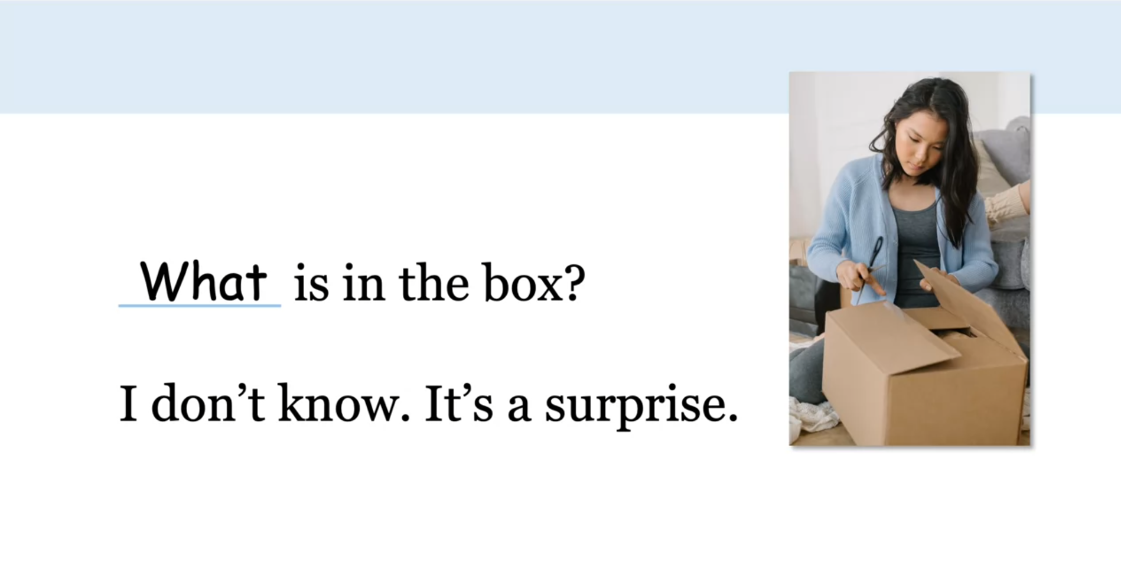
Here I have two cupcakes, and the answer is, I would like the chocolate cupcake, please. The question is, which? Which cupcake do you want? I would like the chocolate
cupcake, please. Which gives you a choice
between different things.
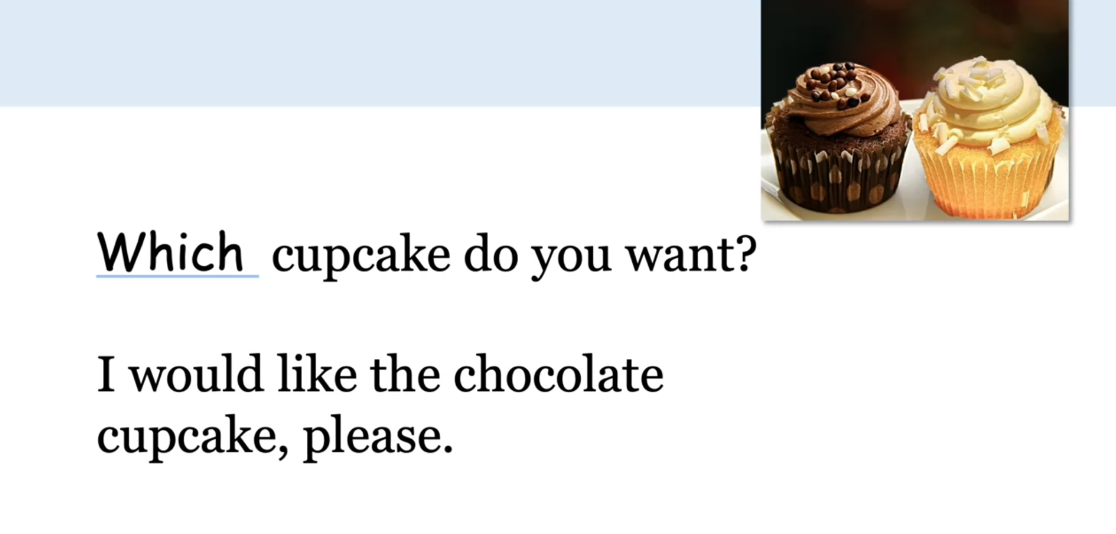
Last one, he is the new
computer programmer at work. His name is Billy. Who? Who is he? Who asks about a person. Who is he? He’s the new
computer programmer at work. His name is Billy.
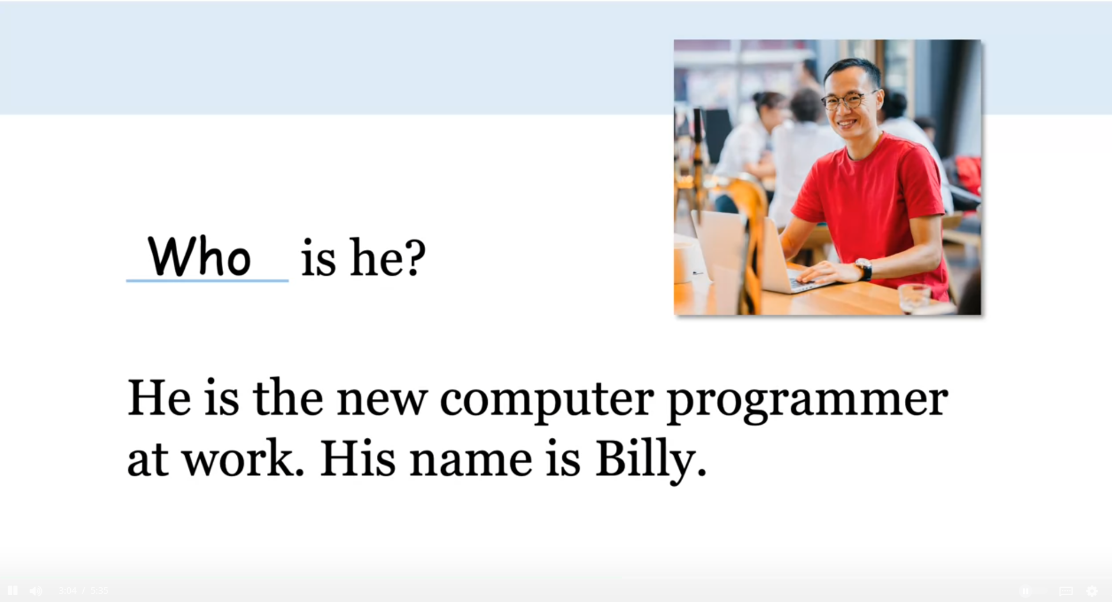
Let’s look now at how
to make a question with the question word
how and an adjective. Here is a picture of a giraffe, and here is the adjective tall. We can put how
before tall and ask, how tall is a giraffe? It is 18 feet tall.
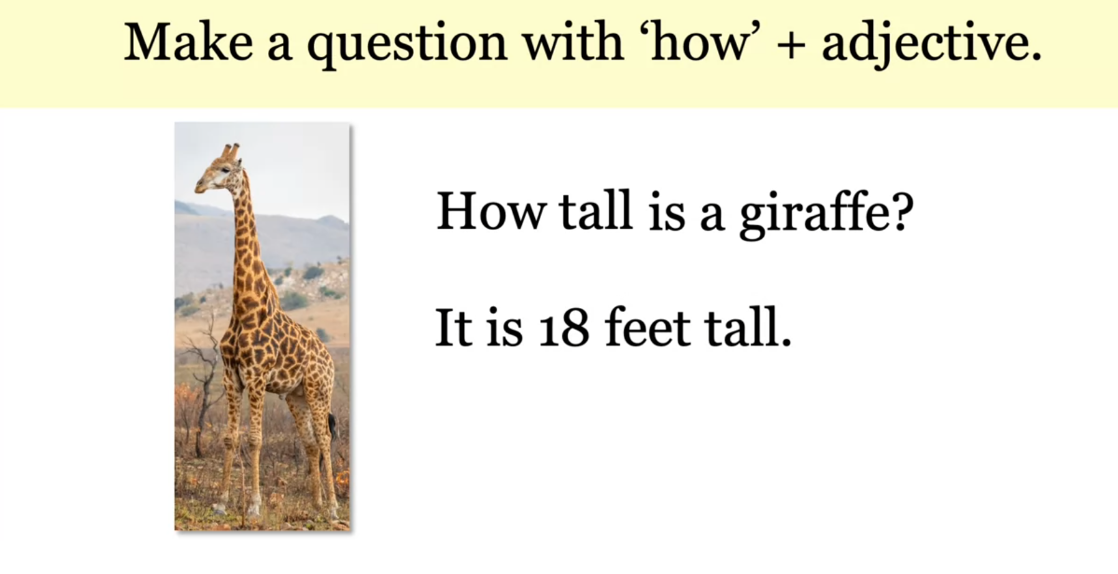
Here’s a movie and the
adjective is long. Start with how. How long is the movie? It’s two hours long.
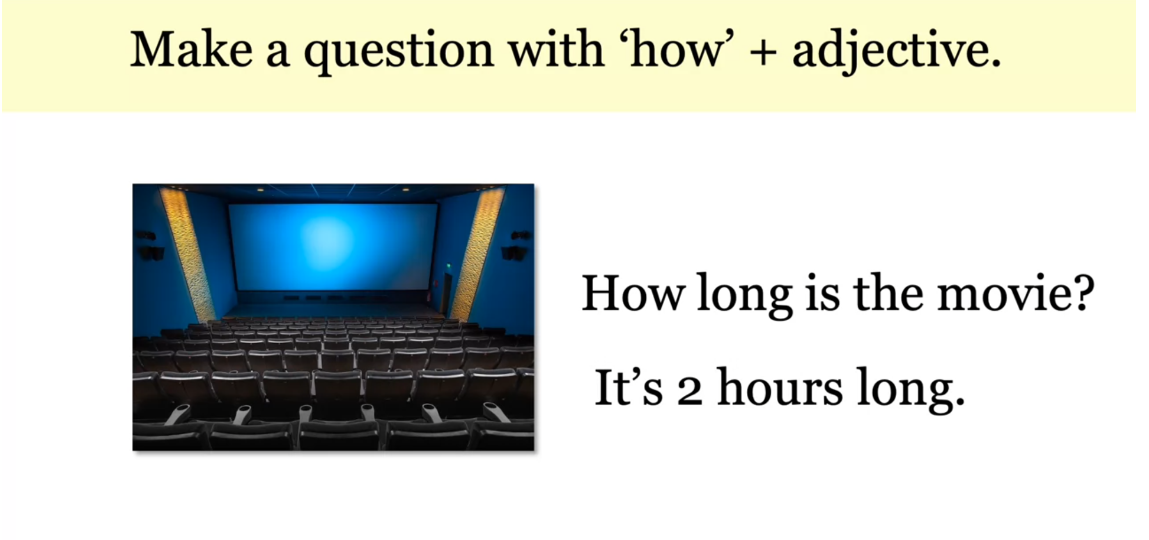
One more. Here is Benjamin. I want to know old. How old is Benjamin? He is four years old. There are other ways
to ask questions. We won’t look at all of
the ways in this lesson. But here’s some other examples and you probably hear
these questions. What time is it? What
is the weather like? Would you like some tea?
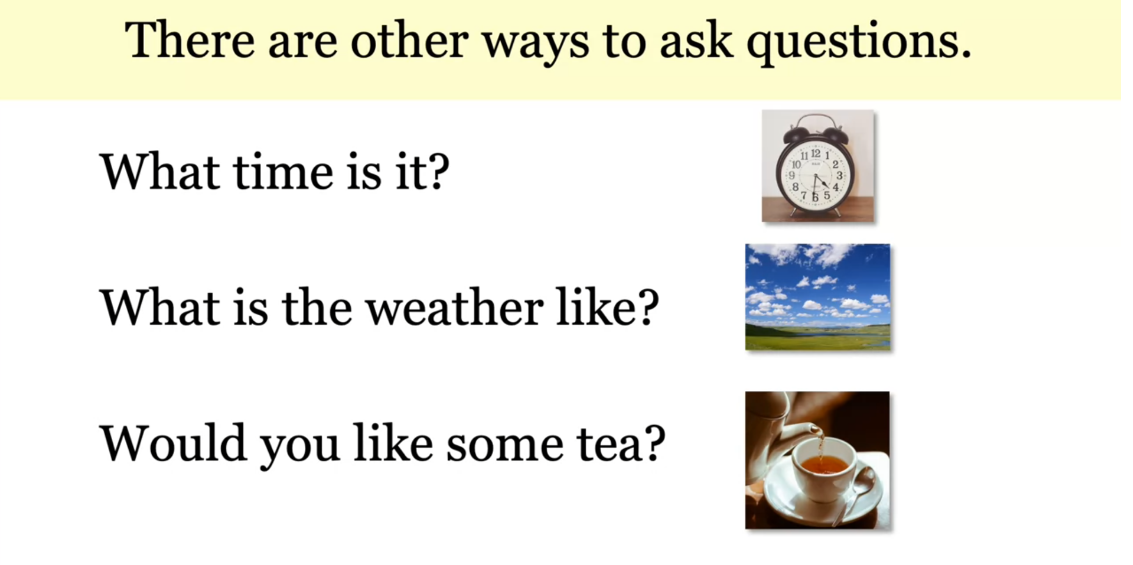
One last thing. Be careful with who and how. These words have the
same three letters, but a different order. I can ask you these
two questions, who are you and how are you? Who are you? I’m Sophia. How are you? I’m fine, thanks. There’s a difference. Who asks about a person and
how asks about a condition.

Now you know some
question words. There were seven we
reviewed in this lesson. Can you remember what they are? What, where, why, when, who, how, and which.
Question Words (Practice Exercise)
Exercise
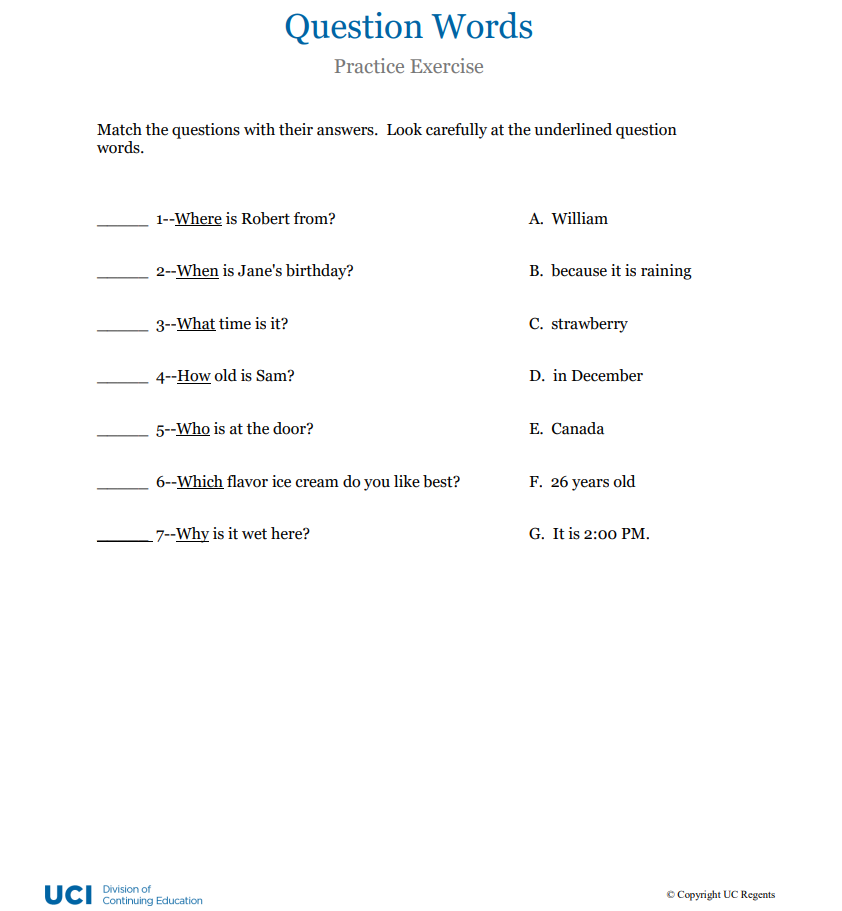
Answer

Information Questions BE
Information questions with BE. Are you at the airport? When is your flight? What is your flight number? Where is the gate? Why is it late? Let’s look at these questions. The first question, are you at the airport is a
yes/no question. You know how to make
yes/no questions. The other questions are
information questions because the answer to these
questions is not yes or no. It’s more information. Notice that all of
these questions begin with a question word: when, what, where, and why.
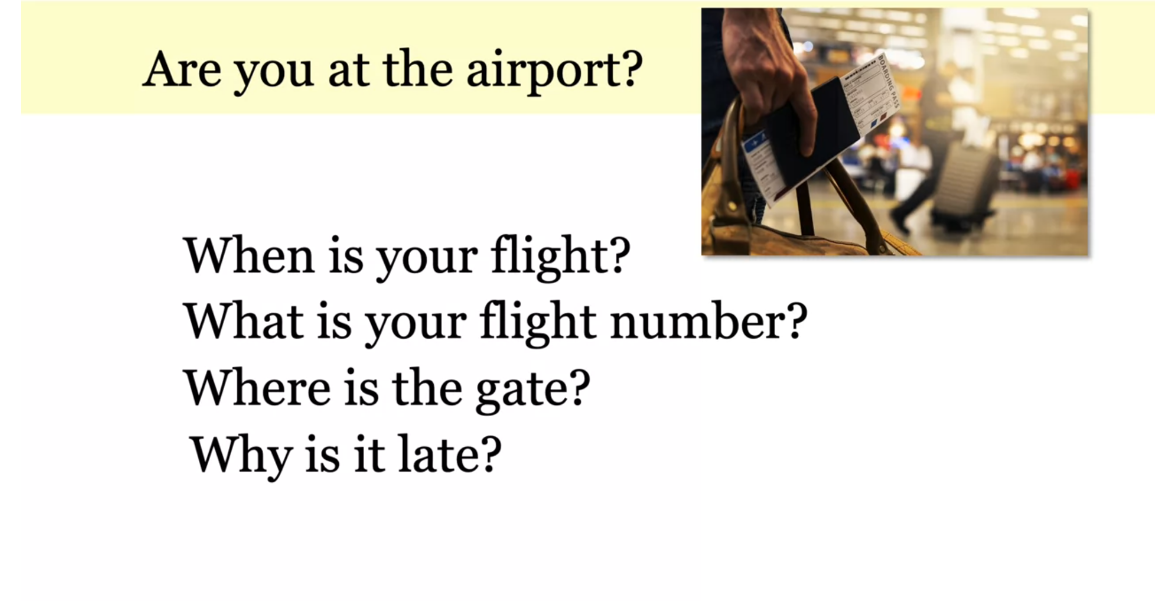
First, remember, yes/no
questions with BE. Is he a child? Yes, he is. Is he alone? Yes, he is. Is he lost? Yes, he is. All of these
questions begin with the verb be and
then the subject.
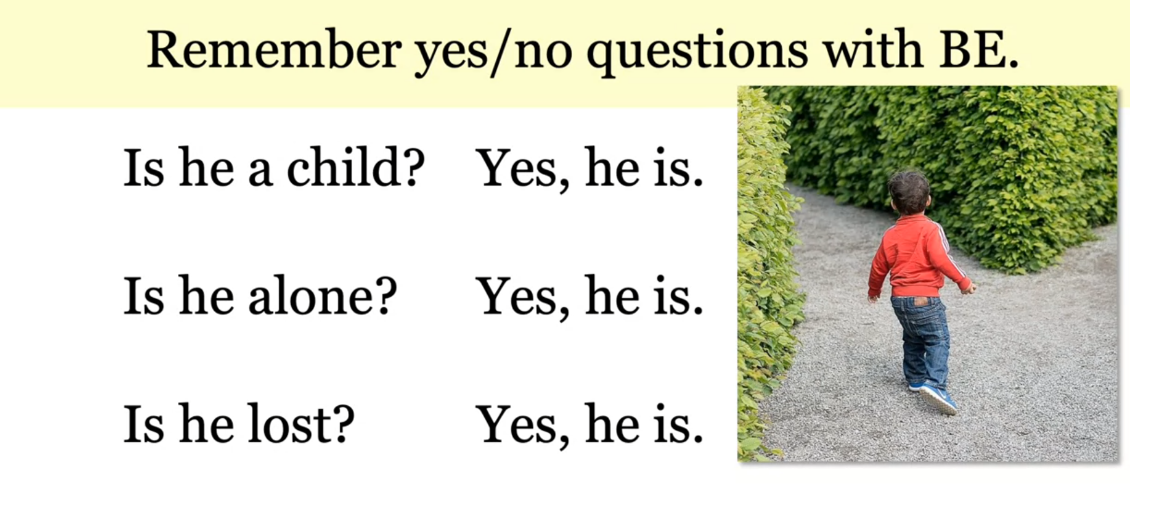
Let’s say we want more
information about this boy. We want to ask
information questions. We put a question word before the yes/no question to form
an information question. Who is he? Where is he? Why is he lost? Notice all of the
question words. Let’s look at how to form
information questions. But let’s begin with
a yes/no question. Is she a lawyer? Yes, she is. To form
information questions, put the question word in front. Who, what, where, why, when, and how are some question
words that we are going to use to make questions
about this woman. We start with a
question word out in front and all of
these questions will have the verb be in the form of is because we’re asking
about this woman. Let’s try. Who is she? She’s Victoria. What is her last name? Jones, Victoria Jones. Where is she? She is at the courthouse. Why is she at the courthouse? She has a meeting. When is her meeting? It is at 11:00 a.m.
How is Victoria? She is busy, but she is fine.
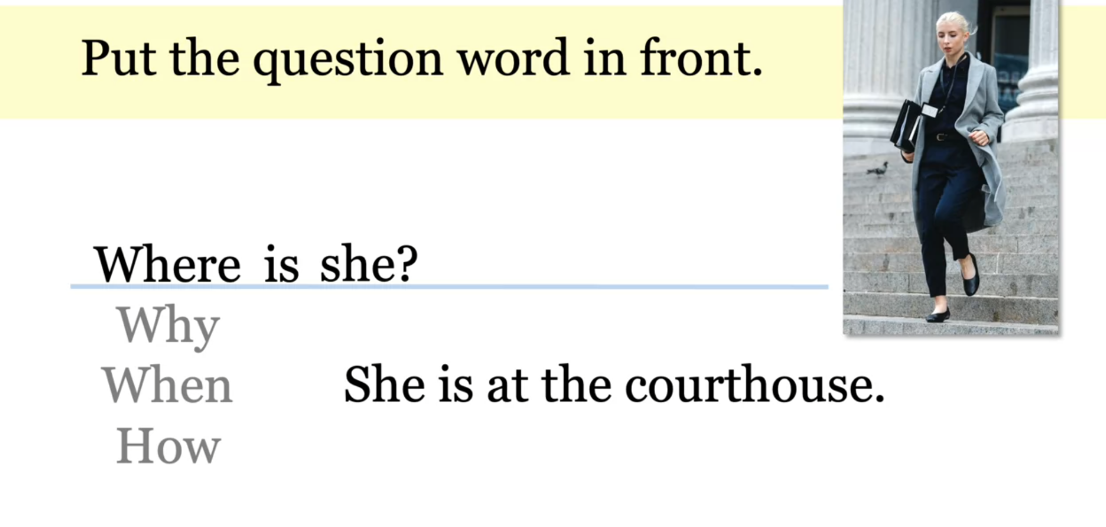
Now you see to make an
information question, question word goes first, then the be verb, and then the subject. The subject could be
a pronoun like you, he or they or the
subject could be a name like Bob or a noun
like a dog or books. Let’s practice. What
are the questions? You have the answers. They are nurses, they at the hospital, and
they work their. So you need a question word, a be verb, and then the
rest of the information. Are you ready for the answers? Okay. Who are they? They are nurses. You could also ask
what are they if you were focusing on the job. Where are they? They
are at the hospital. Why are they there? They work there.
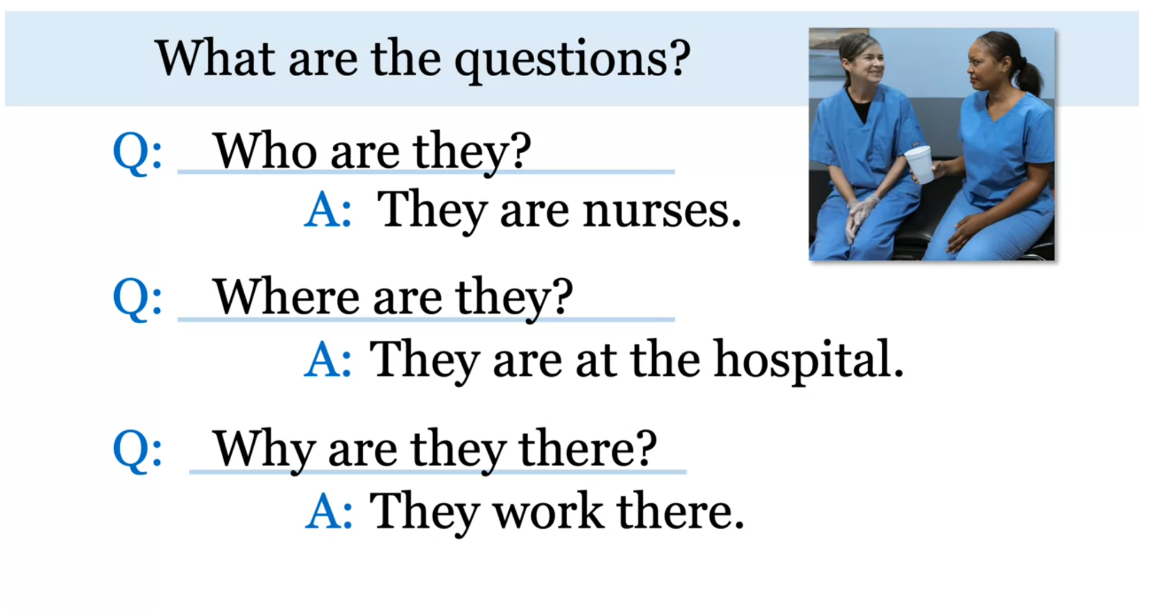
Let’s try another. What are the questions? The answers are,
it’s a Sequoia tree, it’s 230 feet tall, it’s over 2000 years old. Remember, start with
a question word. Also remember, you can
use the question word how and an adjective
to ask a question. Ready? What is it? It’s a Sequoia tree. How tall is it? It’s 230 feet tall. How old is it? It is over 2000 years old.
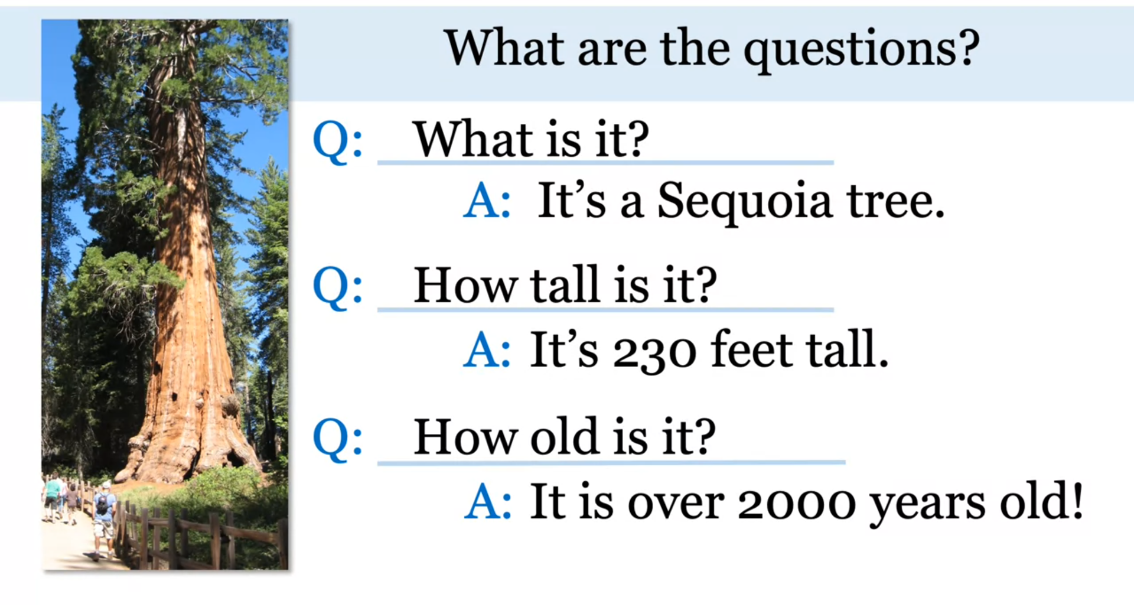
In this lesson, you
learned to form an information question
with the be verb, put the question word in
front. Where are you? I’m at the airport. Where
is the question word? When is your flight?
It’s at 4:15. When is the question word here?
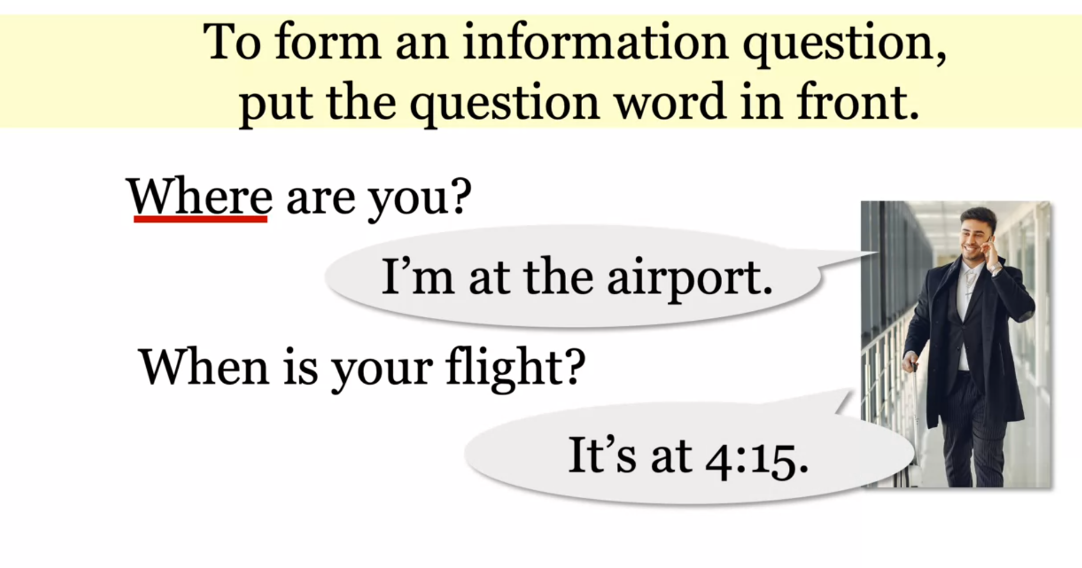
Information Questions BE (Practice Exercise)
Exercise

Answer
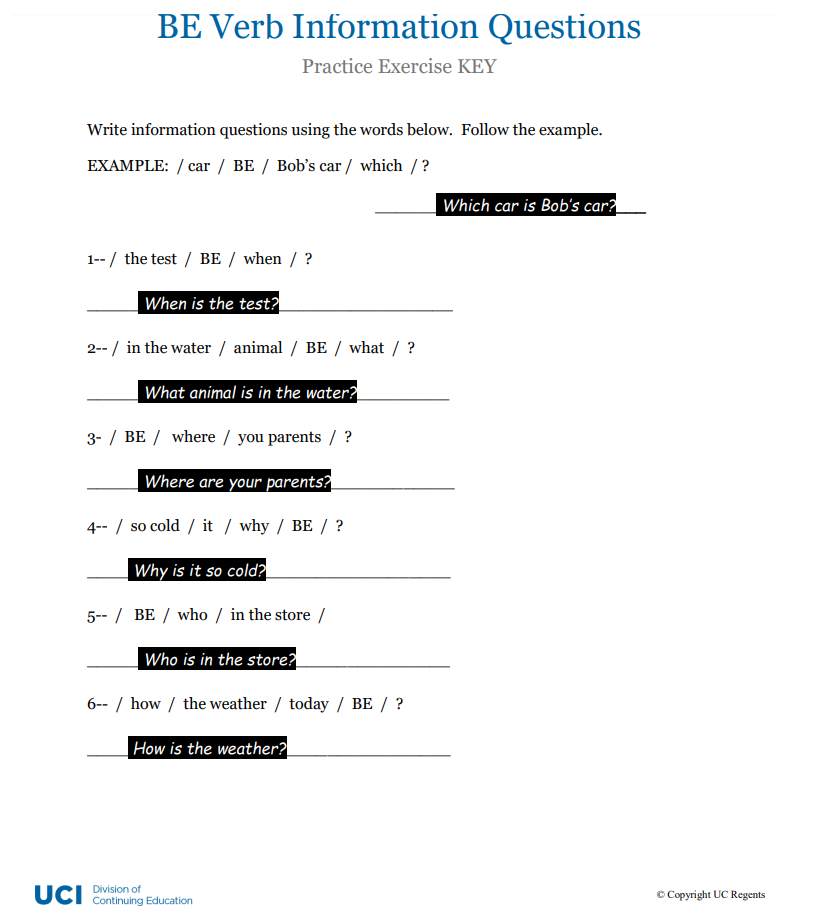
Information Questions Simple Present
Information questions,
simple present. In this lesson,
you will learn how to form information questions with all verbs in the simple
present except for be. What do you know
about polar bears? Where do they live? They live in the Arctic Circle. What do they eat? They eat fish and seals. How long do they live? They live about 30 years. Notice these questions, these are information questions
in the simple present. They all begin with
a question word, and then they all have
do to ask the question followed by the
subject and the verb.
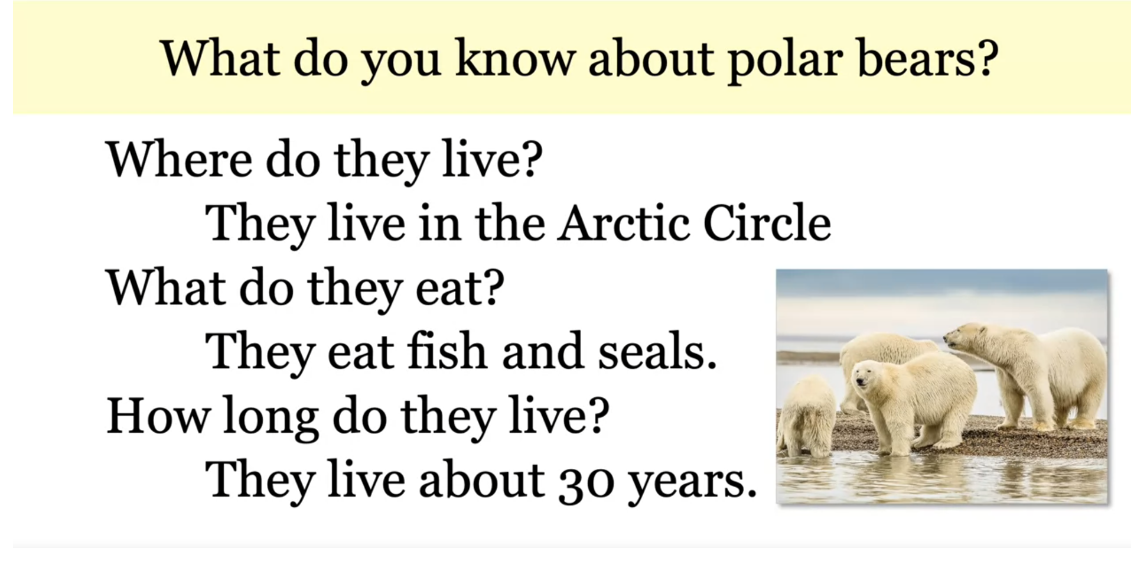
Let’s take a closer look. Do you remember yes/no questions
in the simple present? Do you remember that they
all begin with do or does? Here’s a reminder. Yes/no questions begin with
do or does followed by the subject and then the
verb in its simple form. Put the question word in front to form an information question. Let’s start with a
yes/no question. Does Jason drive to work? Yes. Yes, he does. When does Jason drive to work? 8:30. What does
Jason drive to work? A car. Who does
Jason drive to work? His friend, Jack. Notice, all of these questions are like the yes/no questions. They have does, because
Jason is the subject, and drive, which is the
verb and it’s unchanged. It’s in its simple form. The subject, Jason,
is in the middle, and the question
word is in front.
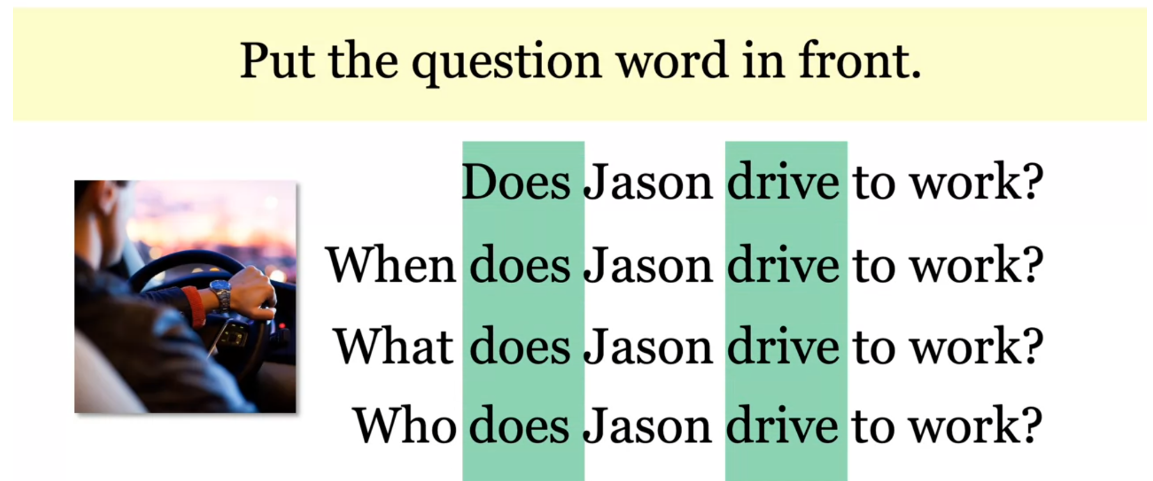
Let’s look at some more. Here’s another example.
This is Tigger. Does Tigger watch TV? Yes. Yes, he does. When does Tigger watch TV? Maybe all of the time. Where does Tigger watch
TV? In the living room. Why does Tigger watch TV? I don’t know. Look
at the questions. They all follow the same
pattern as the yes/no question. Does and watch
make the question. Tigger is the subject and the
question word is in front.
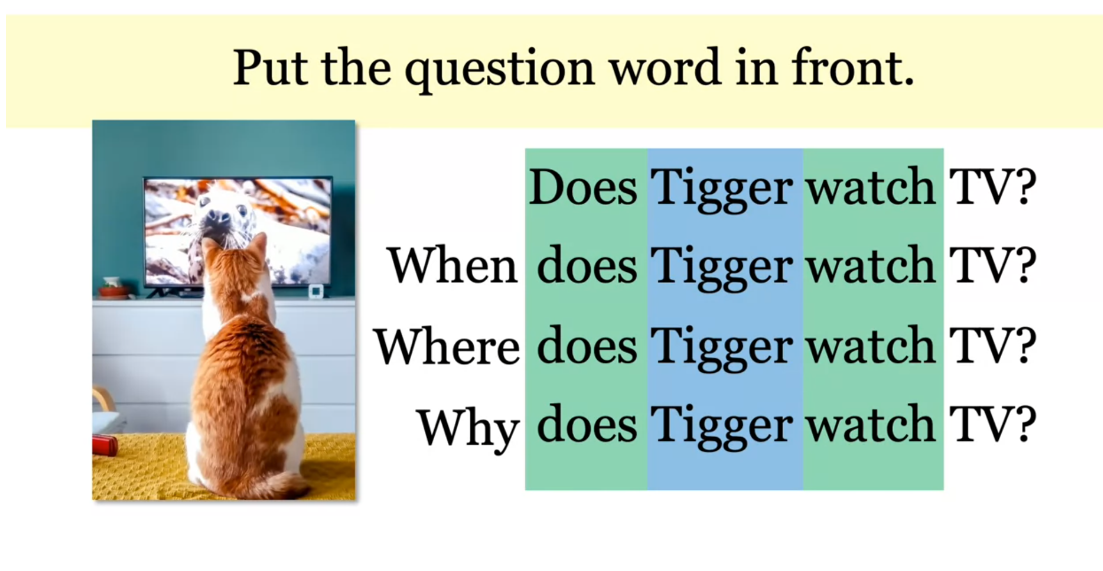
Let’s look at some
more examples. Does she cook? Yes, she does. This is a yes/no question. Let’s change that D. Now, we will put the question
words in front. What does she cook? She cooks vegetables. Where does she cook? She cooks in a restaurant. When does she cook? She cooks from 12:00-7:00. Why does she cook? She cooks because it is her job. Who does she cook? No, this is not possible. She doesn’t cook a person. We could say who
does she cook for, but that’s a different
kind of question. How does she cook? She cooks very well. She’s an excellent
chef.
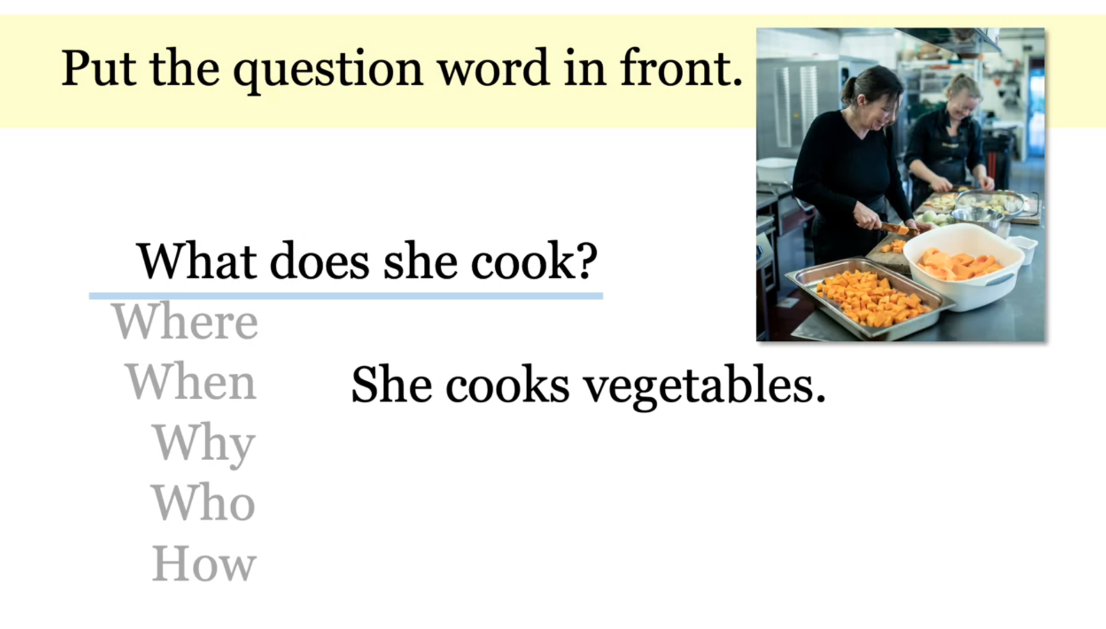
Okay, you try. What question word do you
need to make these questions? You have the answers. They study law. They study in the library. They study in the afternoon. You have the yes/no question
already, do they study? You just need the
question word in front. Ready for the answers? What do they study? They study law.
Where do they study? They study in the library. When do they study? They study in the afternoon.
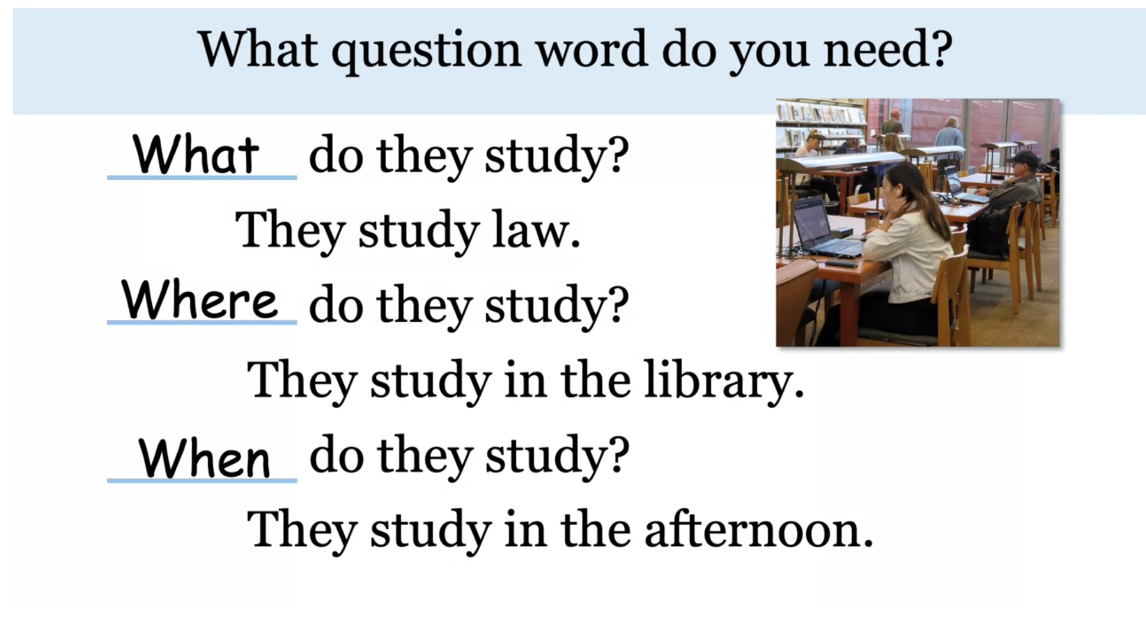
Okay. One more? What are the question words? This is a bald eagle. It lives in North America. It eats small animals. Where does it live? What does it eat? What is the correct word
order to make the question? When do they play soccer? They always play on
Saturday mornings.
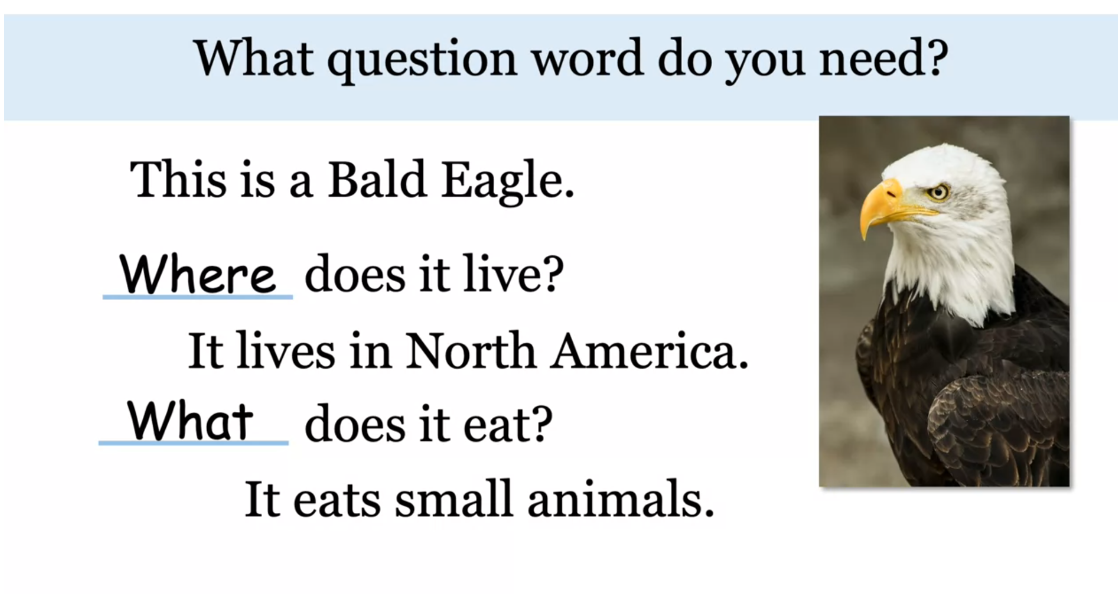
What is the correct word order? Where does Sophie work? She works at a hotel downtown. What is the correct
word order here? Why do you study
English? I don’t know. Why do you study English? What is the correct order here? Last one. We have two dos. Where do you do your homework? Remember, the first do
is to ask the question, and the second do is the
verb do, do your homework. In this lesson, you learned to form an information question, put the question word in
front of a yes/no question. Where do they live? They live in the Arctic Circle. Where is the question word. What do they eat? They eat fish and seals. What is the question word here.
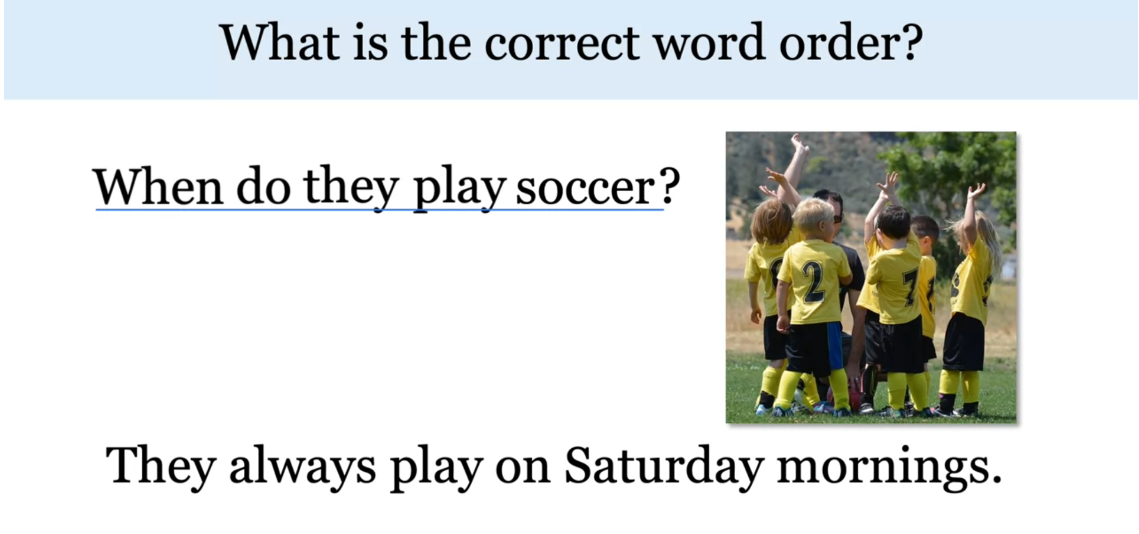
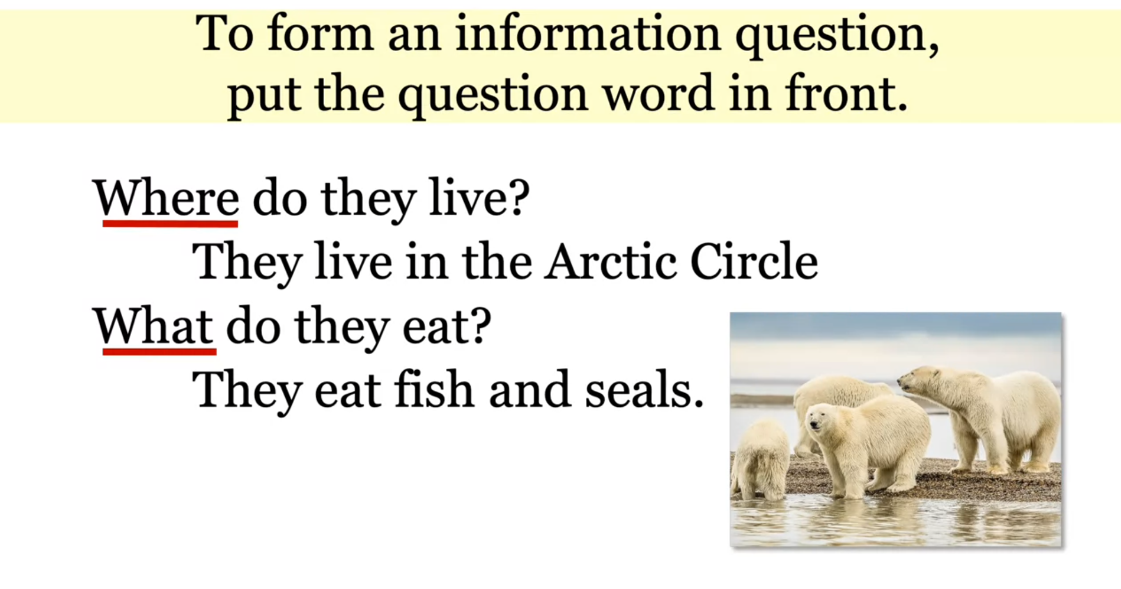
Information Questions Simple Present (Practice Exercise)
Exercise
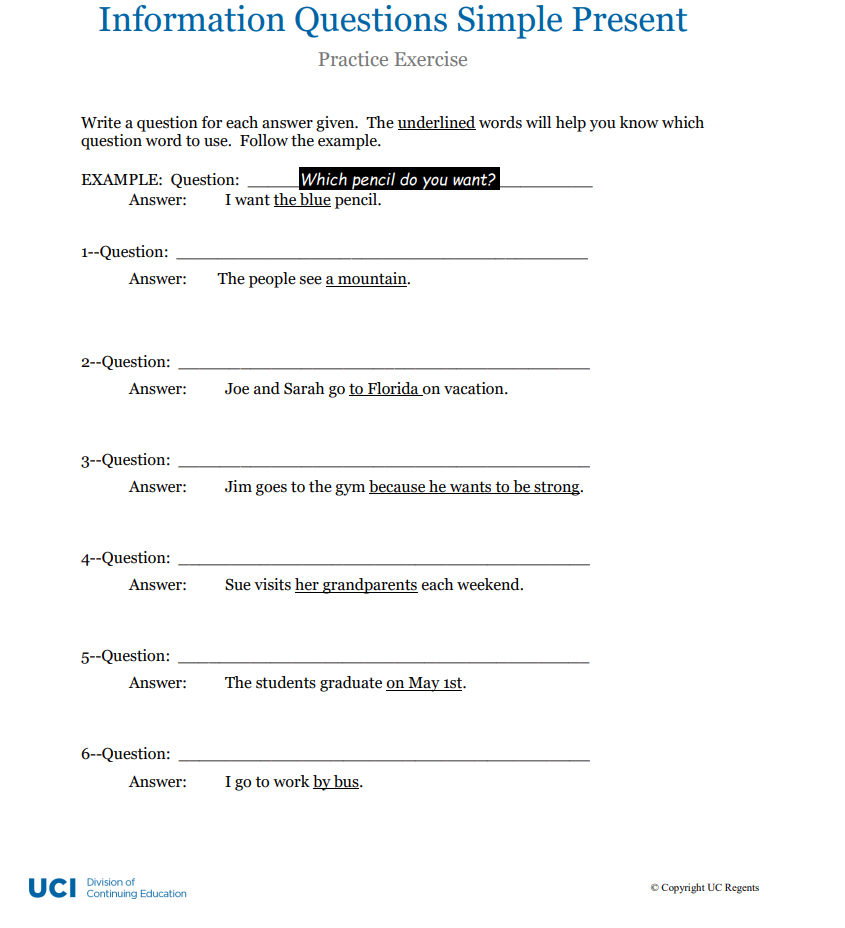
Answer
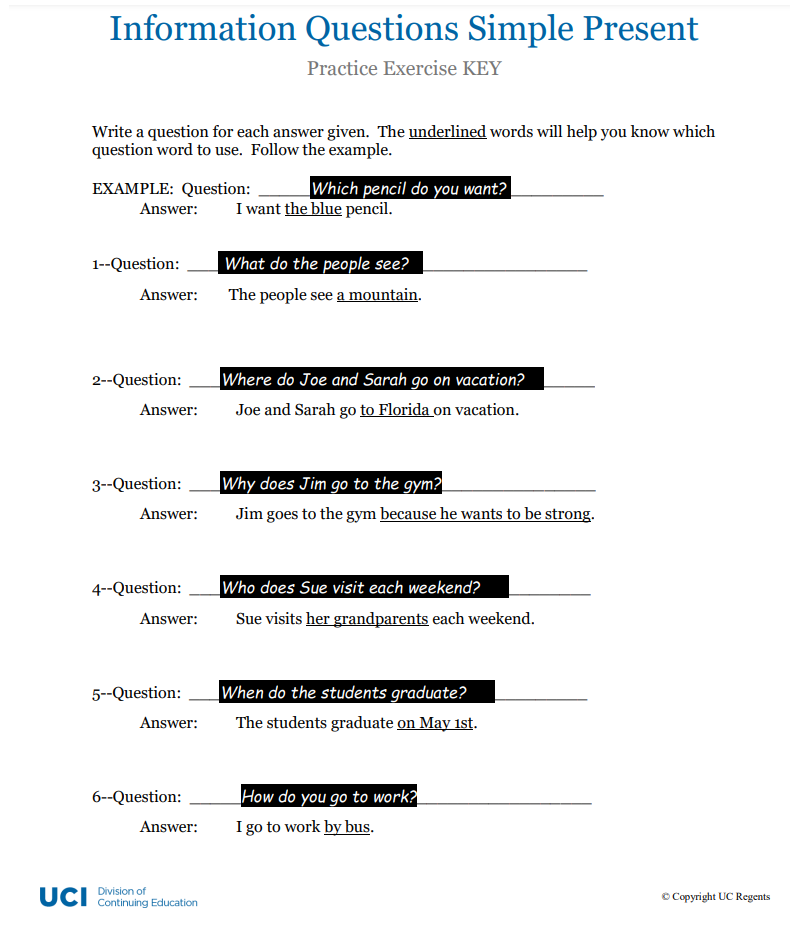
Quiz: Information Questions Simple Present
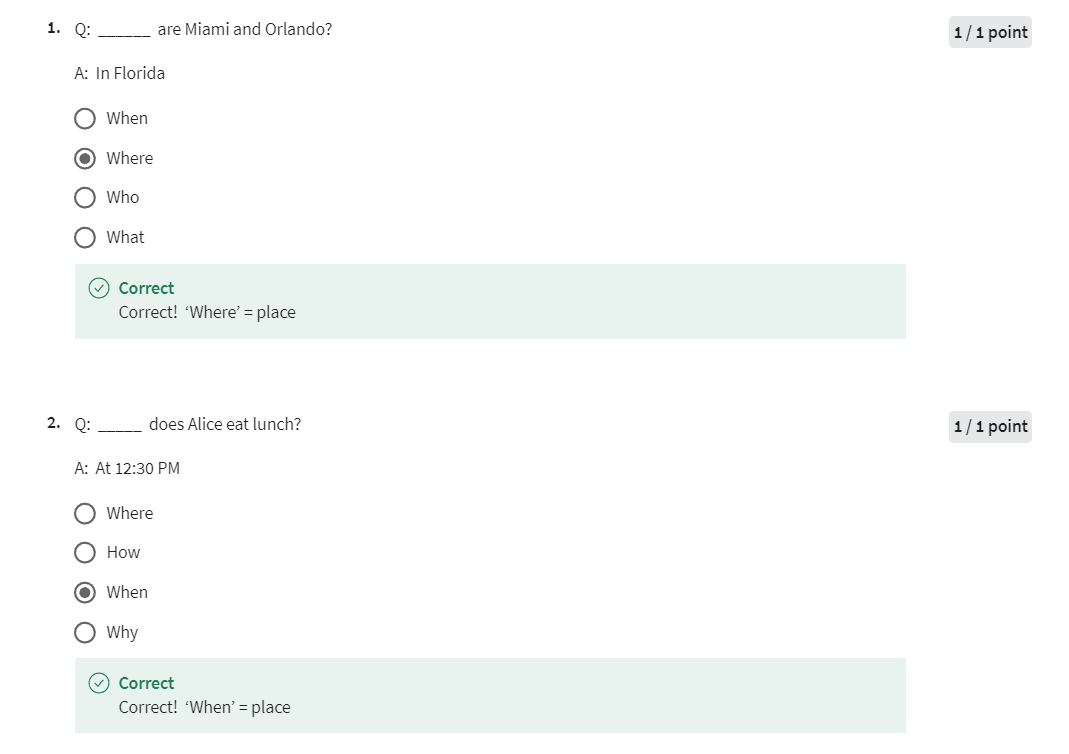
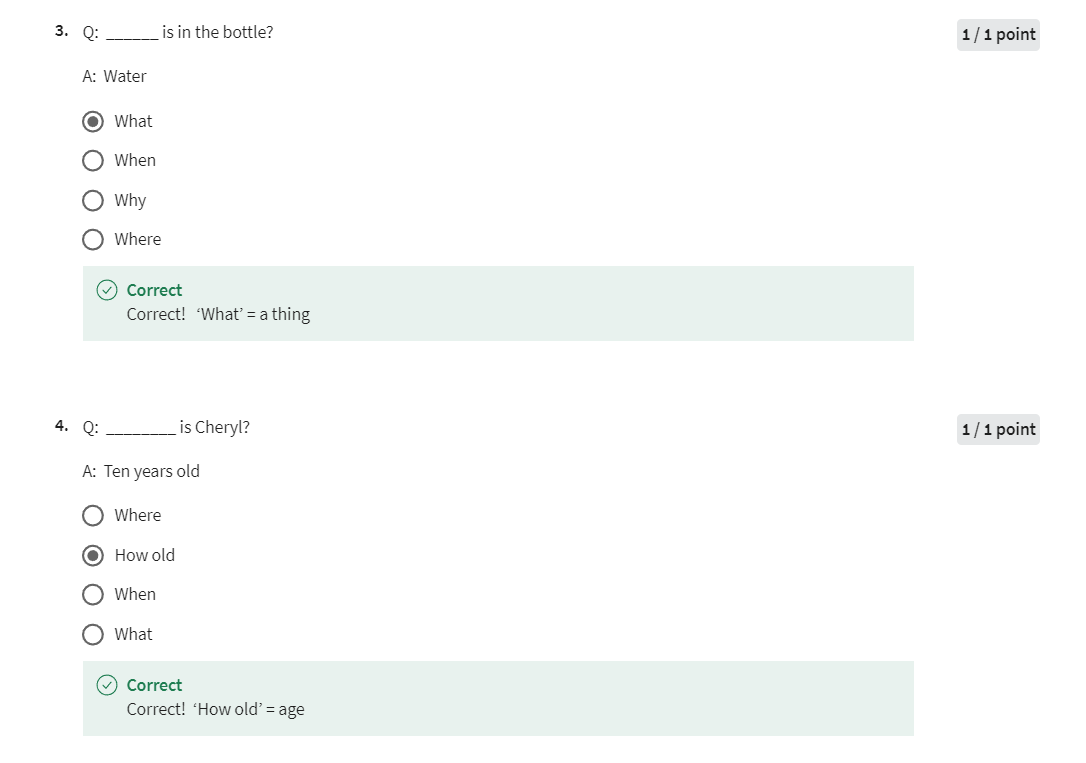

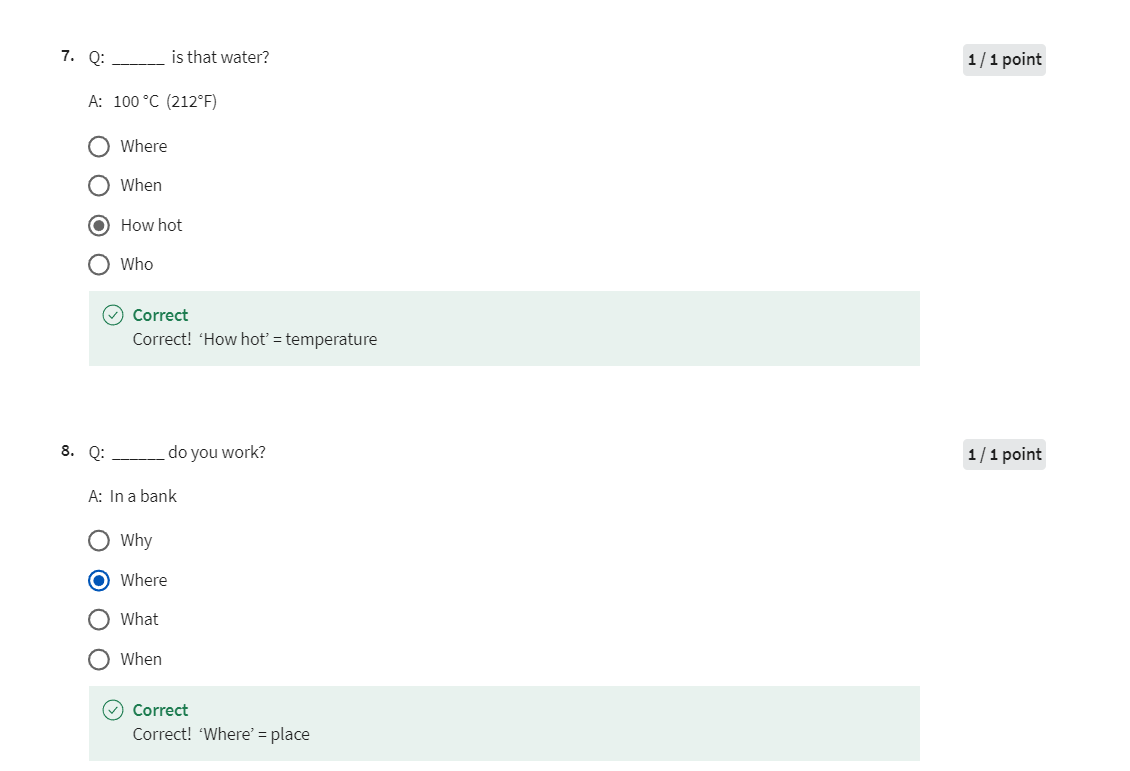
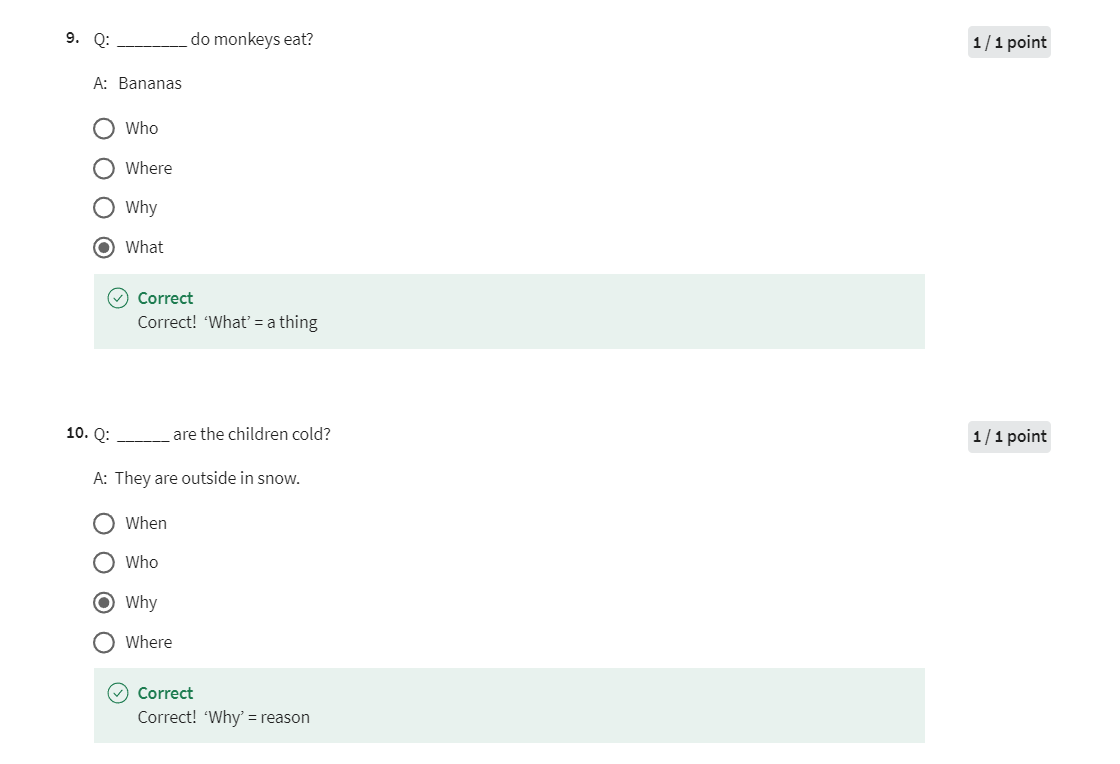
Week 02: Count/Noncount Nouns & Present Progressive
This week, you will learn more about nouns: count nouns and non-count nouns. This will help you ask questions like “How many brothers do you have?” and “How much time do you need?” Then we will look at the present progressive. This is another verb tense in English. The present progressive tells about things that are happening now. You will learn about how to form it and also how to make the negative.
Learning Objectives
- Identify count and non-count nouns.
- Form the present progressive.
识别可数名词和不可数名词。
构成现在进行时。
Count/Non-Count Nouns, How Many & How Much
How many, how much, count and noncount nouns. Let’s make a cake. How many eggs do we need? How much flour do we need? How much salt do we need? How many cups of
milk do we need? How much butter do we need? Look at these questions. They begin with how many, how much, how much, how many, and how much. When do we know, when do we use how many and
when do we use how much?
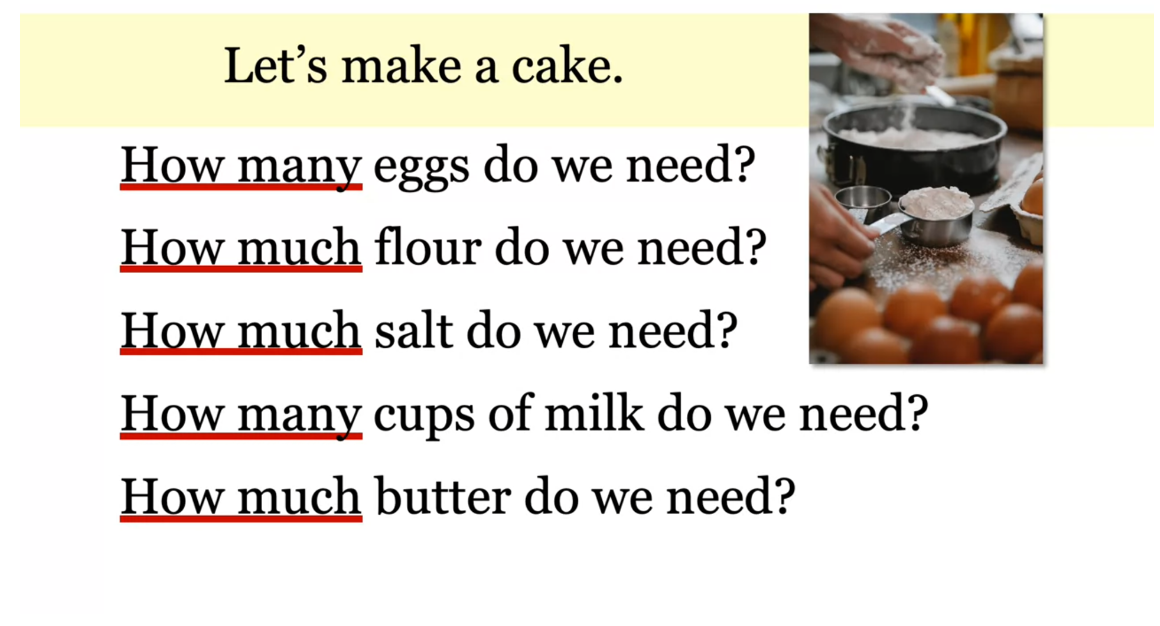
Well, to understand this, first, we have to look at count
and noncount nouns. We use how many and how much with count and noncount nouns. How many eggs do we need? How many goes with eggs
because eggs is a count noun. How much flour do we need? How much goes with flour because flour is
a noncount noun.
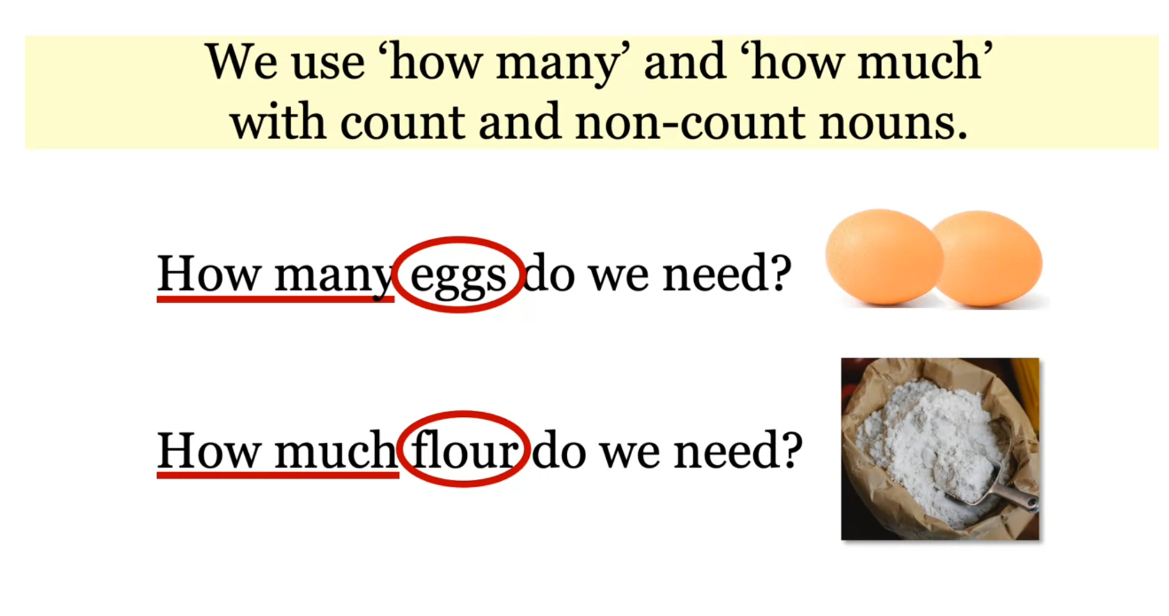
Let’s look at the difference. These are count nouns. One egg, two eggs, one pepper, three peppers, one cookie, 20 cookies. These are called count nouns
because we can count them. Two eggs, three
peppers, 20 cookies.
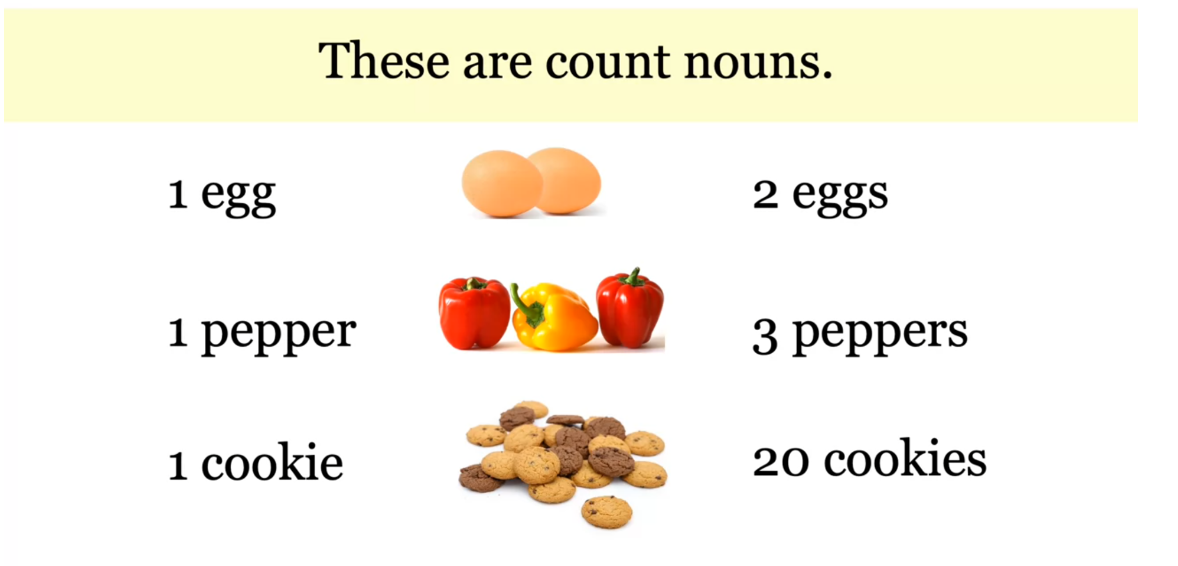
These are noncount nouns:
water, sand, hair. Look at water. I can’t count water, I can’t say one water, how much is one water? I can put water in a bottle
and count the bottle, one bottle of water, but I can’t count water. Look at sand. There are too
many little pieces here. I can’t count sand, so sand is also a noncount noun. Hair is the same. Now, hair, I could count
one hair or two hairs. But when I’m talking
about her hair, there are too many hairs
on her head to count. So hair is also a noncount noun.
There are many noncount nouns. Here’s some examples: ice, tea, butter, and cheese. We can only count them
when we put them in a container or measure them
like one piece of ice. Piece is countable, ice is not, but I can count
one piece of ice. I can also count one cup of tea, or one pound of butter, or one slice of cheese.

Back to our cake. How many eggs do we need? Three. One, two, three. How much flour do we need? Two. Two? Two what? I don’t know what that means. We need to measure it. We say two cups of
flour, and now, I can measure the flour and I can count it when
it’s in the cup. Two cups of flour.
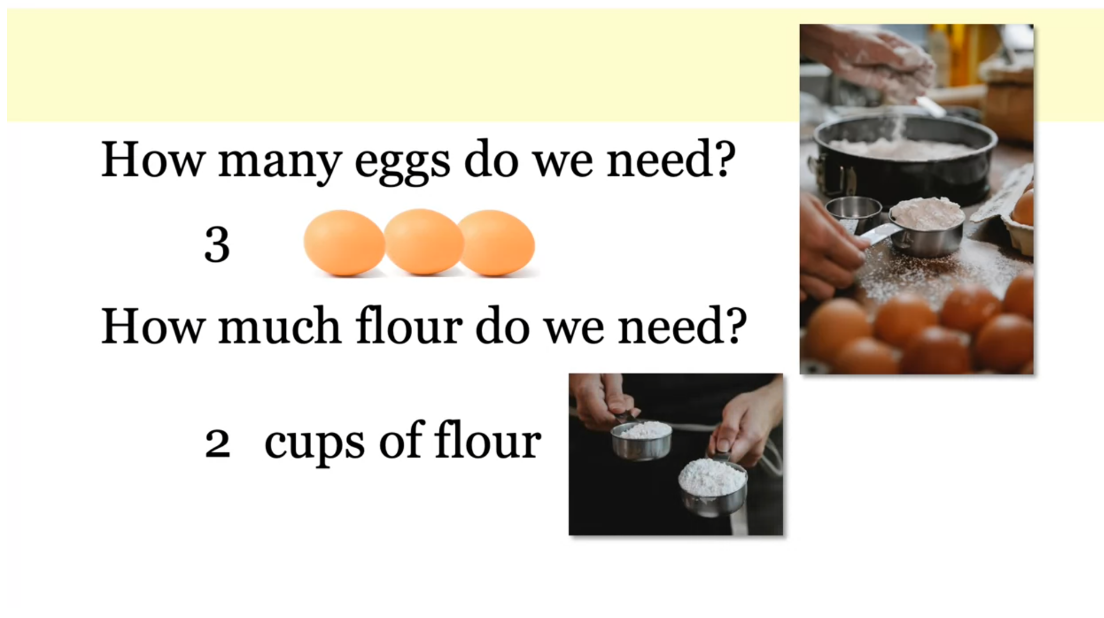
Let’s see if you understand. You are going to see a noun. Think, is it a count
noun or a noncount noun? Remember, if you can
easily count it, 1, 2, 3, it’s a count noun. But if you have to put it in a container or if you have
to measure it to count it, then it’s a noncount noun. Let’s look. Sandwich. A
sandwich is a count noun. Honey. Honey is noncount. Rice. Rice is also noncount. There are too many little pieces of rice for me to
count them all. Carrots. Carrots
is a count noun. Soup. Soup is noncount. Lemon. Lemon is count. Olives. I can count these
olives, that’s a count noun. Olive oil is noncount. Notice, a sandwich,
carrots, a lemon, olives, all of the count
nouns have an article or an s to show
singular and plural, but none of the count nouns do. If I want to make these
count nouns countable, I need to put them in a
container or measure them. A jar of honey, a bowl of rice, a bowl of soup, a bottle of olive oil. Now, I can count them.

Let’s make questions with
count and noncount nouns. We use how many with
plural count nouns and we use how much
with noncount nouns.

Cups of tea. How many cups of
tea do you drink? Coffee. How much
coffee do you drink? Because here, coffee is not
in a cup, so it’s noncount. Slices of pizza. How many slices of
pizza do you want?
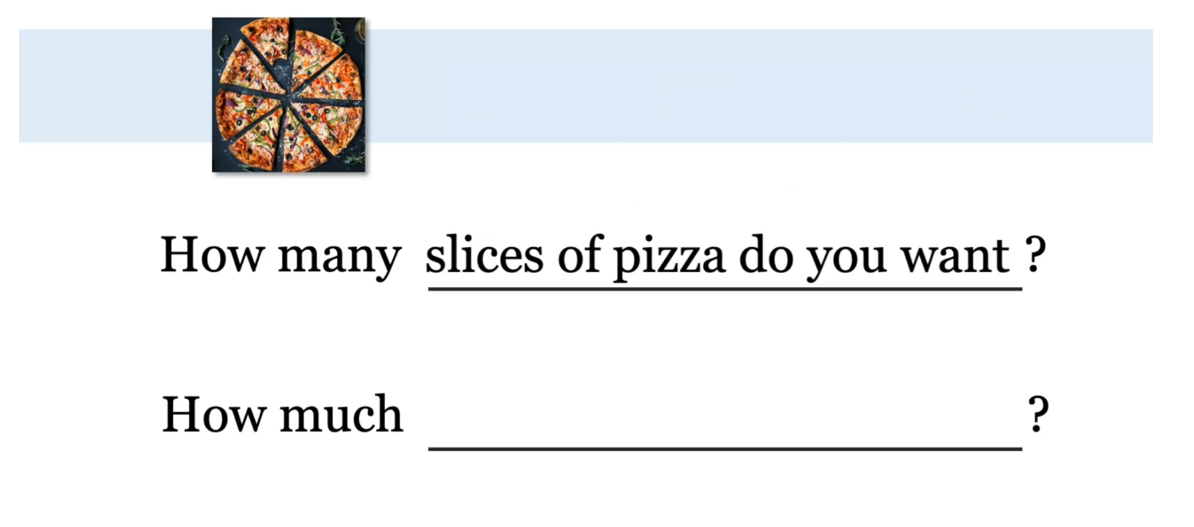
Snow. How much snow is there? Soccer. How much
soccer do you watch? Soccer is noncount. Sports are noncount?
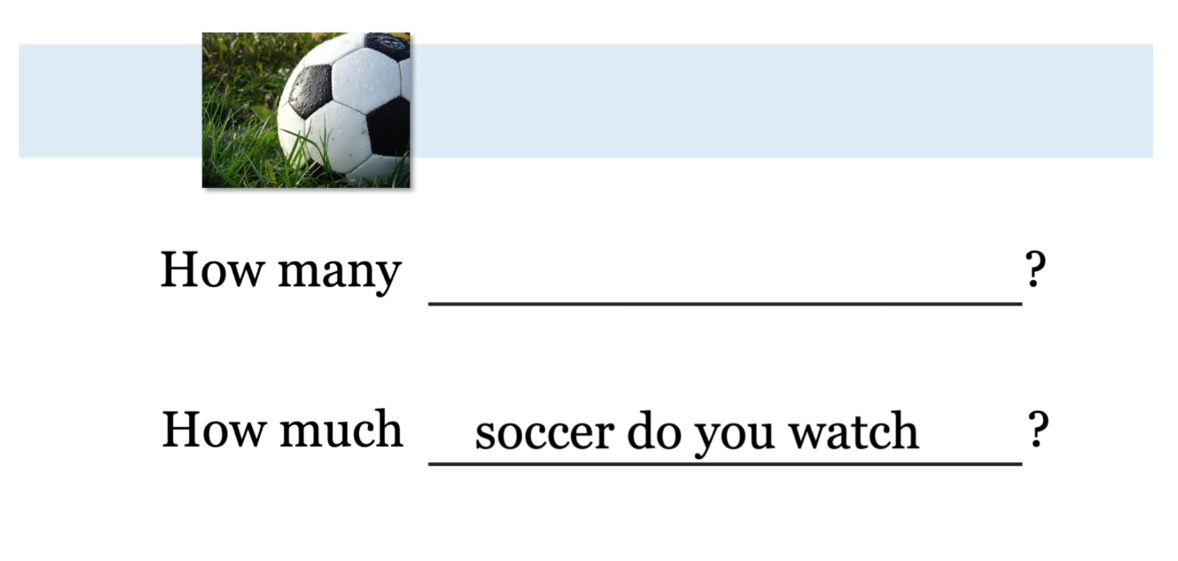
Soccer games. How many soccer
games do you watch? Because games is count. There are some tricky
noncount nouns. One is money. Money is noncount, and this may sound strange
because of course, we want to count money, but the word money is an idea. Dollar, dollar is different. Dollar is a count noun. I can count dollars, one dollar, two dollars. When you ask in a store, how much is it, you are asking how
much because you are asking how much money is it.
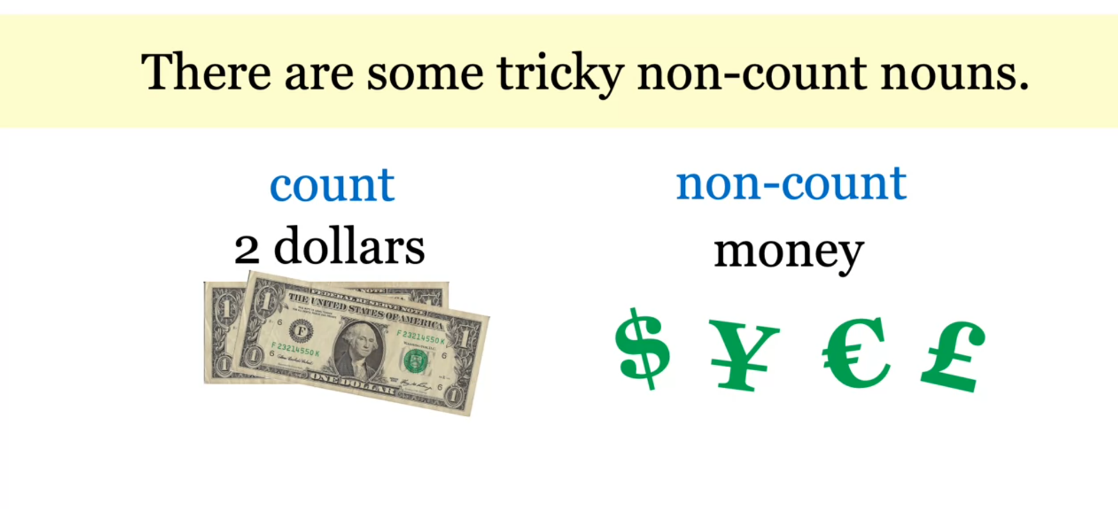
Here are some other
noncount nouns: information, work, and homework. We never put an s on these nouns because
they are noncount. How much information
do you need? How much work do you have today? How much homework did
the teacher give you? Use how many with
plural count nouns like eggs, carrots, and dollars. Use how much for
noncount nouns like rice, homework, and money.
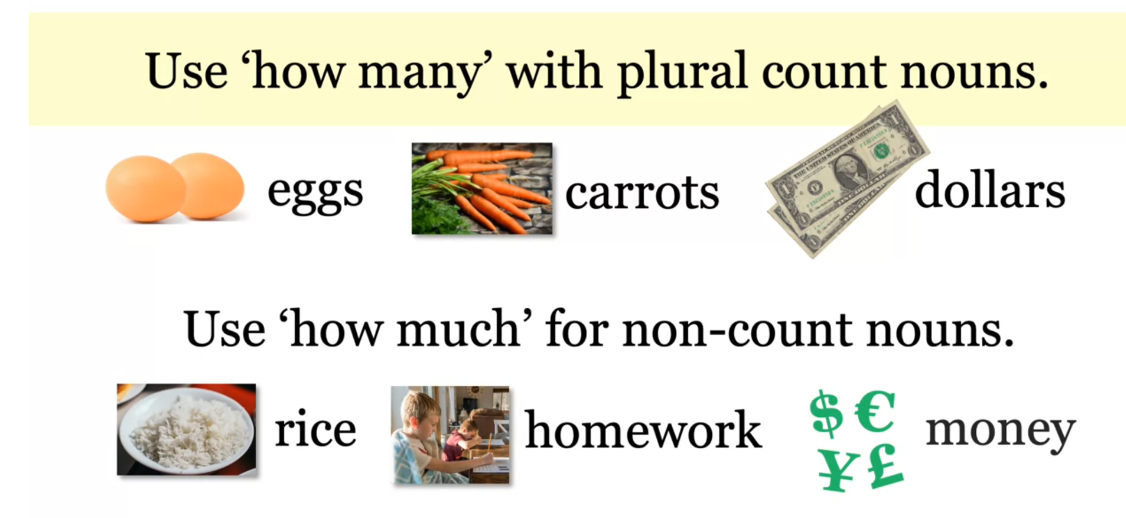
Count/Non-Count Nouns, How Many & How Much (Practice Exercise)
Exercise
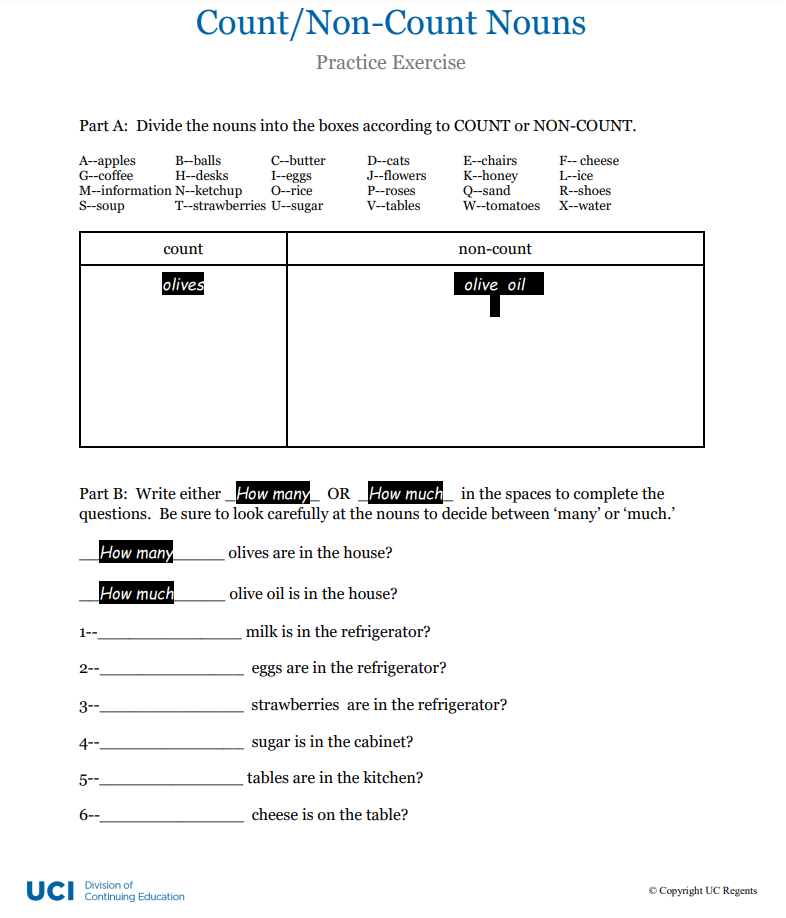
Answer
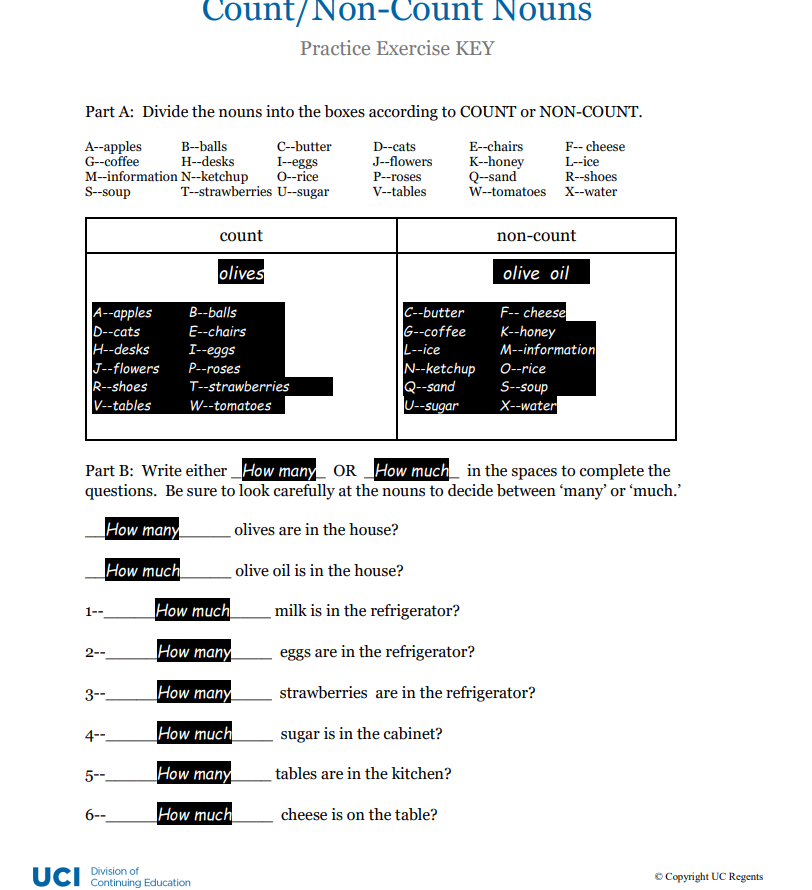
Present Progressive
Present progressive. Maria and her mother
are making sandwiches. Maria is putting lettuce
on the sandwiches. Her mother is
cutting an avocado. Notice these verbs: are making, is putting, is cutting. This is the present progressive, and we use it to tell
what is happening now.
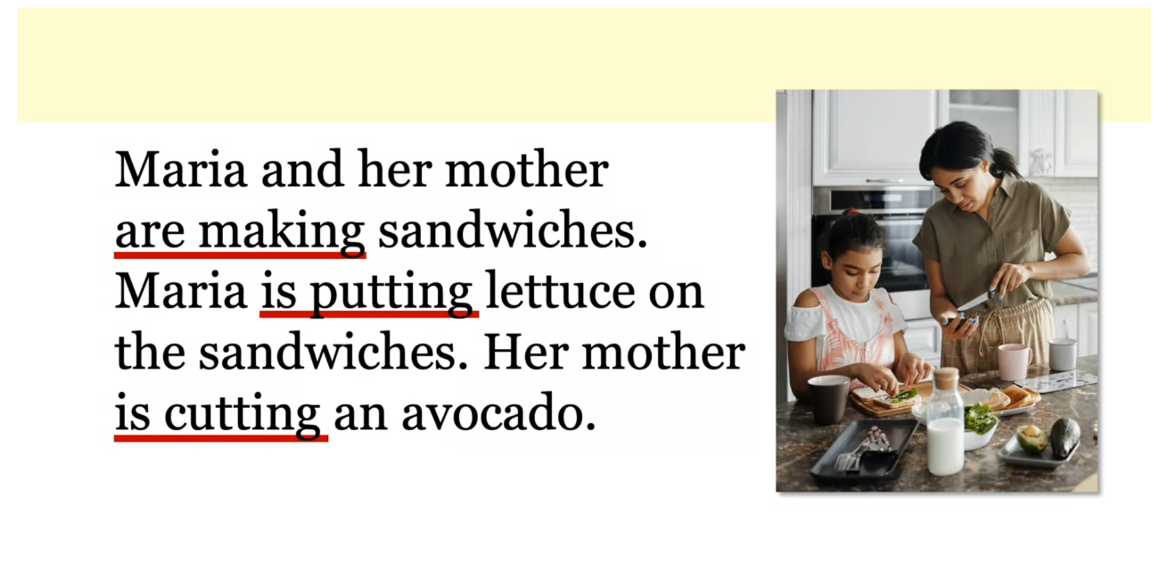
Form the present progressive
with BE and ing. So that means that we use
a form of the BE verb plus another verb with an ing ending to form the present progressive. In these two sentences, they are making sandwiches, she is cutting an avocado, the BE verb is are and is. It’s followed by
another verb plus ing, here, making and cutting. This is the present progressive.
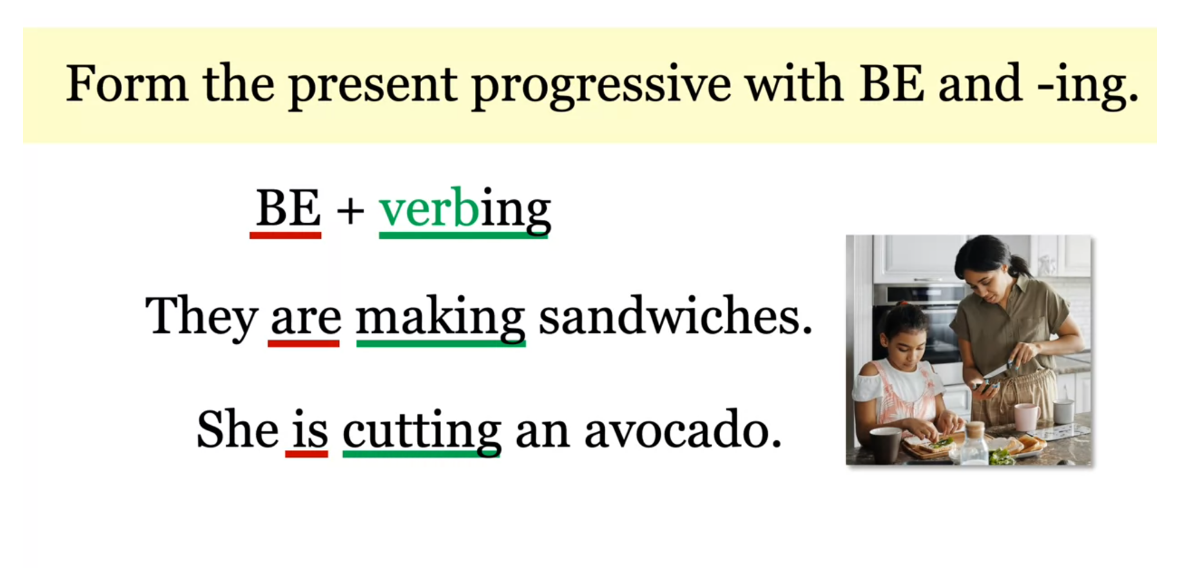
Here are some examples. He is ordering food. She is shopping. They are shaking hands. All of these things
are happening now. You can see in all
of these sentences, we have a BE verb and another
verb with an ing ending. There are some spelling rules. For many verbs, just
add ing, like ordering. For some verbs,
we need to double the consonant and add
ing, like shopping. For still other verbs, we need to drop an E and
add ing, like shaking.
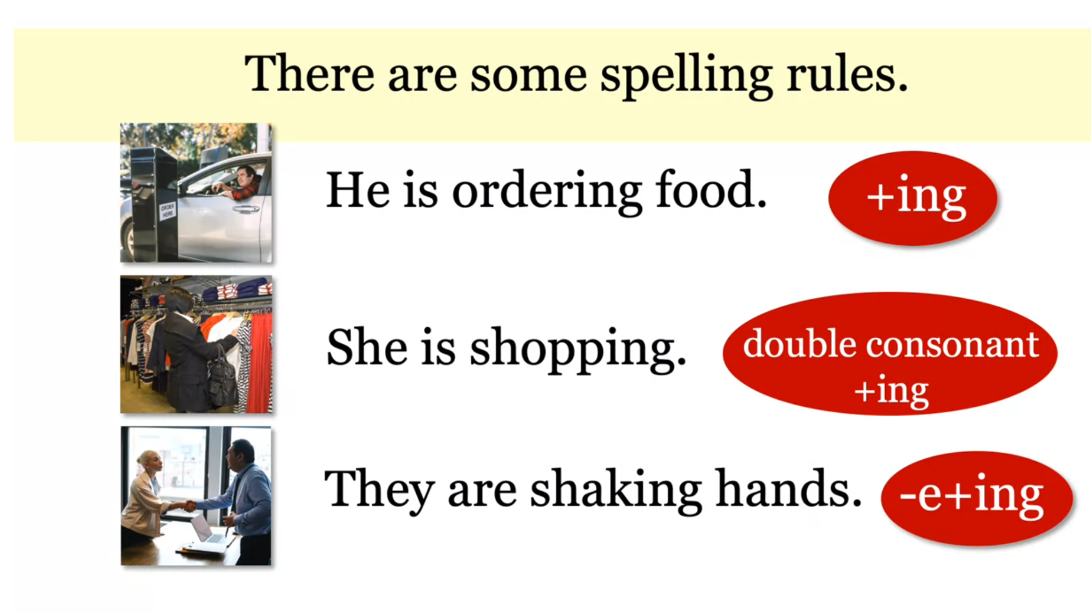
Let’s take a closer look. For many verbs, just
add ing, play, playing, climb, climbing, drink,
drinking, and think, thinking. They are playing in the snow. They are climbing a wall. She is drinking
coffee and thinking. All of these things are
happening right now.
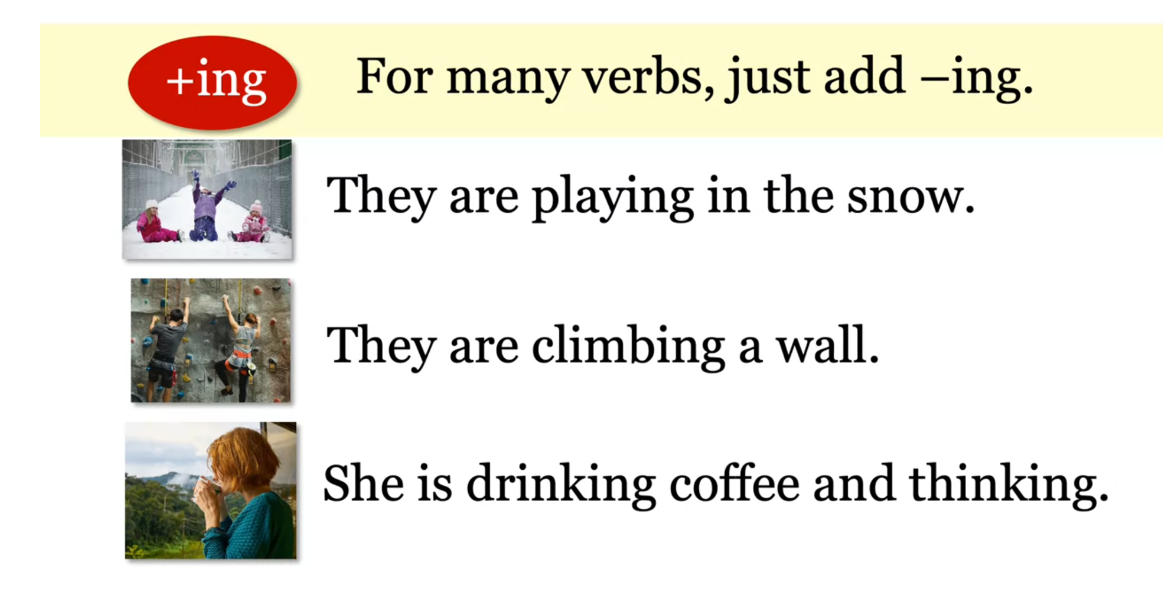
For verbs that end in a
consonant-vowel-consonant, we double the
consonant and add ing. Plan, that’s lan ending, that’s
consonant-vowel-consonant, plan becomes planning,
put becomes putting, and sit becomes sitting. They are planning their day. She is putting on makeup. They are sitting on a bench.

For verbs that end
in consonant and E, we drop the E and add ing. Take becomes taking,
give becomes giving, and ride becomes riding. The plane is taking off. He is giving a presentation. They are riding horses.
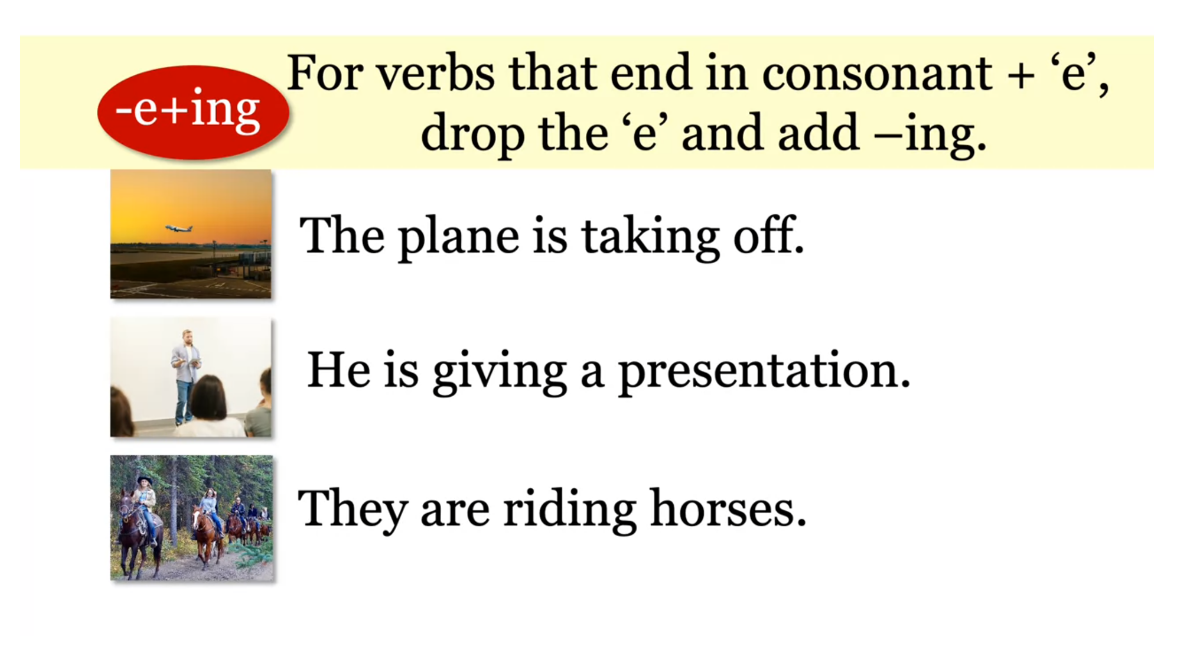
Present progressive tells
us what is happening now. Brian is playing with his toys. He is thinking about trains. He is making train
sounds and having fun.
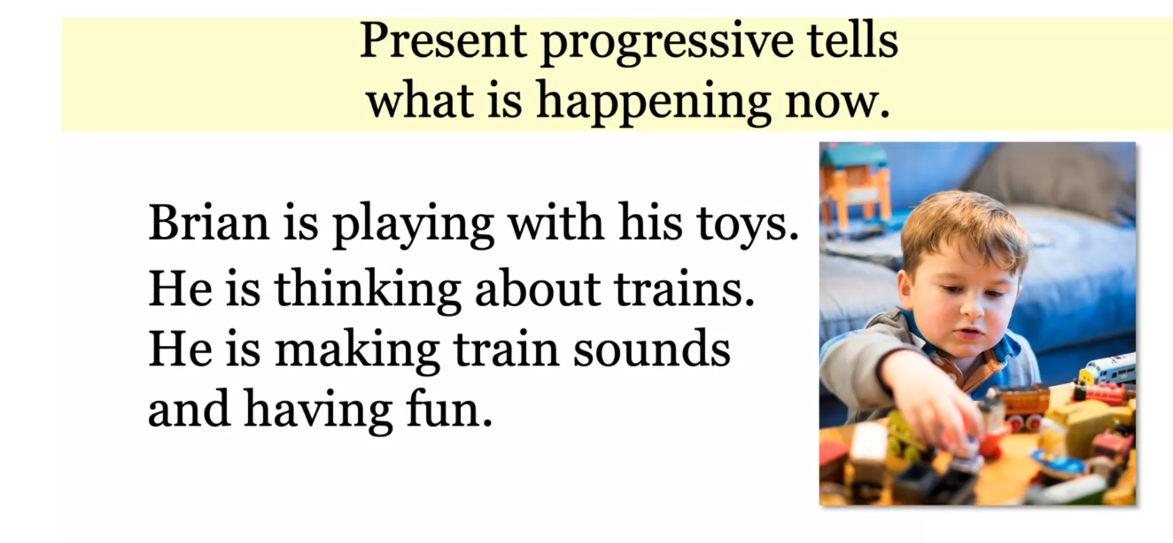
Let’s look at a timeline. You are learning
English right now. This is now on the
timeline. Let’s change it. You are learning
English this week. Now, it’s a little longer. You are learning
English this month. You are learning
English this year. This word, this, shows
us that it is still now, so I can still use the
present progressive. Remember, now can
be a long time. Here is an example. John and Anne are
traveling this month. They are visiting
Budapest this week. They’re staying at a nice hotel. Right now, they are
sightseeing and it is raining. All of these sentences are
in present progressive, and all of these sentences
tell us what is happening now. But now in the first
sentence is this month, and now in the second
sentence is this week, and now at the end is right
now, right this moment. They’re all about now.
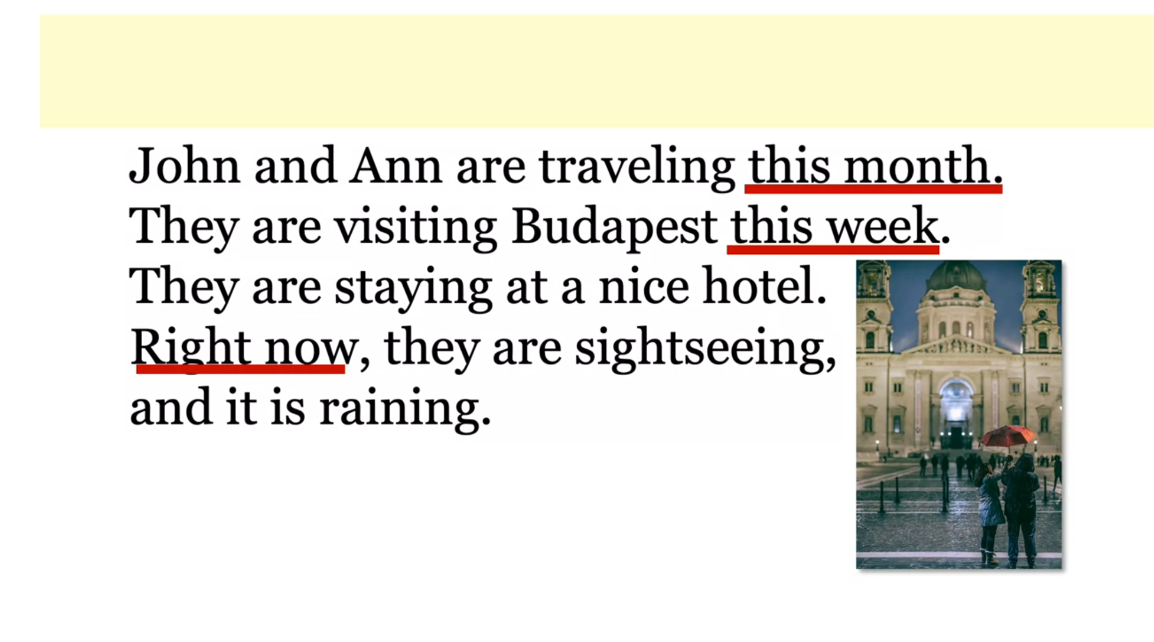
There are some verbs that don’t work in the present progressive. Some of these are need, want, like, know,
and understand. I am needing a break now. We are understanding now. No, these are incorrect. We don’t put these verbs in
the present progressive. I need a break now, we understand now, are correct.
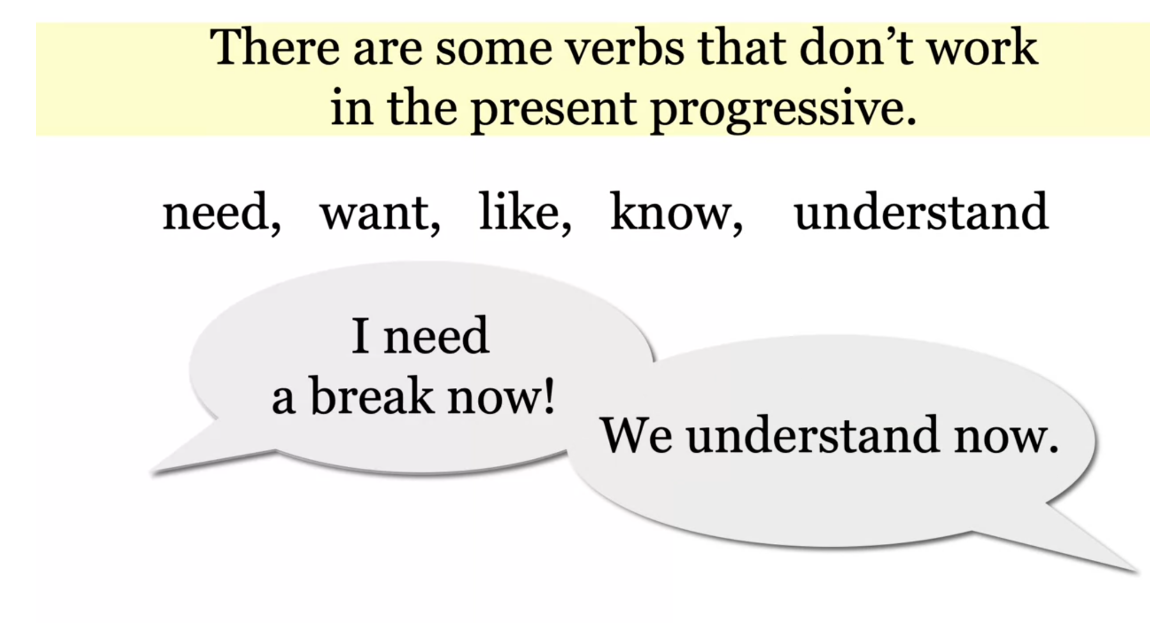
Let’s see what you understand. What is wrong in this sentence? She cooking on a grill. It sounds almost right, but there is no BE verb. We need is to make it correct. She is cooking on a grill. Present progressive
always has BE.

What is wrong here? They are watch TV
together. There is no ing. Again, present progressive
needs BE and a verb with ing. Present progressive always
has a verb with ing. In this lesson, you
learned that the present progressive tells about things
that are happening now. Brian is playing with his toys. They are traveling this month. This is a word that tells you it’s in the
present progressive. There are some spelling changes. We have to drop the
e in give to get giving and double the consonant
in sit to get sitting. He is giving a presentation. They are sitting and listening. Remember, there is
always a BE verb in the present progressive and there
is always a verb with ing.
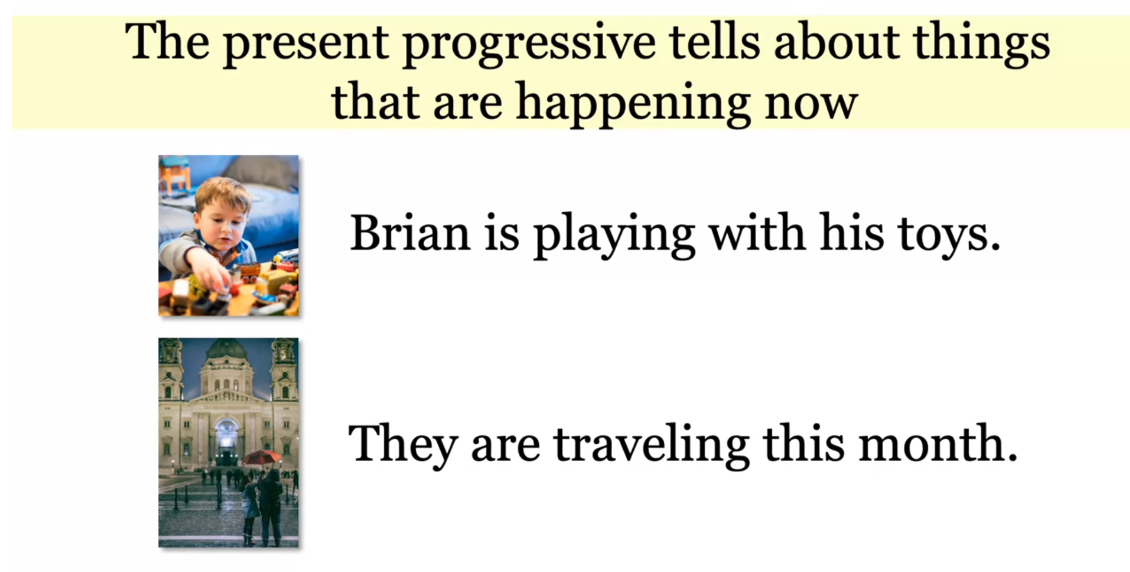
Present Progressive (Practice Exercise)
Exercise

Answer
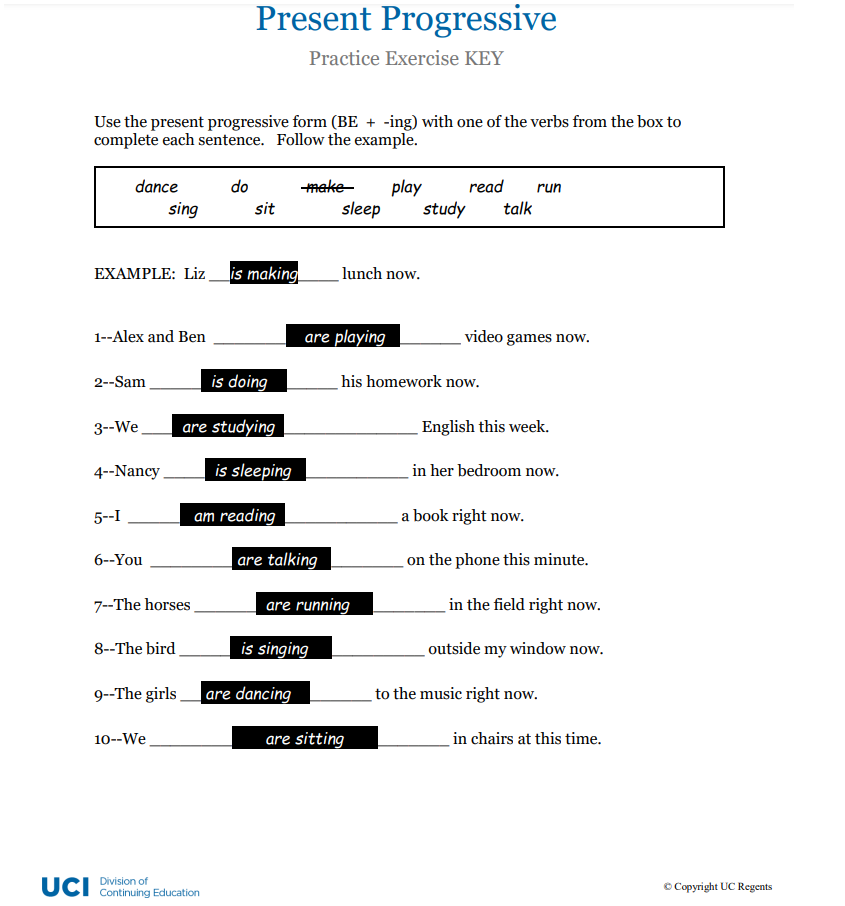
Present Progressive Negative
Present progressive negative. Lauren is on vacation. She is not working,. She is not going to meetings. She isn’t looking at a computer. She’s not answering her phone. She is just relaxing notice all of
the negative present progressive forms to form the negative
in the present progressive. We add not between the be verb and
the ING verb. Is not working. Is not going and we also use contractions. Isn’t looking and she’s not answering.
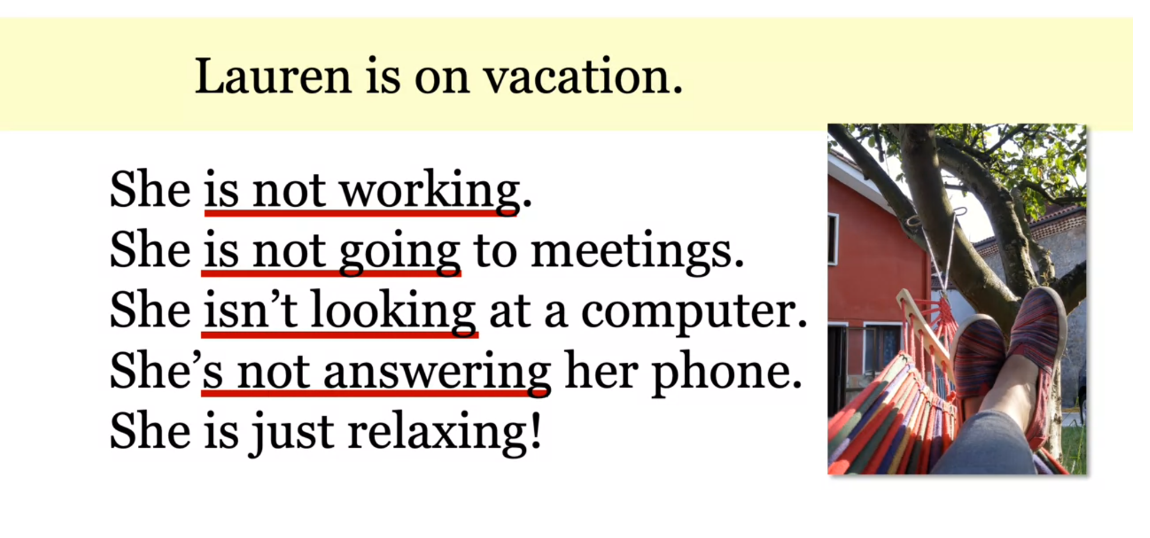
Remember the three ways
to form negative BE. Add not make a contraction. And there are two kinds of contractions. The first is what the pronoun and is. Like it is becomes its and
the second is with the BE verb and not. So is not becomes isn’t. It’s the same BE verb we use
in the present progressive. Here is an example,
he is playing the guitar. We can make sentences in the negative
present progressive three ways. The first way. He is not playing the piano. The second way he’s not playing the drums. And the third way. He isn’t playing the saxophone. The first way has not the second
way has a contraction and the third way also has a contraction. But notice the be verb. We can make contractions
playing never changes.
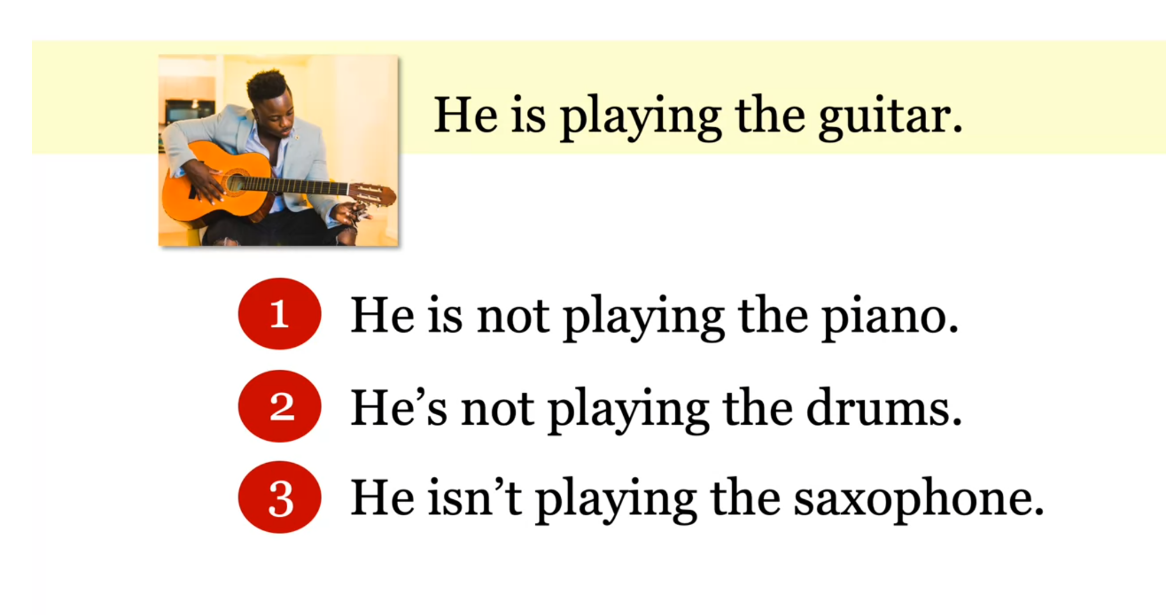
Here we see more negative sentences. They are walking on the beach. They are not wearing shoes. They aren’t talking. The sun isn’t shining.
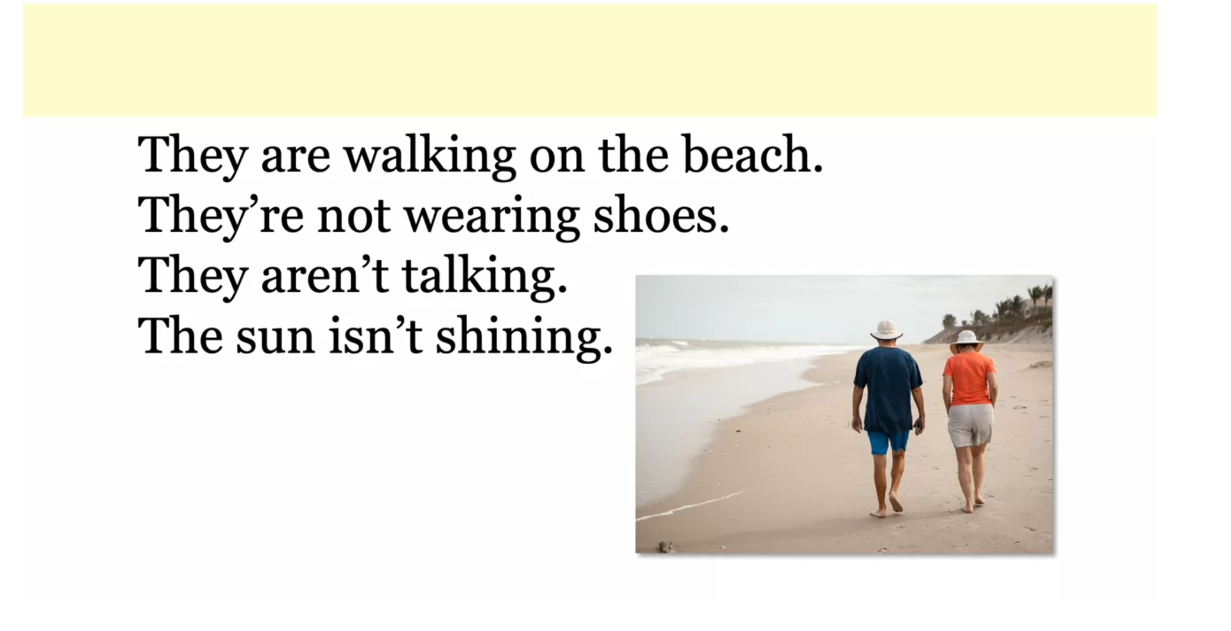
Now you try. What are the three ways
to make it negative? He is walking home. Let’s say the verb is drive. What are the three negative sentences? You can write? The first way. He is not driving. Second way. He’s not driving. Third way. He isn’t driving. What are the three ways
to make this negative? This time the subject is there let’s say. They are playing in the water,
not swimming. What are the three ways? First way. They are not swimming? Second way. They’re not swimming. And the third way. They aren’t swimming. One more. What are the three ways
you are studying grammar? Let’s say not playing games. You are not playing games. You’re not playing games. You aren’t playing games, okay.
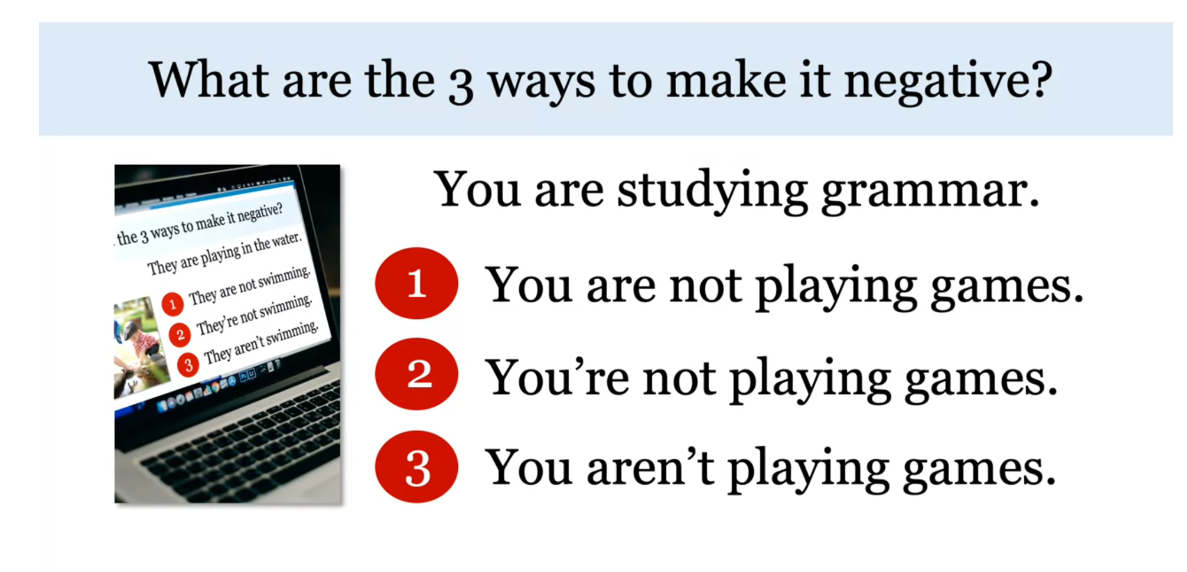
What is wrong? Liz not looking at the gift. Can you see the mistake? There is no Be verb. We need a Be verb for
the present progressive. Liz is not looking at the gift. Present progressive always has be. What is wrong with this? They’re flying. It sounds right but
this there’s something wrong. This is the wrong word. There flying is incorrect. We want they’re flying. This there is the contraction of they and
are it sounds just like the other there. But don’t forget you need the be verb
to make the present progressive. What is wrong? She isn’t liking the cold weather. Well if you remember don’t use verbs
like like in the present progressive. There are some verbs we don’t use like no, remember, understand
are just a few of them. She doesn’t like the cold weather.
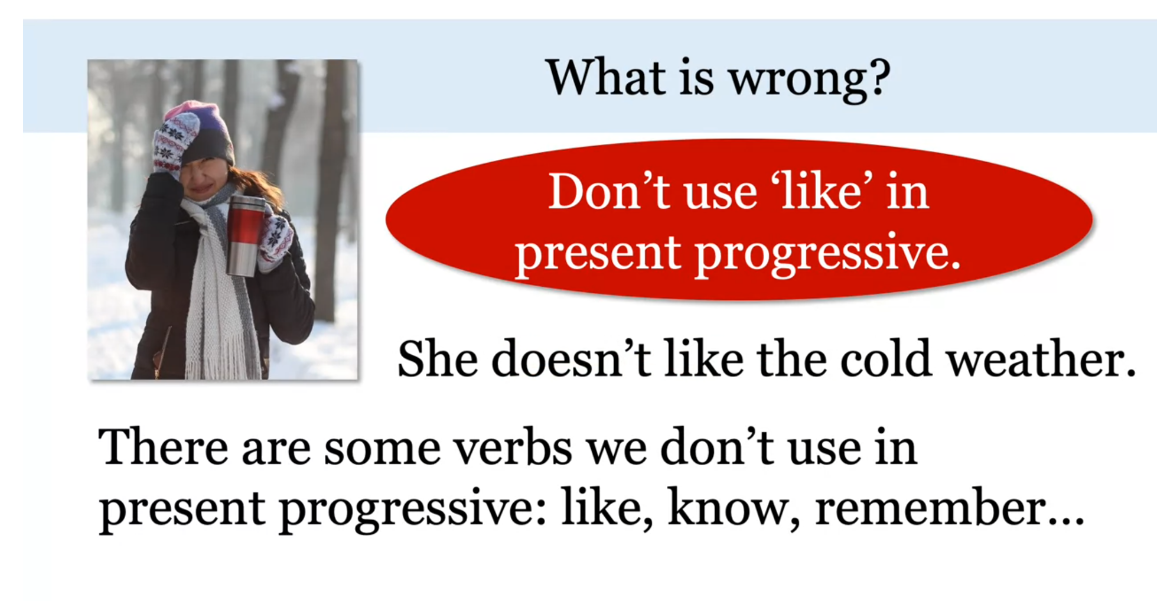
In this lesson you learned add not to form
the negative in the present progressive. The sun is not shining. They’re not wearing shoes. They aren’t talking. And remember there are three ways you can
add not the whole word is not shining. You can make a contraction. They’re not wearing and
you can make another kind of contraction. They aren’t talking.
Present Progressive Negative (Practice Exercise)
Exercise
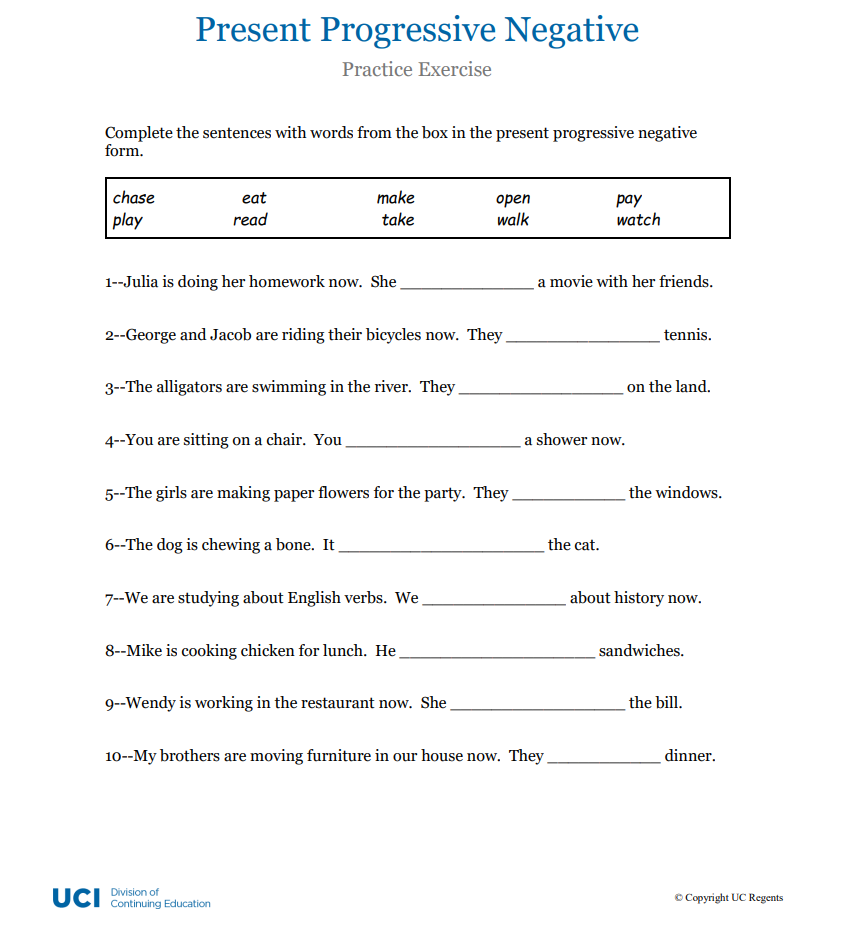
Answer

Quiz: Count/Noncount Nouns & Present Progressive
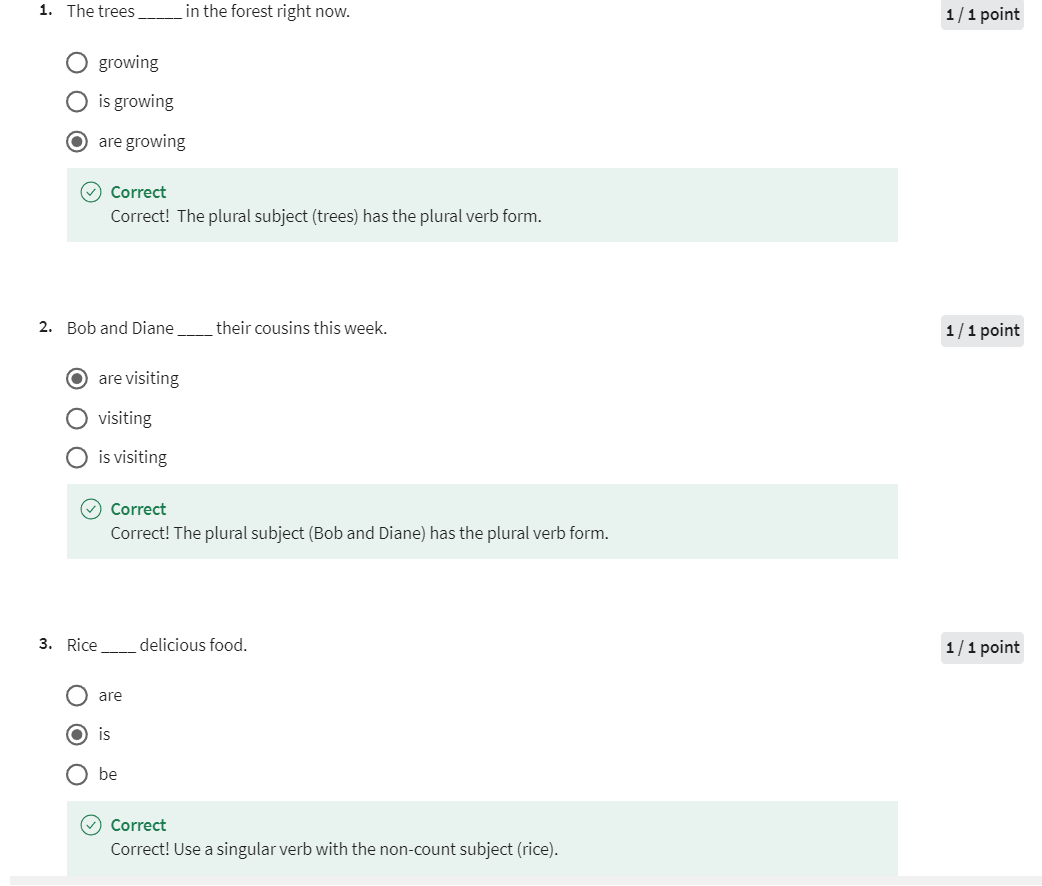

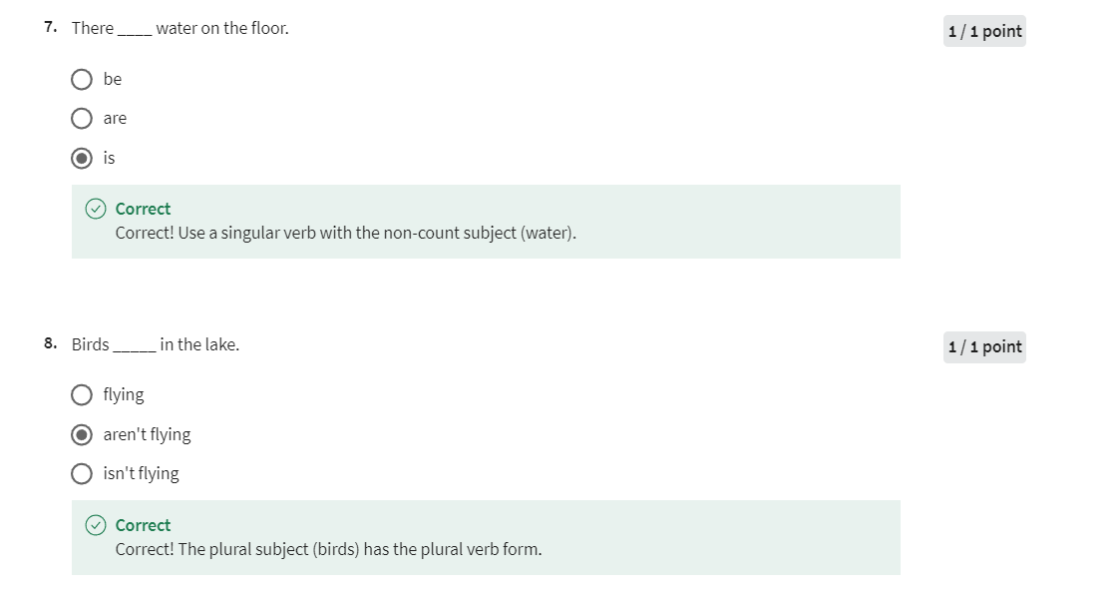
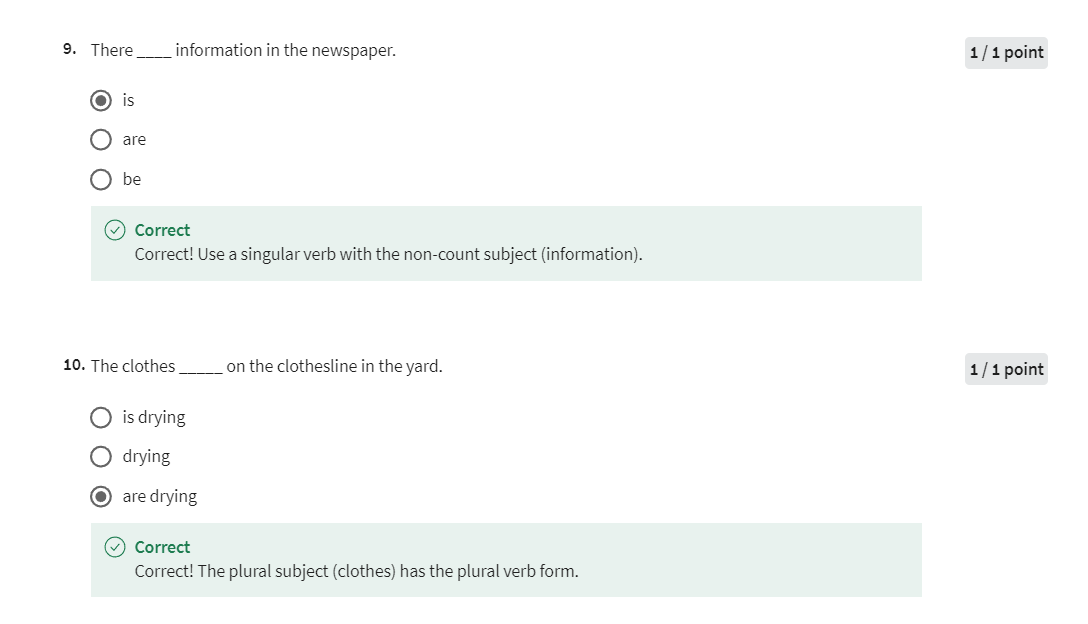
Week 03: Present Progressive Question & Signal Words
This week is all about asking questions with the present progressive. You will learn how to ask yes/no questions and information questions. Then we will compare simple present and present progressive so you can see when to use each. You will learn about signal words and the difference between sentences like “I speak English” and “I am speaking English.”
Learning Objectives
- Ask questions with present progressive.
- Differentiate between present progressive and simple present.
Present Progressive Yes/No Questions
Present progressive, yes, no questions. Bill and his sister are video chatting. Bill asks, is it raining there? No it’s not. I’m sitting outside. Are you working in your garden? No, I’m not. I am drinking tea. Notice the question, is it raining? Are you working?
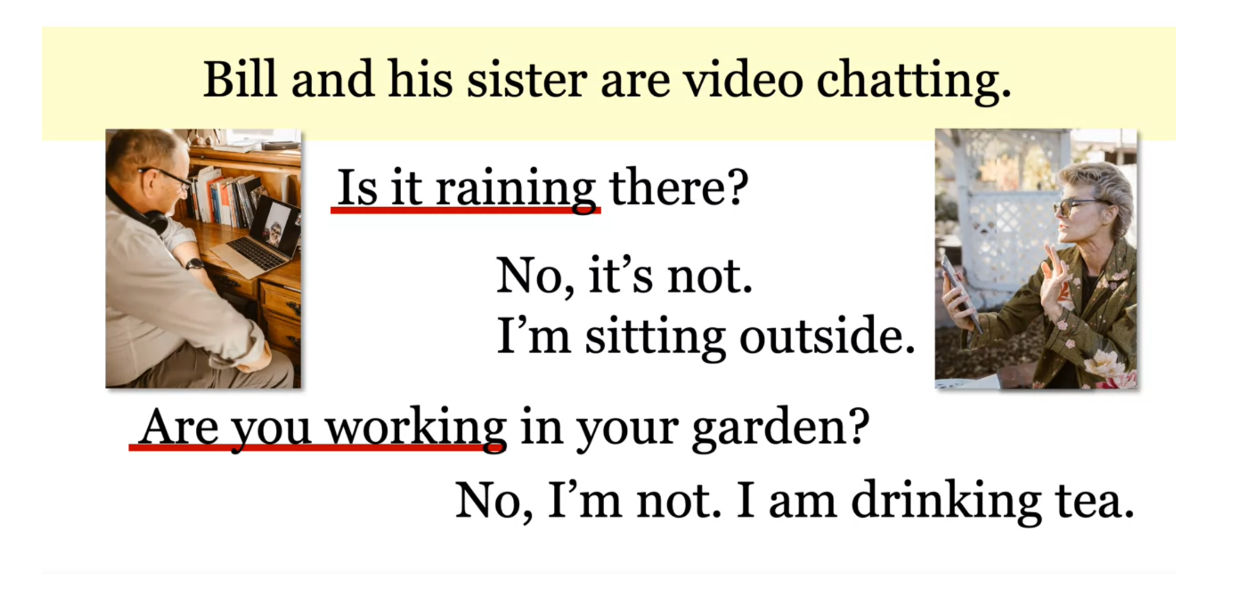
Let’s look at how to perform yes,
no questions in the present progressive. Switch the order to form a question
in the present progressive. You already know how to say,
they are asking for directions. To make a question, we are going to
switch the be verb and the subject, and that way we’ll have, are they,
are they asking for directions? Yes, they are. Here’s some more examples. Carol calls her son. She has a lot of questions. Are you feeling okay? Are you getting enough rest? Are you drinking lots of fluids? Are you taking medicine? Look at all of these questions. They all have the be verb, and a verb with
ING, and the subject is in the middle.
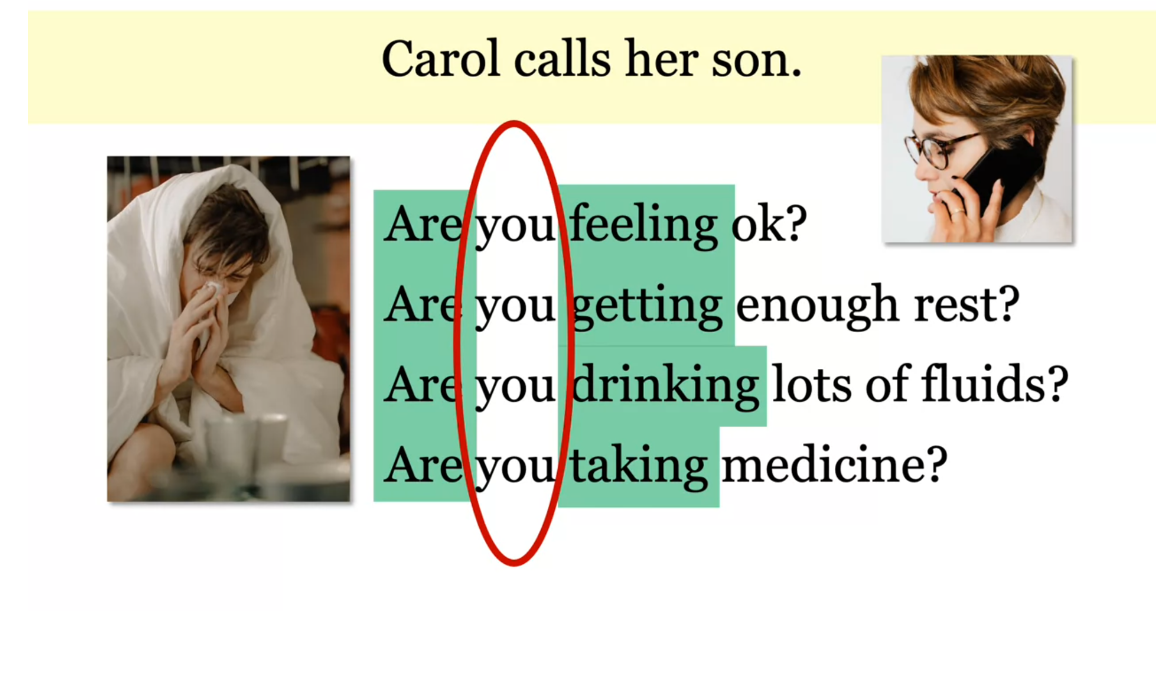
Let’s look at some more examples. Is Kayla telling Emily a secret? Do you see? Be verb, then subject, then the ING verb. Is Kayla telling Emily a secret? Yes, she is. Is peter asking a question? Yes, he is. Are you baking a cake? No, I’m not. I’m making cookies.
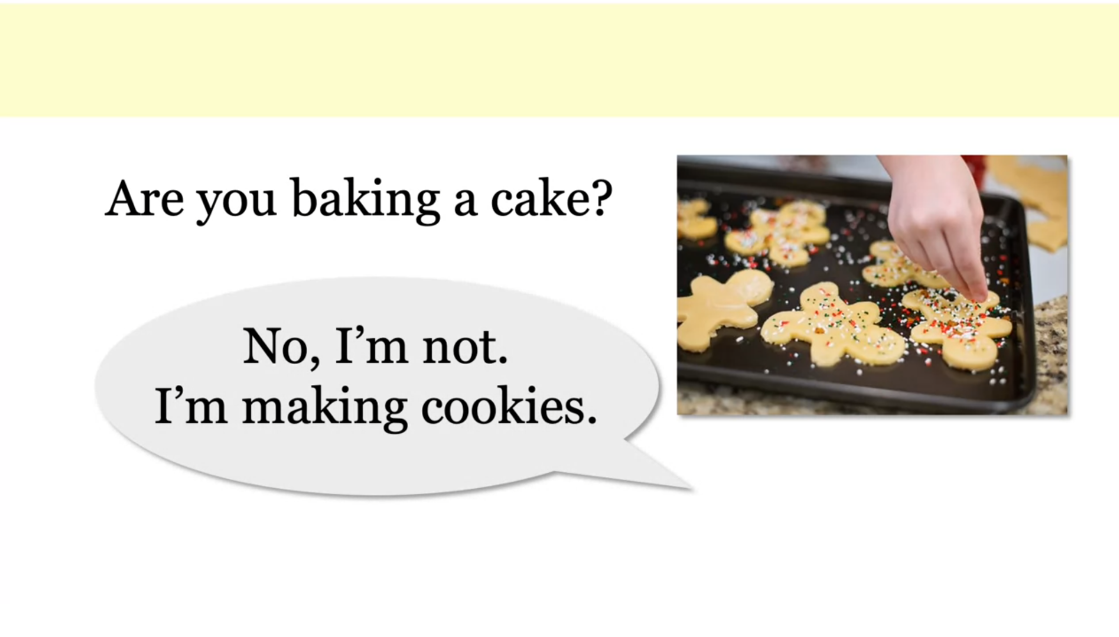
Hey, are you listening to me? Yes. Sorry. No, I’m listening to you now. You try, make a question. You have the answer. Yes, they are. So you know the subject is they and
you have the verb, ride bikes. Are they riding bikes? Yes, they are. Okay? Try again. This time draw a picture, draw is
the verb, and yes, she is, is the answer. So you know she is the subject. Is she drying a picture? Yes, she is.
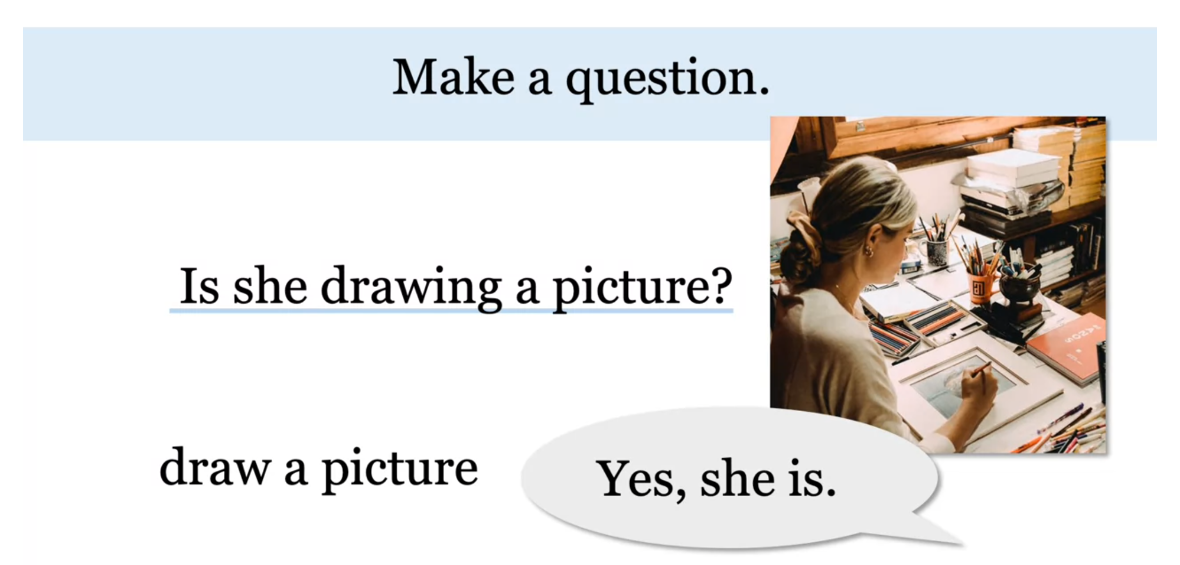
One more, here the verb is drink and
the subject is, it. I guess I don’t know if this cat is a girl
cat or a boy cat, so I’m going to say it. Is it drinking your tea? Yes, it is. In this lesson, you learned to form yes,
no questions in the present progressive. She is talking on the phone is the
sentence and we switch the order of the be verb and the subject to get the question,
is she talking on the phone? Yes, she is.
Present Progressive Yes/No Questions (Practice Exercise)
Exercise

Answer
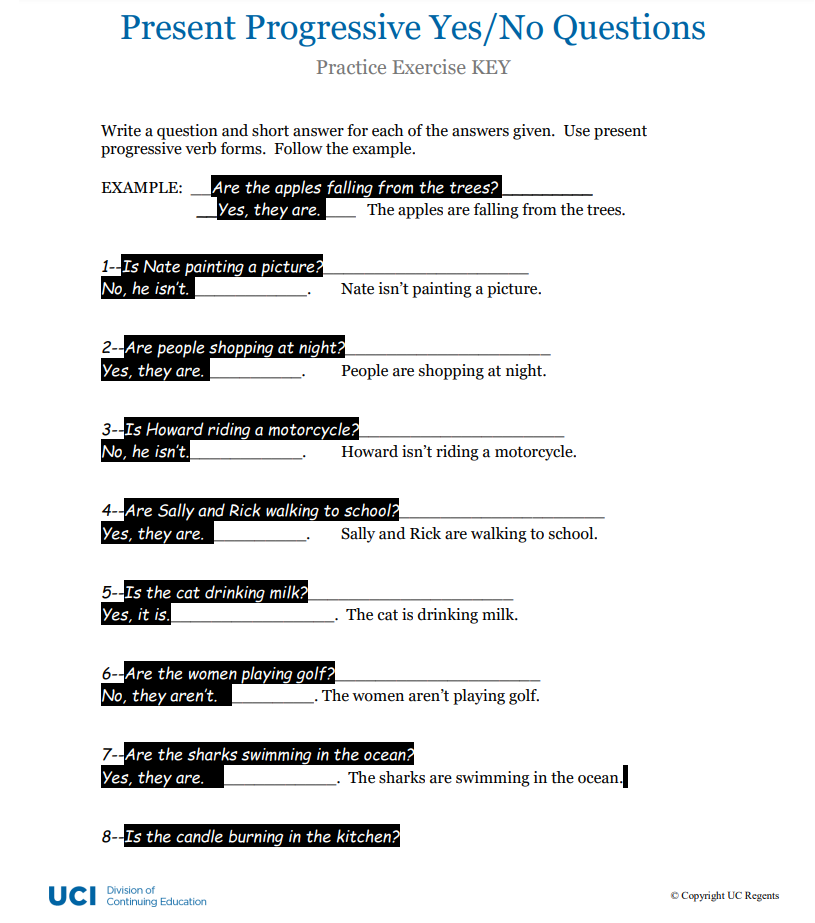

Present Progressive Information Questions
Present progressive
information questions. What is he doing? Mac is only four years old, but he is pretending to be old. Why is he pretending to be old? His school is celebrating
Old Timey Days. It’s a history festival. Look at the questions. What is he doing? Why is he pretending? These are information questions in the present progressive.
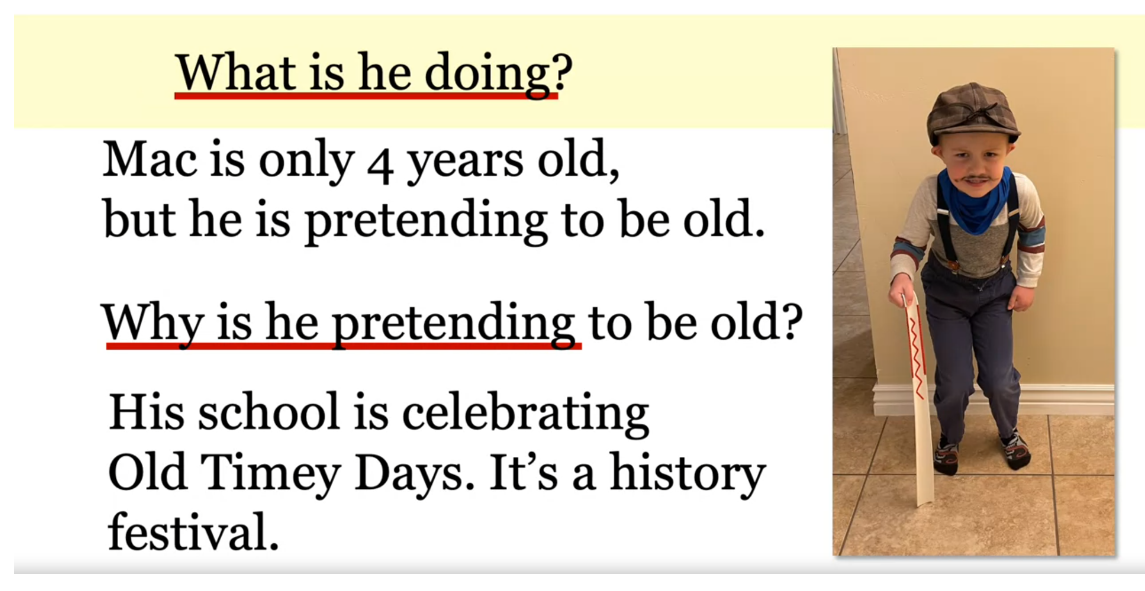
Put the question
word in front to make a present progressive
information question. You already know how to form a yes-no question in the
present progressive. Is she looking for something? Yes, she is. To form the
information question, start with the question word. What is she looking for? Do you see, the questions
look almost the same, there’s a be verb and
there’s a verb with I-N-G, and the subject is
between these two. The information question also has a question word
at the beginning. What is she looking for? She’s looking for
some sharp scissors.
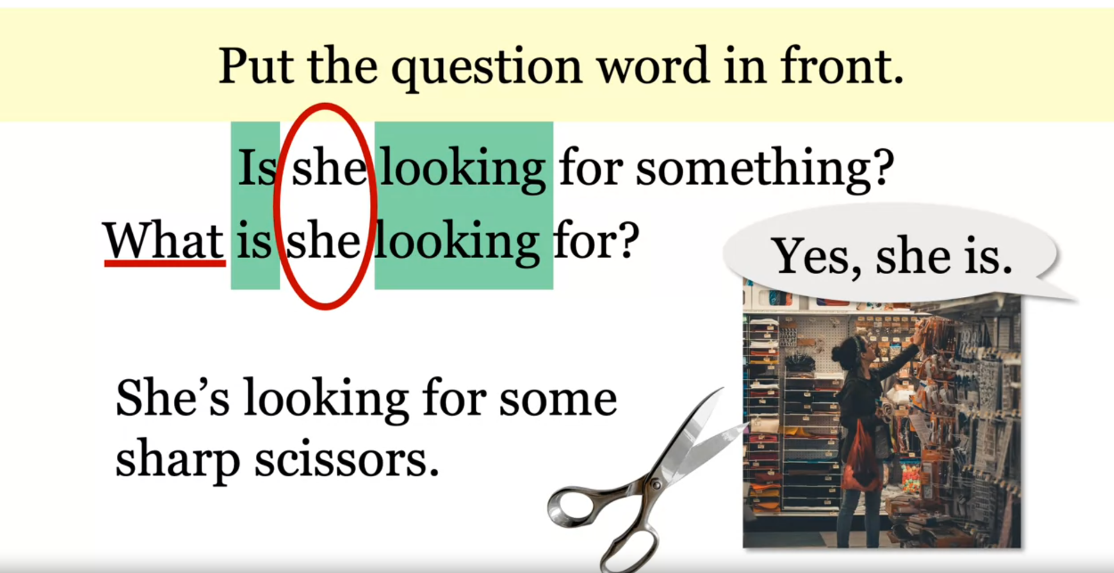
Is he looking at something? Yes, he is. Well, now I want
more information. What is he looking at? Do you see, the questions
look almost the same. There’s be verb and
then the subject and the verb with I-N-G.
What is he looking at? Some dolphins are
swimming nearby.
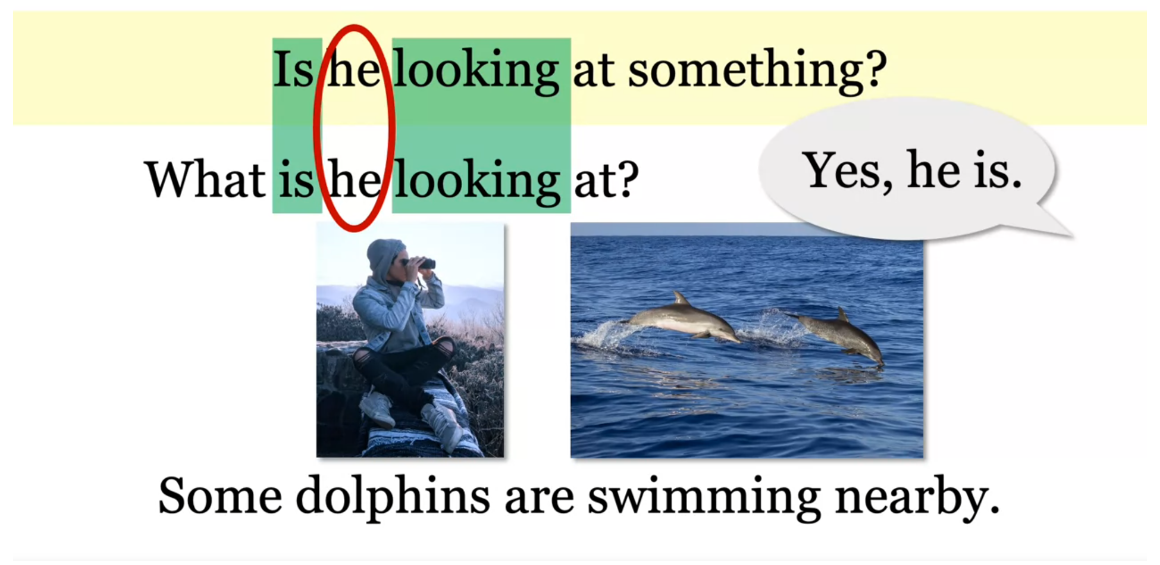
Are they going somewhere?
Yes, they are. I need more information. Where are they going? They are taking a train to Rome.
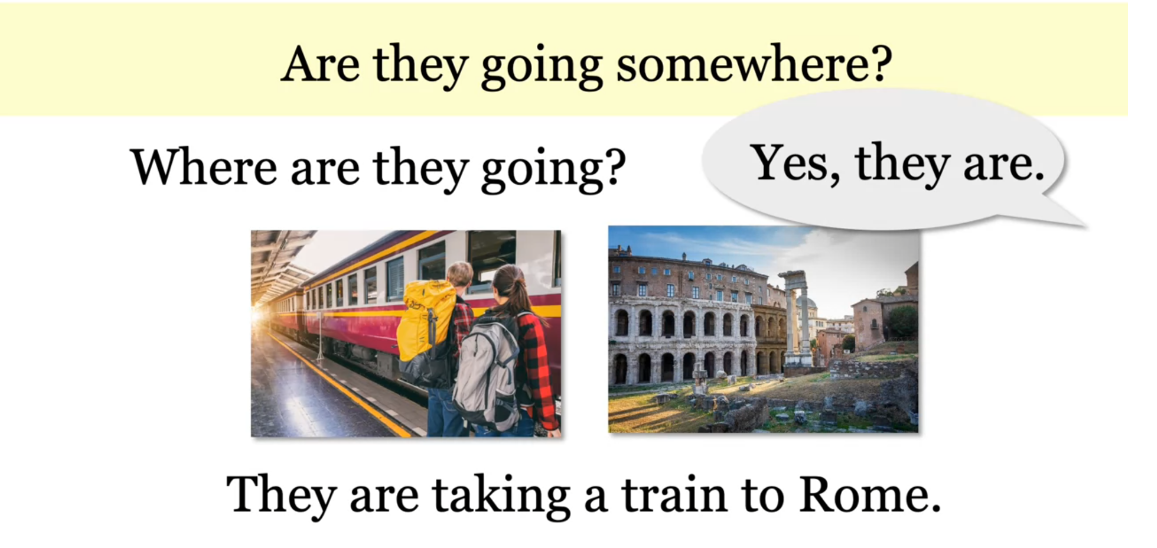
Is that squirrel eating? Yes, it is. What is that squirrel eating? It is eating the seeds
from a pine cone.
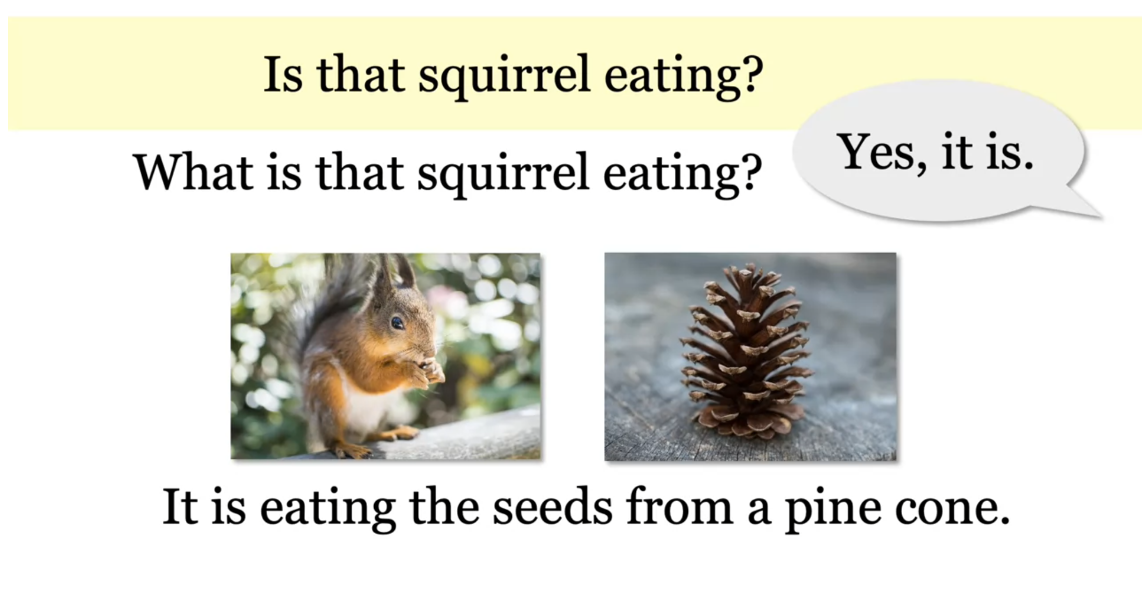
Is he looking at his phone? No, he isn’t. He isn’t, well, what is he doing? He’s working in the
engineering lab. Are they working? No, they aren’t. What are they doing? They are having
coffee and working on the crossword puzzle
in the newspaper.

Okay, you try. What is the correct word order to make an information question? Remember, start with
the question word. What is Elaine talking about? She is explaining the new
project to her colleagues. What is the correct
word order here? Why is Alan using a microphone? He is recording a new episode
of his podcast.
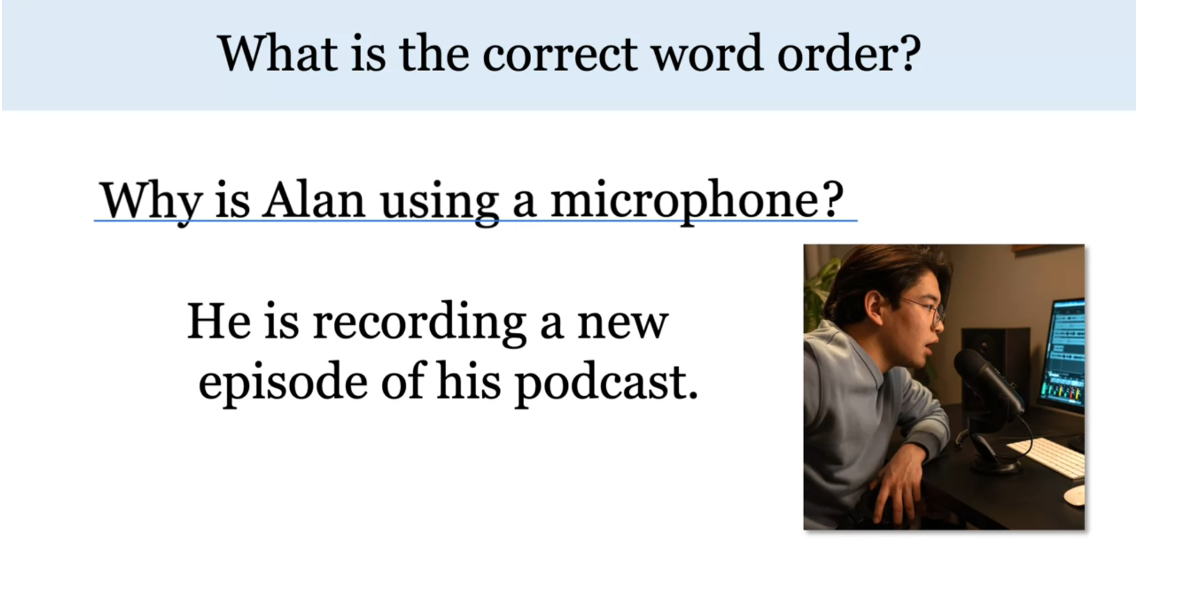
Last one. What is the correct word
order to make a question? I’ll give you a hint. The last word is with. Who are you texting with? My friend. She is asking if I want to
meet her for coffee.
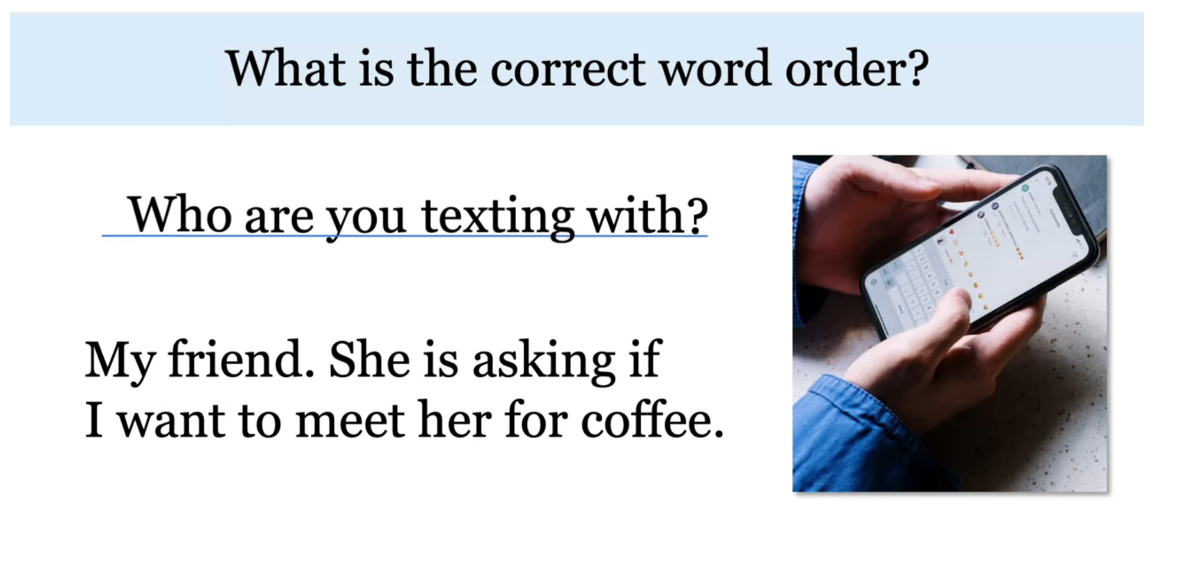
In this lesson you learned, put the question word in
front of a yes-no question to form an information question
in the present progressive. What is he doing? Why is he using a microphone? Where is he recording? All of these questions
start with a question word.
Present Progressive Information Questions (Practice Exercise)
Exercise

Answer
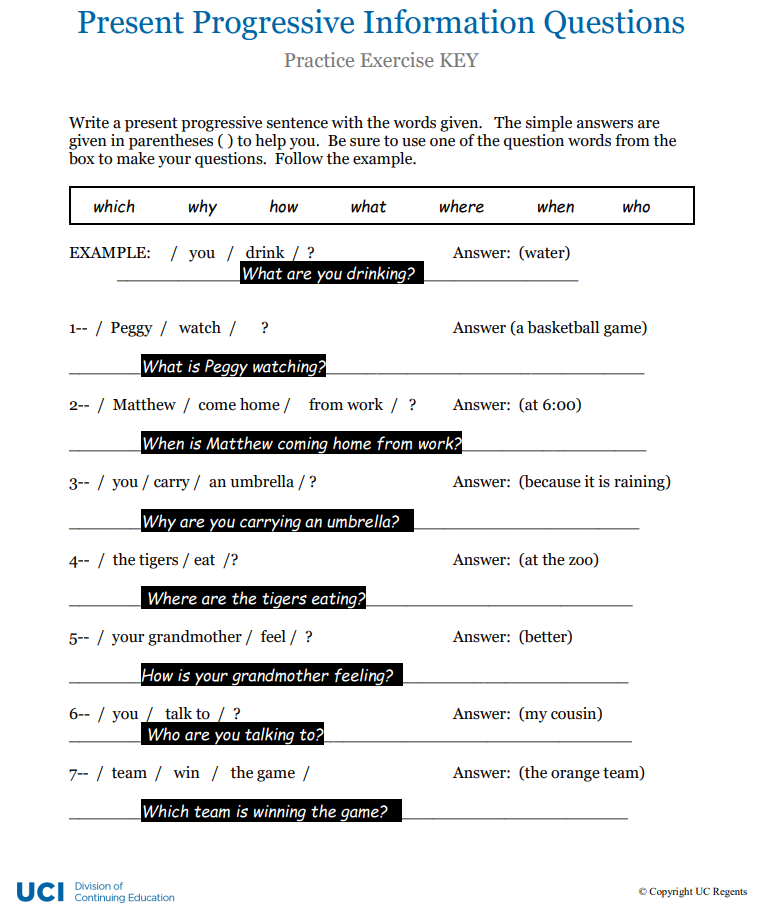
Present Progressive & Simple Present
Simple present and
present progressive. In this lesson, we
are going to look at the differences
between these two. Lucas is from Columbia. He speaks Spanish,
but he is speaking English now because he is
helping his classmate. She speaks Russian, but she is speaking
English with Lucas. Some of these verbs are
in the simple present and some are in the present
progressive. Let’s look. Simple present verbs are, is, speaks, and speaks again. Do you see the
present progressive? Is speaking, is
helping, is speaking. Remember present
progressive needs the be verb and a verb with I-N-G.

Let’s review when
to use these forms. Simple present is for facts and habits. Sara goes to the
gym every Tuesday. John plays basketball. Jan studies computer coding. The friends often surf together. Bees make honey. Earth revolves around the sun. All of these are examples
of the simple present.
Present progressive is for now. You are learning about grammar
now, right this minute. They are walking to school. She is waiting for a flight. He is living in
Arizona this year. Remember, now can
be a long time. We use this word, this, to show that it is now and we need the
present progressive. I’m going to call this
word a signal word. Let’s look at the signal words. First, this is a signal, this is a traffic signal and it tells you when to
stop and when to go. Signal words tell us when to use the simple present and when to use the
present progressive. They signal what
time we’re talking about. Let’s make a chart. On one side we’ll put simple present and the other
side present progressive. On the simple present side, we use frequency
words like always, sometimes, often, and never, to show the simple present. We also use the word every and we put it with
another time like, every hour, everyday,
every week, every month, every year. This tells us that
something happens again and again and that’s our
use for simple present. On the present progressive
side, of course, we have the word now, but we can also use the
word today to mean now. We use that word, this, this afternoon, this
week, this month. This shows us that
it is happening now.

I’m going to tell
you about Anita. Anita is 14 years old. She plays tennis
and golf very well. She’s playing chess right now. She is a student. Her favorite color is red, and she often wears
a red sweater, but right now she’s
wearing a black shirt. Let’s think about this
information about Anita. I told you she plays
tennis and golf, this is the simple present. I also told you
she’s playing chess, this is the present progressive, this is happening right now. I said she often
wears a red sweater, but I told you she is
wearing a black shirt now. Look at the signal
words over here, often shows us that
it’s simple present, and now shows us it is
present progressive.

You try. Eva is a
student from Spain. These sentences tell
us more about Eva but the verbs in the blanks
are in their simple form, that means we need to change them to fit in the sentences. We need to decide
simple present, or present progressive.
How do we know? Well, sometimes we can
look at the picture and sometimes the other words
in the sentences help us. Here, there are signal words. Let’s look; this,
every, today, and now. These signal words tell us how we should
change the verbs. Are you ready for the answers? Eva is a student from Spain. She is living in
the US this year. This year tells me it should be present progressive because
it’s happening now. She studies every
afternoon in the library. Every tells me it
happens this afternoon, tomorrow afternoon,
the next afternoon. That means it needs to be
in the simple present. Eva is shopping today. Today tells me present
progressive now. She is looking for
a blue jacket now. Well, now is happening now.
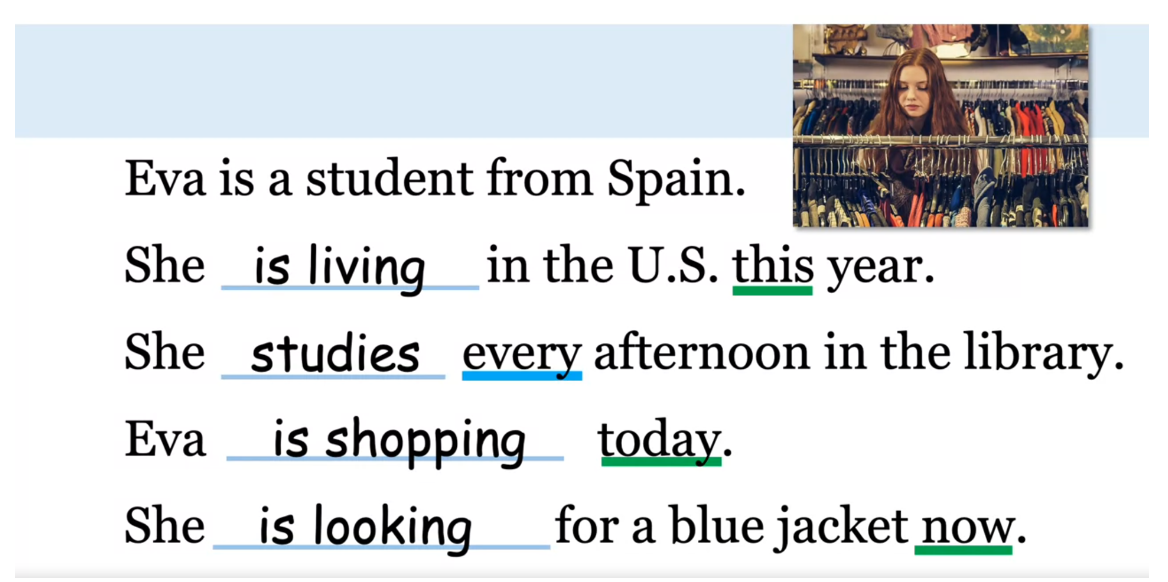
One more time. Look
at the picture. This is Isaac. These sentences
tell us about him. What forms of the verbs
go in the blanks, simple present or
present progressive? Remember, look for signal words and you can look at
the picture too. Are you ready for answers? This is Isaac. He works in a law office. There’s no signal word here, but I can see the picture he’s not in an office right
now, he’s outside. He is cooking on the
grill outside today. I see this in the picture, but also I see this signal word today that tells me
present progressive. He is talking to
his friend Dan now. Now is a signal word for
present progressive. He likes to cook
for his friends. Well, likes is one of those words that I can’t put
in the present progressive. It has to be in the
simple present.
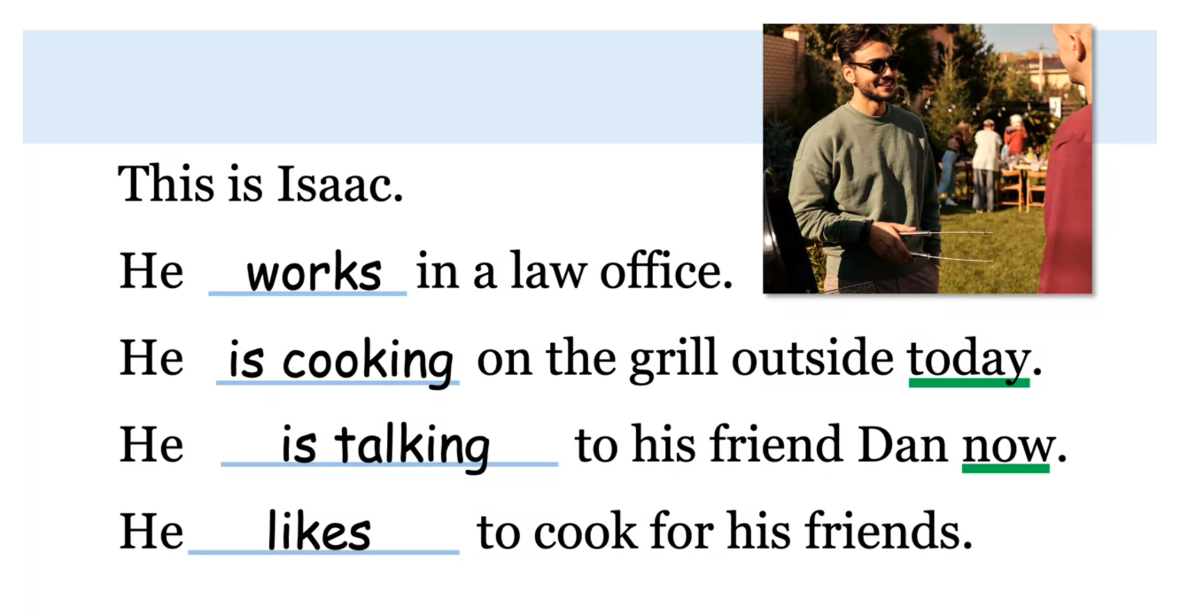
In this lesson, we reviewed the different uses for the simple present and
the present progressive, and you learned about
signal words to help you see these differences.
Present Progressive & Simple Present (Practice Exercise)
Exercise

Answer
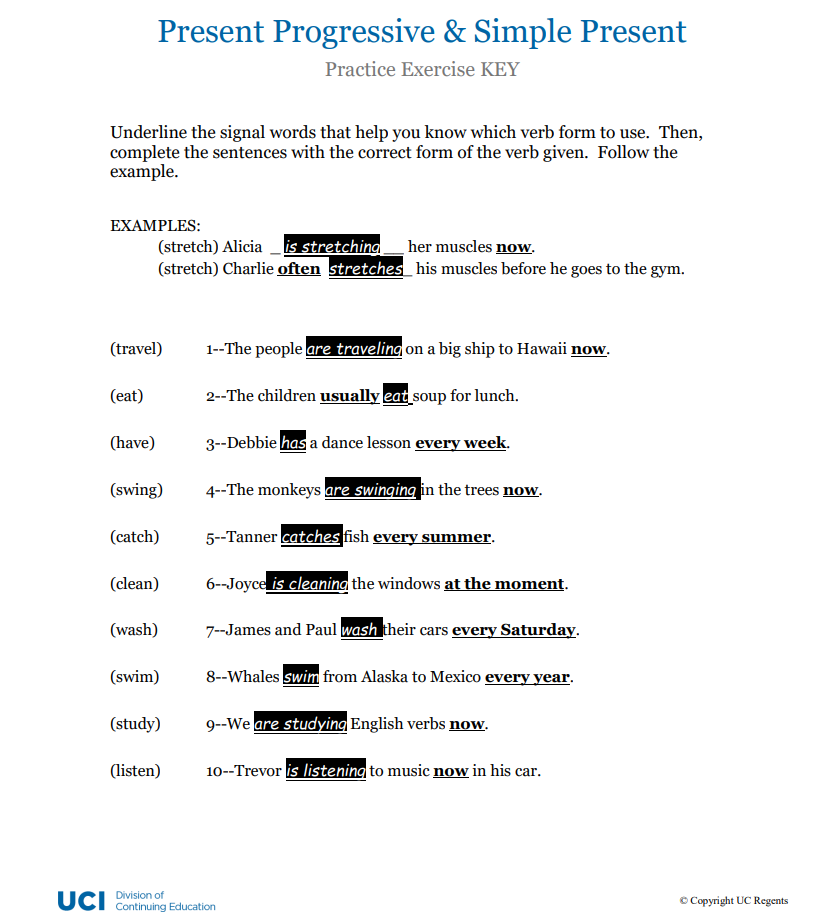
Quiz: Present Progressive Questions & Signal Words

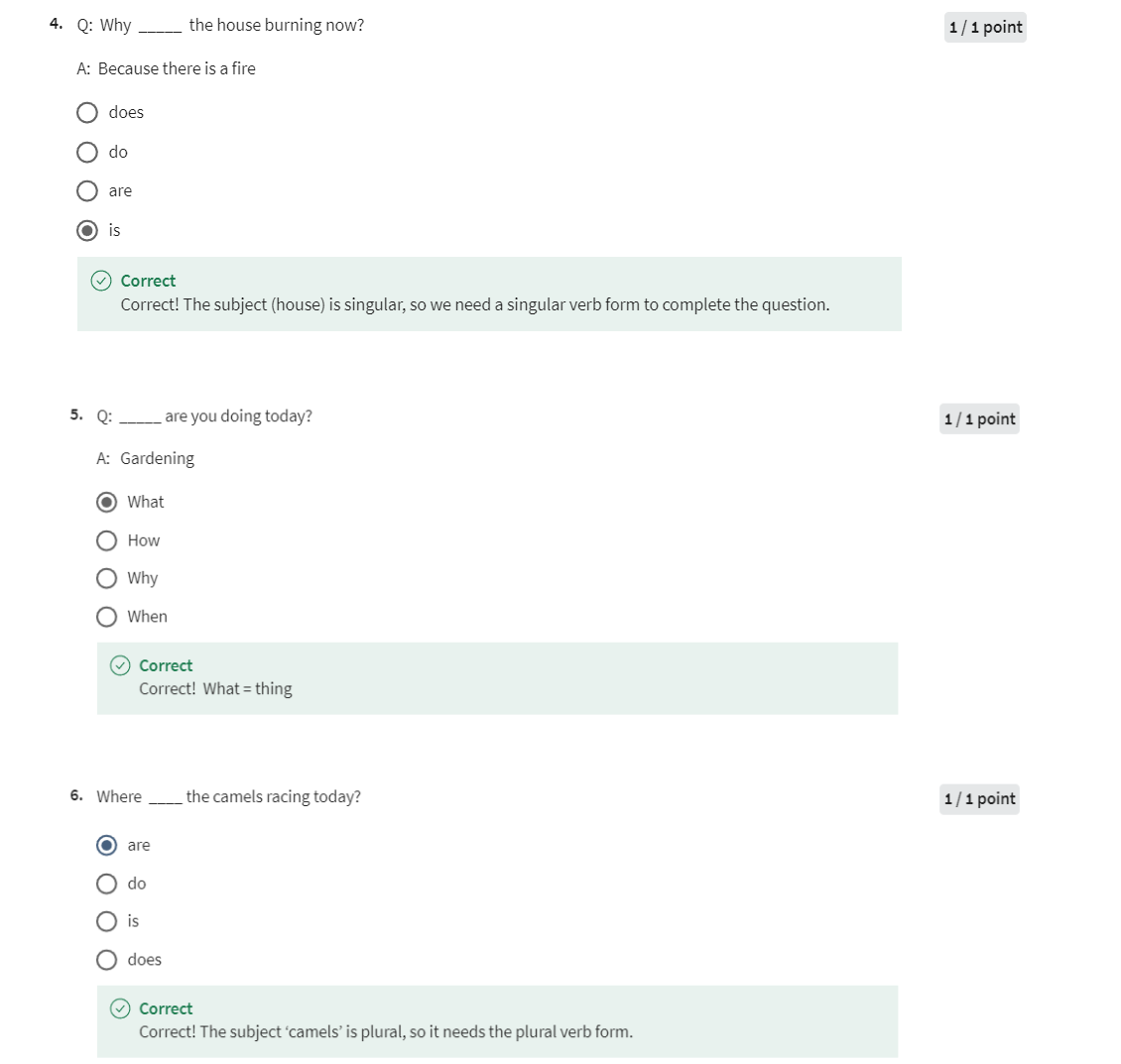
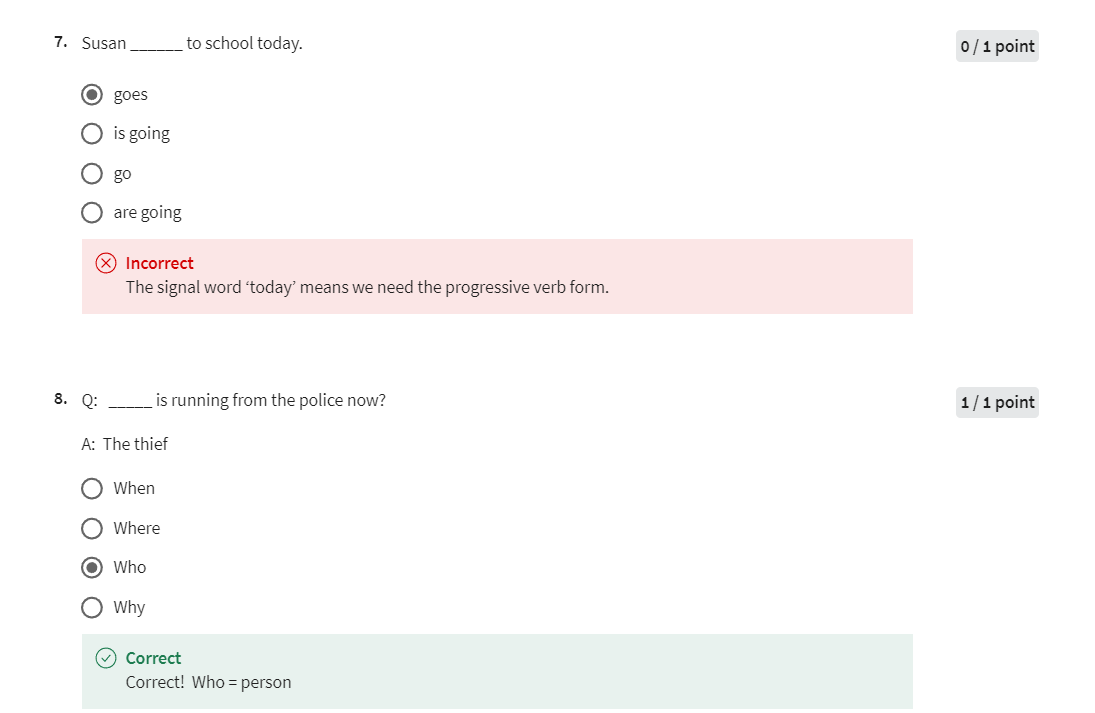
第七题做错,需要选择 is going
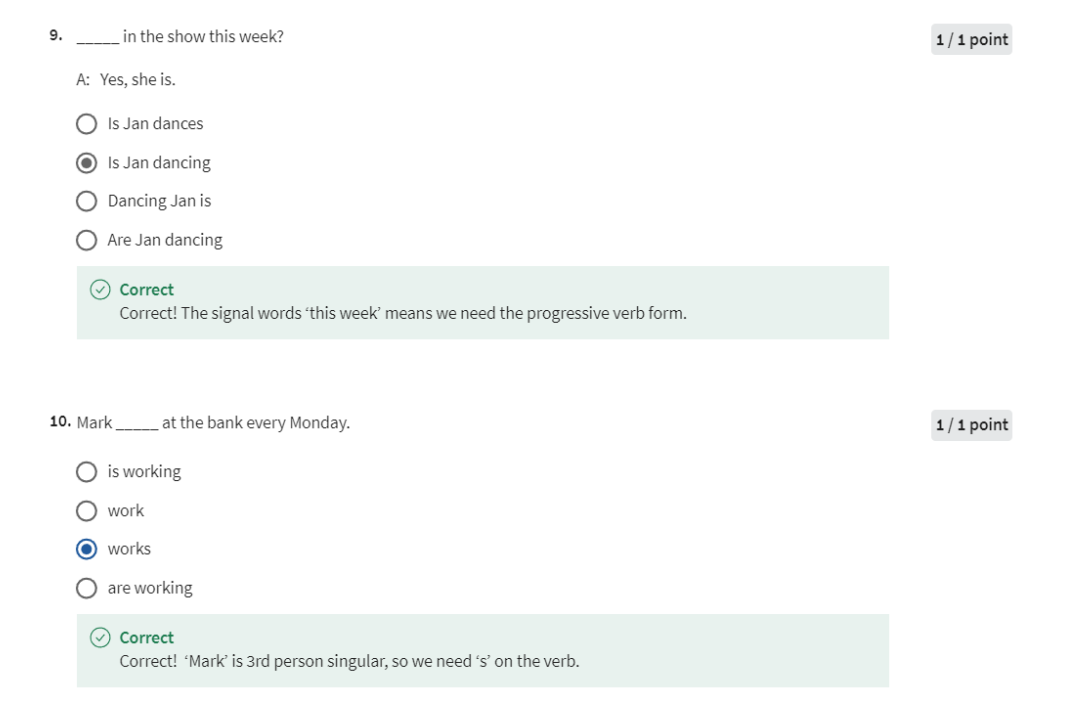
Week 04: Future Forms & Can
Now that you know how to form the present progressive, this week you will see how we use “be going to” and the present progressive to talk about the future. You will also learn how to use “can” to talk about what you can and can’t do.
Learning Objectives
- Use “can”.
- Use “be going to” and present progressive to talk about the future.
Future - BE Going To
Be Going To. Future. Maya and her
mother are walking. They are going to the store. They are going to
buy some ice cream. Let’s look at the verbs. In the first sentence
we have, “are walking”. This is happening now. In the second sentence, “they are going”, they
are going to the store. This is also
happening right now. In the third sentence, they are going to
buy some ice cream. The verb is, “are going to buy”, but you see this is a little different and this
is the future.

Let’s take a closer look. They are going to the store. They are going to
buy some ice cream. Both of these sentences have, “are going to”, but let’s look. In this first sentence, they are going to the store, they are going to a place. In the second sentence, they are going to buy, they aren’t going to a place, “they’re going to”,
and it’s a verb. The first sentence is
present progressive. This is the be verb
plus the I-N-G, and this tells us this
is happening right now. The second sentence
is the future. We use be going to verb
to form the future.
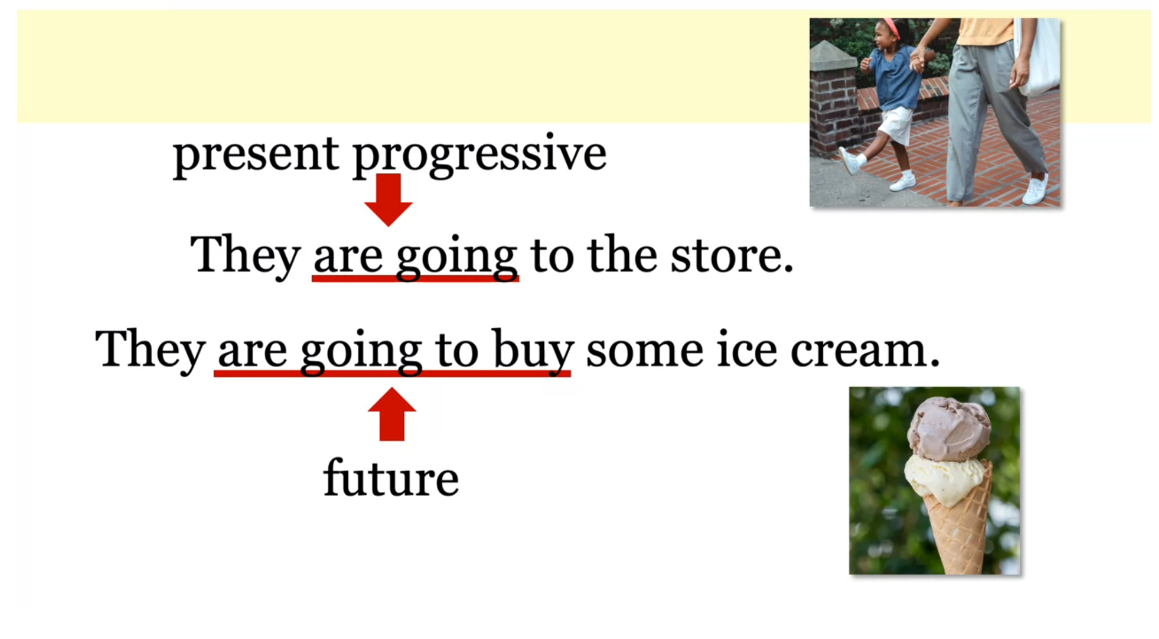
Let’s look closely. We form the future
with be going to. They are going to
buy some ice cream. “Are” is be, then
we have going to, and “buy” is the verb and
“buy” doesn’t change, it stays in its simple form. They’re going to
buy some ice cream. Let’s look at some
more examples. Here, we have a plane. The plane is taking off. This is happening now. This is the present progressive. The plane is going to Alaska. This is also
happening right now, and this is also the
present progressive. The plane is going to arrive
in Alaska at 4 o’clock. Now, this is
different because we have “is going to” verb, look at the difference. Here, Alaska is a place, it’s going to a place but here, “arrive” is a verb, so “be going to” and verb
shows us the future.
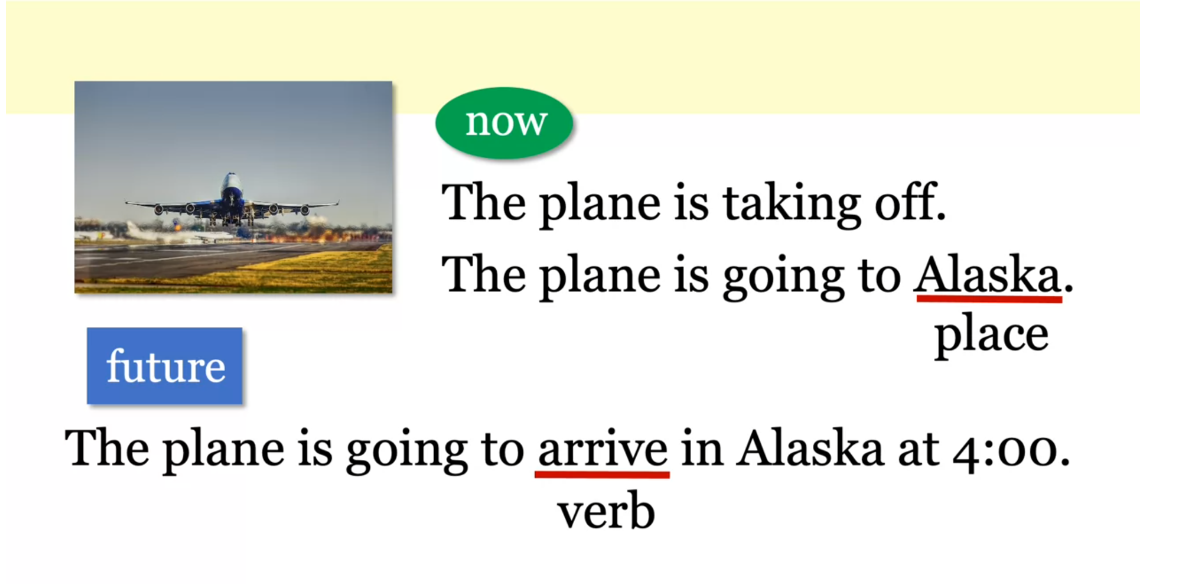
Here’s Chloe. Chloe is
crossing the street. That’s happening right now. Chloe is going to the park. That is also
happening right now. Chloe is going to walk
her dog in the park. That is not happening right now. Chloe is going to
the park right now. When she gets to the park, she will walk her dog. Chloe is going to walk her dog. Again, “park” is a place
and “walk” is a verb. “Chloe is going to walk
her dog” is the future.
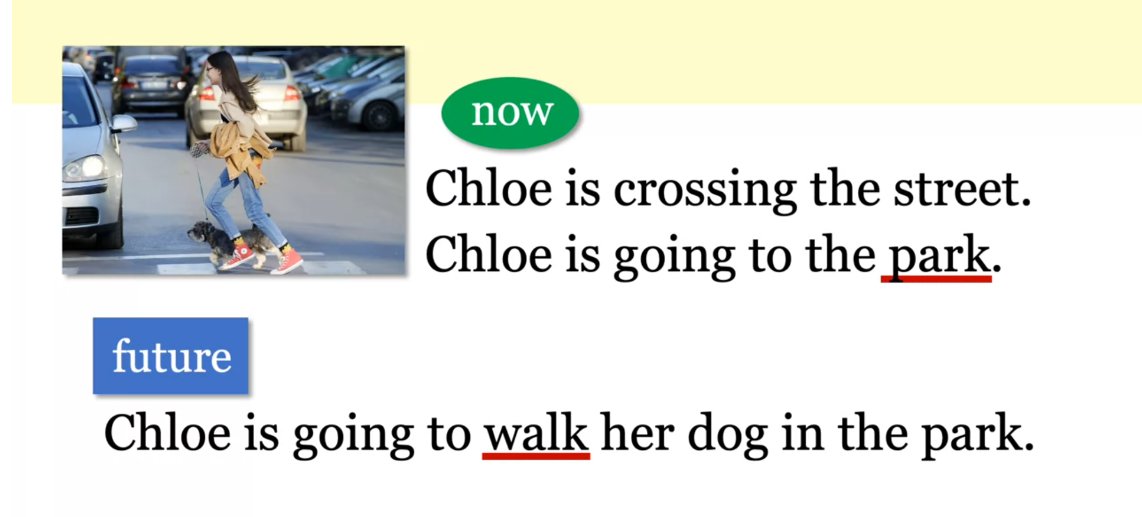
Here’s one more example. Here are some bike riders. They are riding bikes right now. They are going to the
top of the mountain. That’s also happening right now. The top of the
mountain is a place. They are going to take
a rest at the top. Now, we have a verb, so this is the future. They are going to take
a rest at the top. Let’s practice. You see two sentences. She is going to
paint her kitchen. She isn’t painting her bedroom. Both are correct,
but which one is future and which one is
present progressive? She’s going to
paint her kitchen. This is happening in the future. She’s going to
paint her kitchen. She isn’t painting her bedroom. This is happening right now. Is it future or
present progressive? They are playing together. They are going to eat lunch. They are playing together
is happening right now. They are going to eat lunch is going to happen
in the future. She is going to do research. She is giving a lecture. She is going to do
research in the future. She is giving a
lecture right now. She’s giving the lecture
right now.
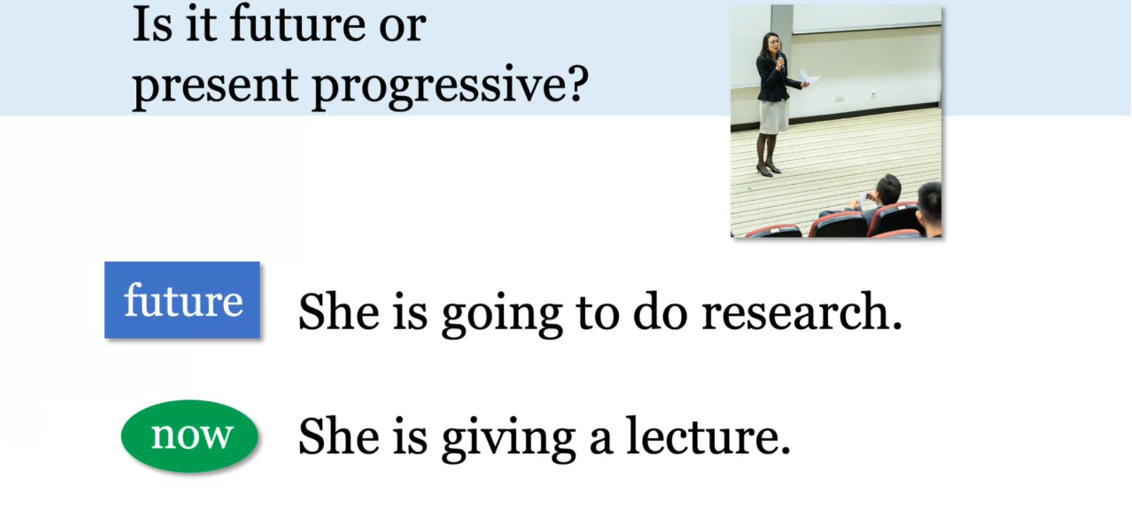
Last one. Is it future or
present progressive? They are going to a museum. They are going to see
some famous paintings. They are going to museum
is happening right now. They are walking to a place. They are going to a place. They are going to see
some famous paintings, that is the future. Okay. Now, you try forming it. Mrs. Jay is making cookies. That’s happening right now. Now, you have to
fill in the blank. What goes in the blank
to make the future? They are going to be delicious. Mr. Brown is going
to the concert hall. What goes in the blank
to make this the future? He is going to hear
a Mozart symphony. How about this here? You know you can make
a contraction with he and is, what goes there? He’s. He’s going to
hear a Mozart symphony.
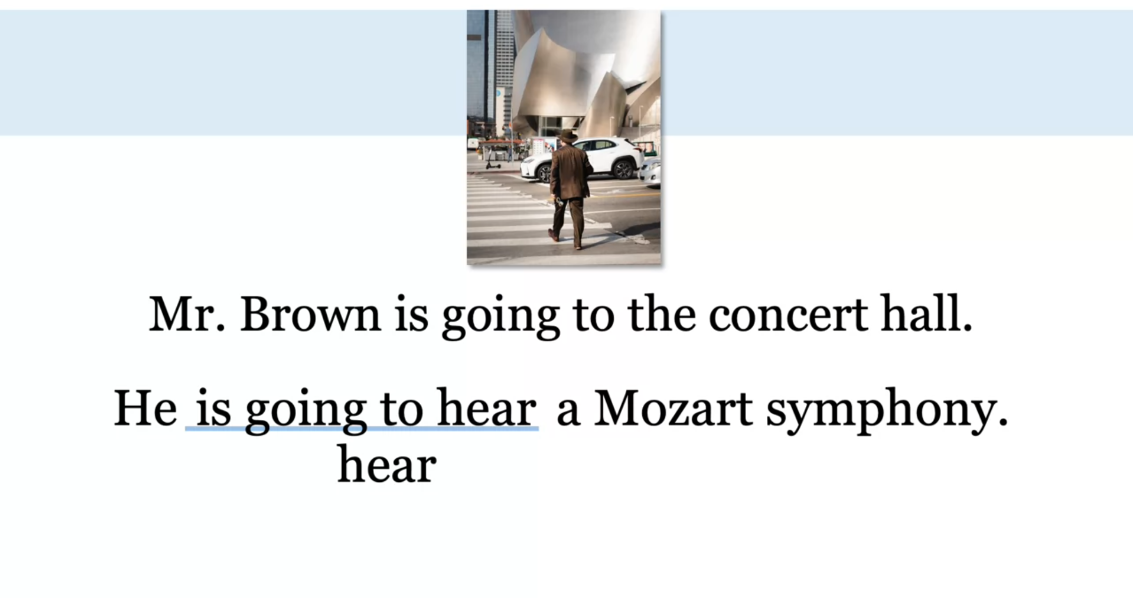
John is playing a game, but he is losing. What goes in the blank? It has to be negative because he’s losing and
the verb is when. He is not going to win. Now, can you make a
contraction here, is and not? He isn’t going to win.
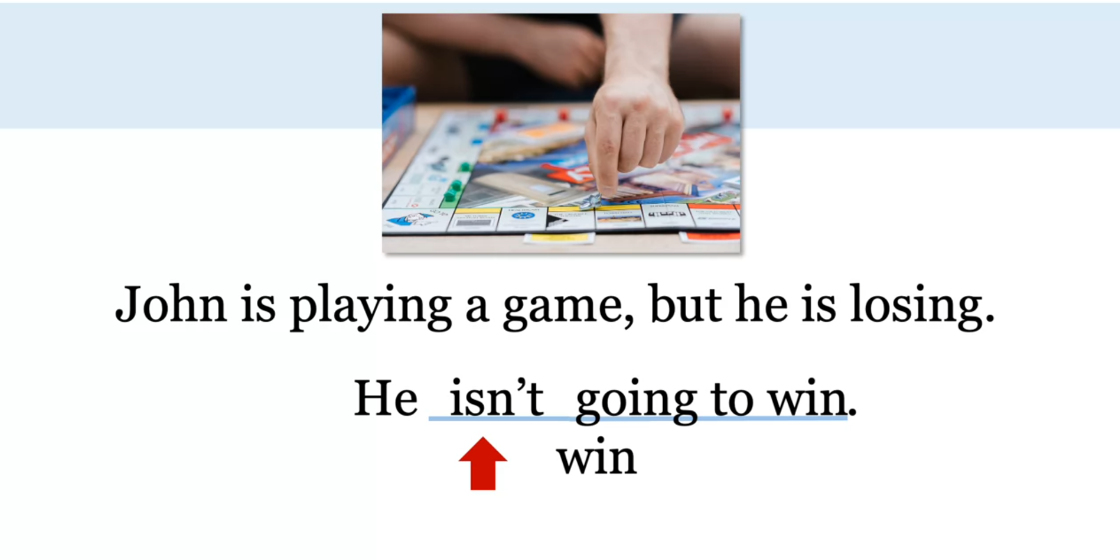
It is cloudy right now. I think it, and now we
need the future for rain. I think it is going
to rain later today. I think it’s going
to rain later today. Did you hear that?
It’s going to rain. Gonna is going to, but only when we talk, we never write it like this, it’s incorrect but when you hear people talk
about the future, often they reduce or make going to shorter and
it sounds like gonna, when we talk, it’s gonna rain.
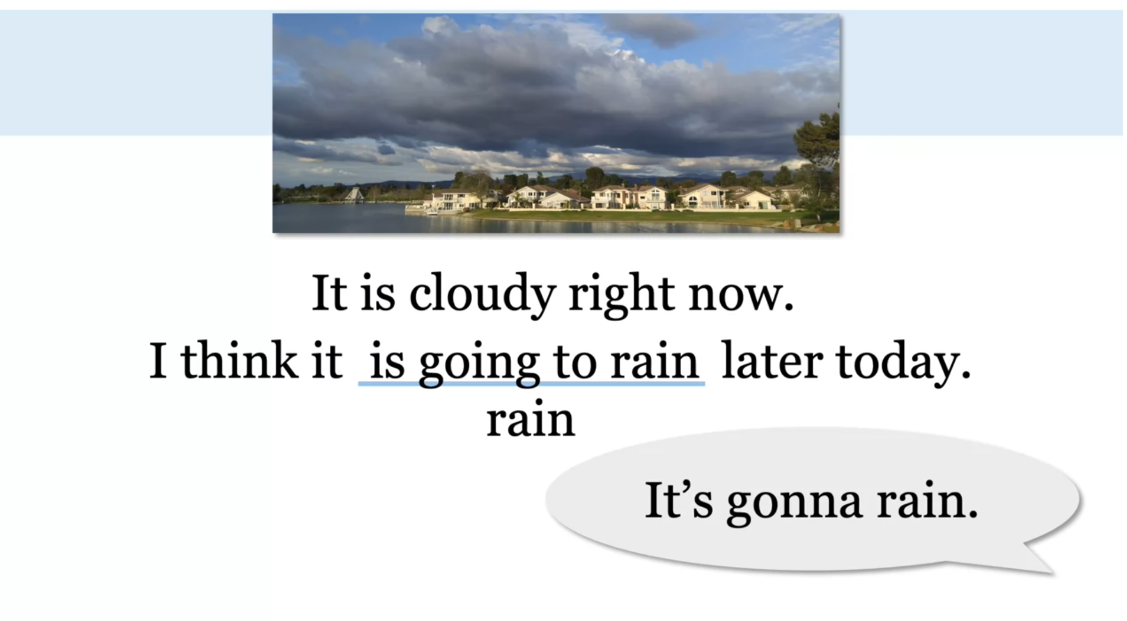
In this lesson, you
learned we form the future with “be going to”. They are going to
buy some ice cream. It is going to rain later today.
Future - BE Going To (Practice Exercise)
Exercise
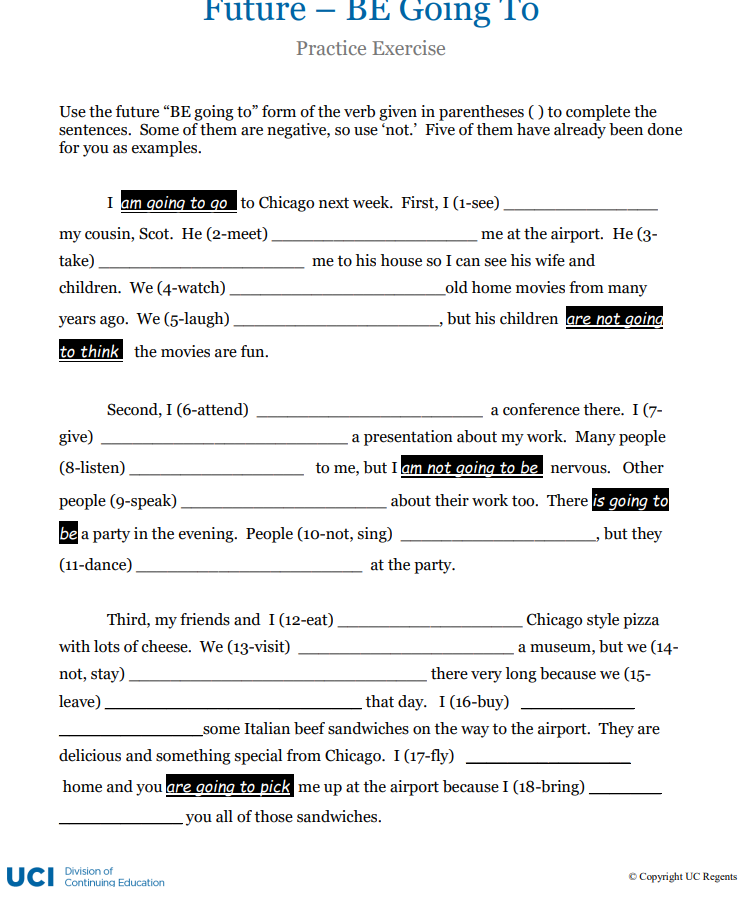
Answer

Present Progressive as Future
Present Progressive as Future. In this lesson you’ll learn how sometimes
we use the present progressive to talk about the future. The design team is
planning a presentation. They are giving the presentation tomorrow. They are finishing it now. They are taking a bus to
a conference tomorrow morning. Okay.
All of these sentences are in the present progressive, b verb and -ing. But some of them are happening right now
and some of them are plans for tomorrow. First let’s look for
the verbs, is planning, are giving, are finishing, are taking. Okay, now look at these sentences,
the design team is planning a presentation that
is happening right now. They are finishing it now,
that is also happening right now, you know because it says now. They are giving the presentation tomorrow,
that’s happening in the future and they are taking a bus to
a conference tomorrow morning. Tomorrow morning is also the future.
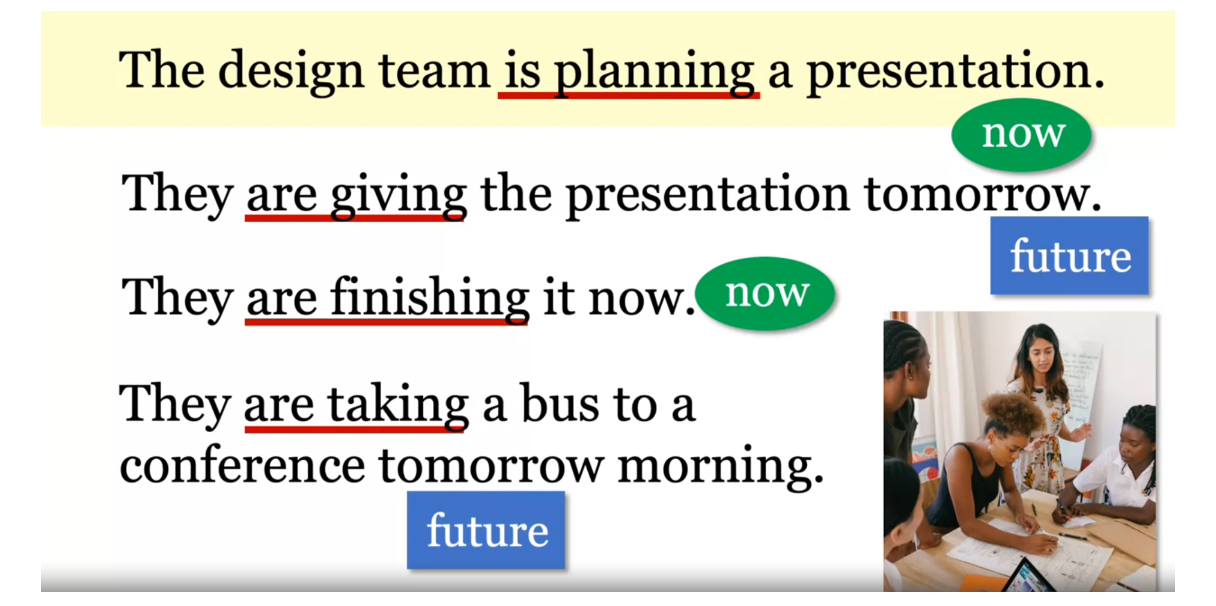
Let’s take a closer look. Both of these sentences are in the present
progressive, are planning and are giving. But the first sentence, they are planning
a presentation that is happening now. I know this because well
first I have a picture and I can see they are planning
a presentation now. Secondly, there is no other
information in the sentence to tell me that it’s not happening now. But look at the second sentence. They are giving the presentation tomorrow, here I have the word tomorrow and
this tells me it’s the future. They are giving the presentation tomorrow. Here’s another example. It is Friday morning and
Ms Mason is thinking about her busy day. She is meeting With a client at 10:00. She’s eating with a colleague at 1:00. She is going to a meeting at 2:30,
and she’s finishing a report at 4:00. That is a busy day. Okay let’s look,
these are all in the present progressive. I see every verb here is a b verb,
is, and then another verb with -ing. But in the first sentence
it is Friday morning and Ms Mason is thinking about her busy day,
that is happening now. I know that because I can see that there’s
a picture of a person thinking and also it says it is Friday morning,
that sounds like right now. All of these other sentences
happen in the future and I know that because they have
a specific time later today, that’s how we use the present
progressive for the future. When we put some other time that tells
us it is going to happen in the future.
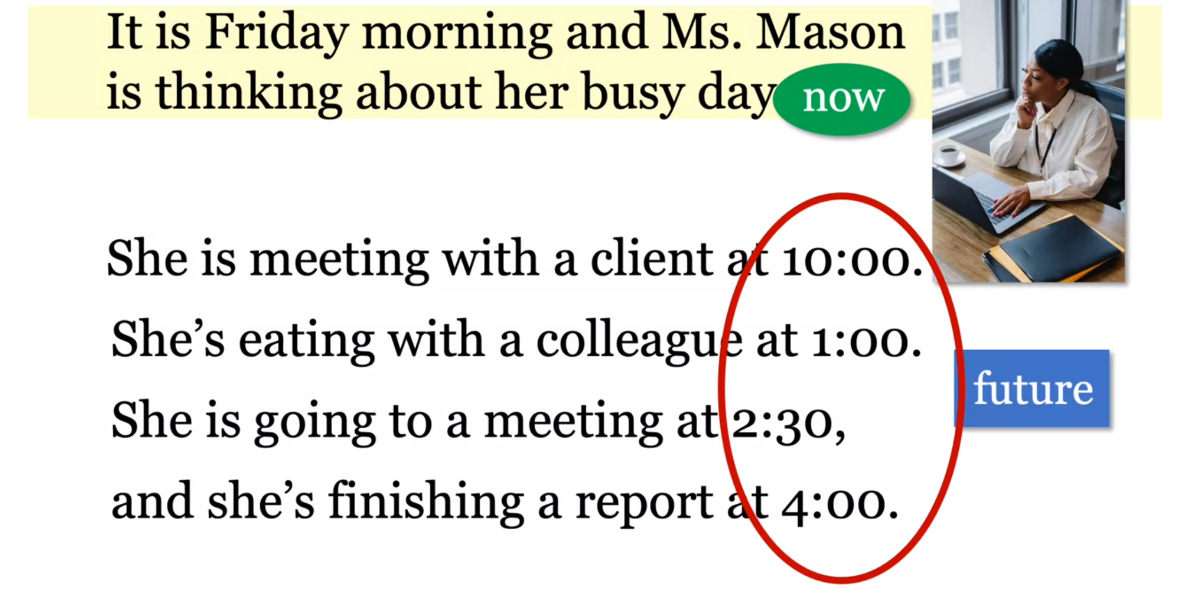
We often use the present progressive
to talk about plans in the future. Let’s look at some
examples in conversations. Here we have two friends they are talking,
one asks, what are you doing this weekend,
do you have plans? And the other says, yes,
I’m going to a concert on Saturday and my family is having dinner
together on Sunday. These sentences he uses to answer
are in the present progressive, I’m going to a concert. My family is having dinner but
he uses Saturday and Sunday to show that these
are his plans for the weekend.

Here two friends are talking and
one friend asks, what are you doing later? And she answers,
I’m having dinner with Marco tonight and here they use the words later and tonight with the present progressive to
talk about their plans in the future. Here he calls Lisa and asks, hi Lisa,
do you want to go to the movies tonight? And Lisa answers, that sounds fun but
I am working tonight.
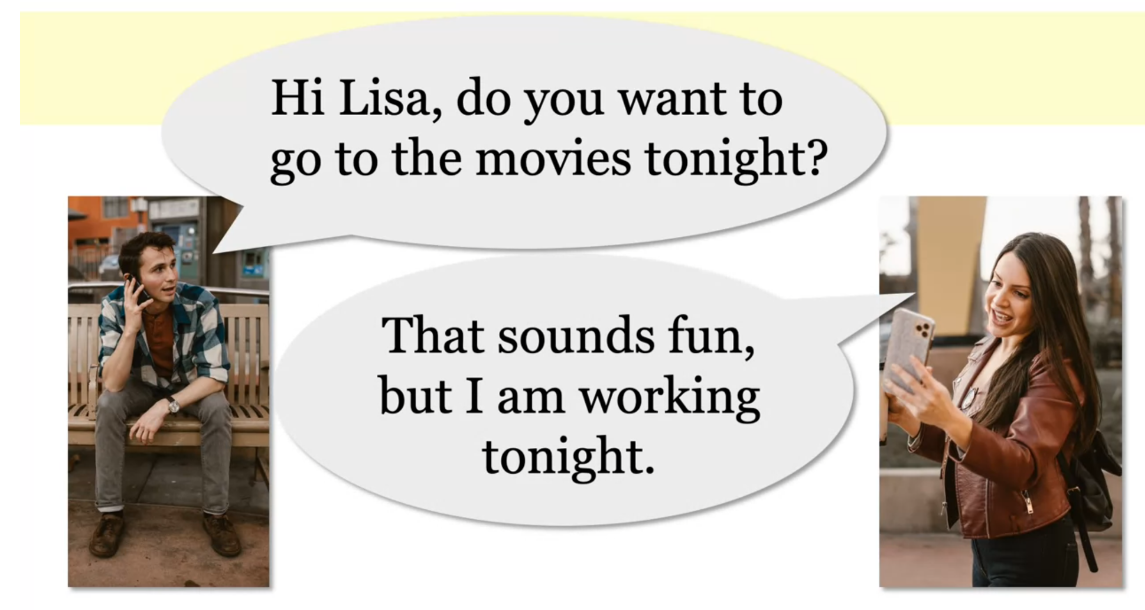
And here one sister calls the other,
hi sis, do you want to go for a walk this morning? And her sister answers yes,
I’m taking the boys to preschool at 9, how about 9:30 and
she uses 9:00 a specific time to show that’s her plan even though she
uses the present progressive. Today is Friday,
Kevin is flying to a conference, he is going to give a presentation. He is coming back on Sunday. In this lesson you learned you not
only use present progressive for happening right now, but you also
use it for happening in the future. Let’s look,
today is Friday that is right now, Kevin is flying to a conference
that is also happening right now. He is going to give a presentation, going
to give, going to verb, that’s the future. He is coming back on Sunday,
that is the present progressive used as the future because we have that
plan in the future on Sunday.
Present Progressive as Future (Practice Exercise)
Exercise
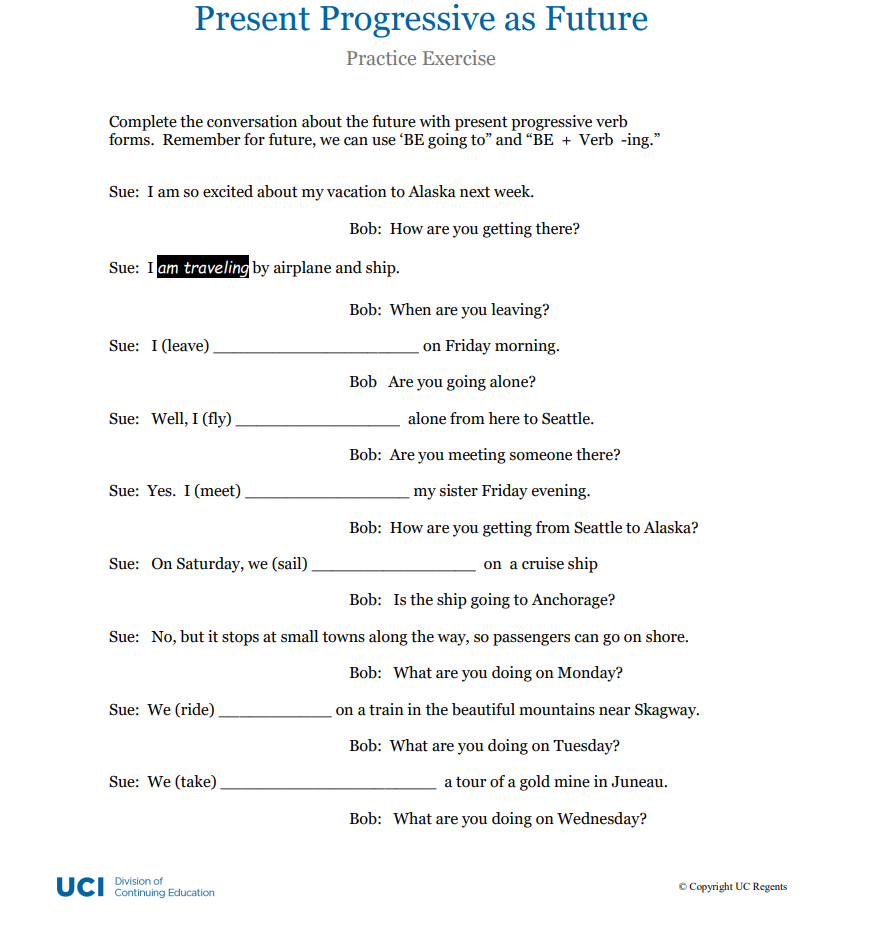
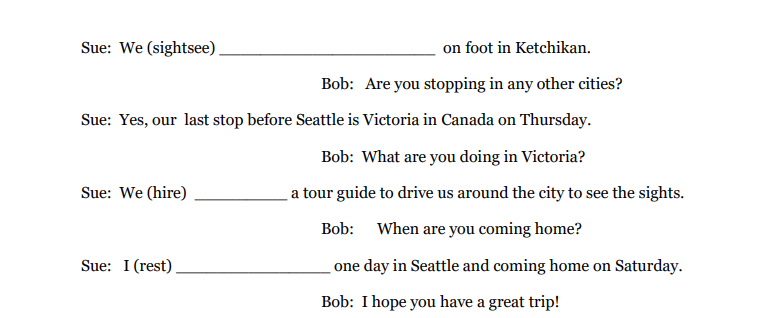
Answer
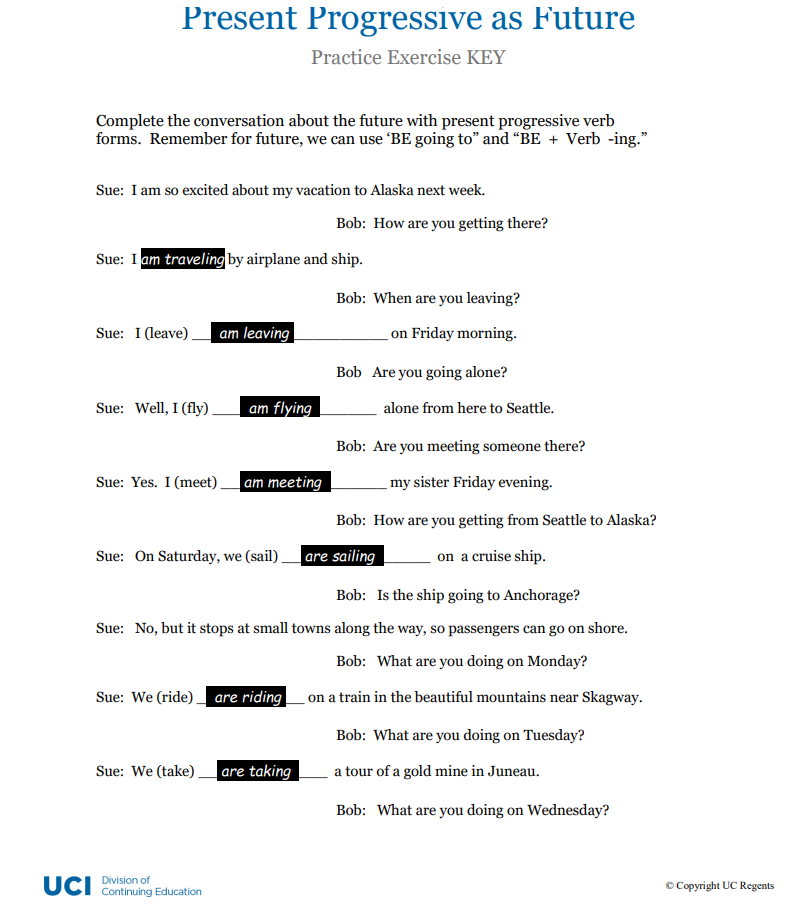
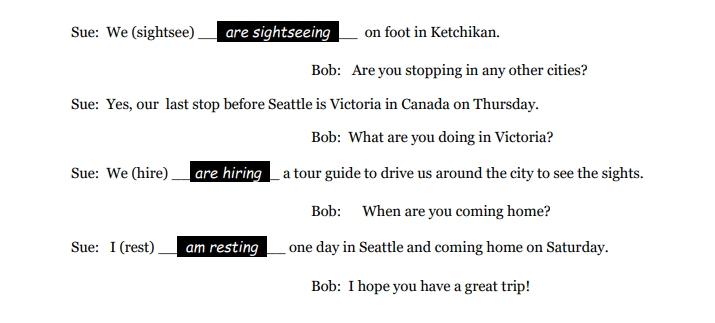
Can
Can, this word is about can and
how we can use it. Jim and Linda can do many different
things, Jim can cook Linda can’t cook. Jim can speak French, Linda can’t, Linda is a very good dancer,
Jim can’t dance very well. Let’s look at these two words can and
can’t, can and can’t tell us what Jim and
Linda are able to do.
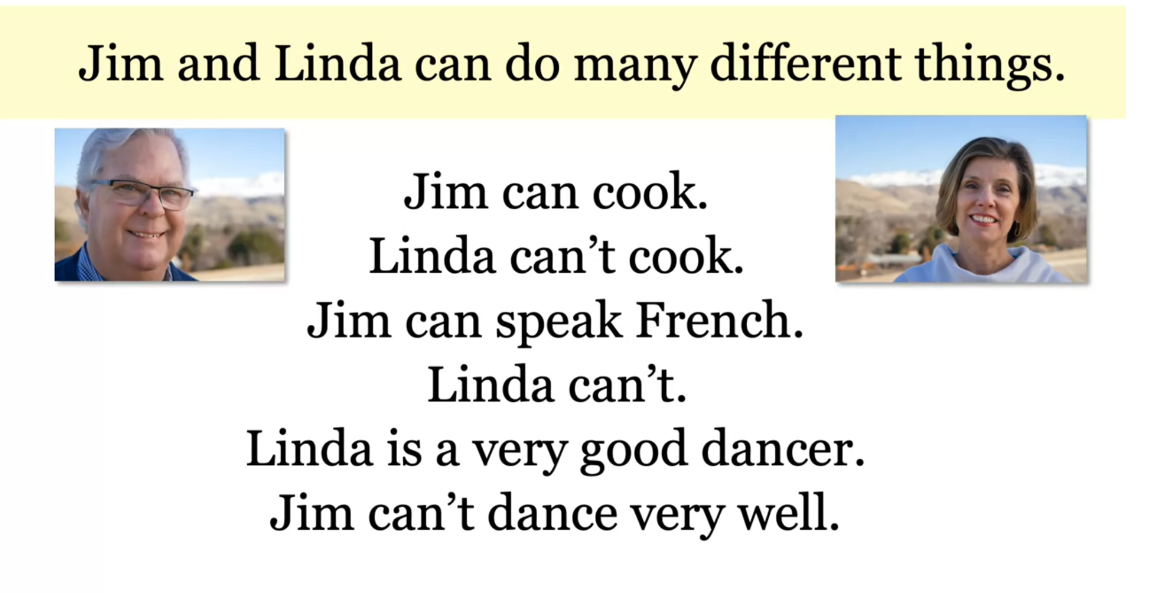
Can tells about ability, you probably
know a cheetah can run very fast. A Hawk can’t run very fast but
it can fly very fast, can tells us what these
animals are able to do.
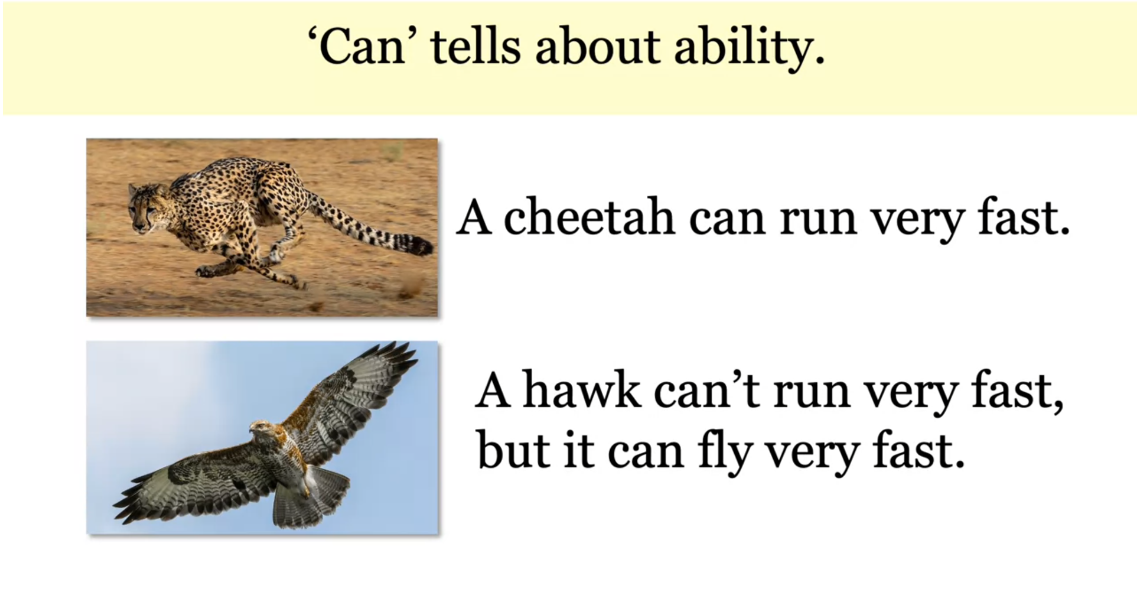
Can never changes,
let’s look at some examples she can ride a unicycle,
they can play the guitar. I can speak two languages,
notice that can goes with she, it goes with they it goes with I,
can never changes. You don’t have to put a different
ending on it or think about the form, it’s always can and when you use can
also notice that the verbs don’t change. Ride, play, speak so
you don’t have to change anything.
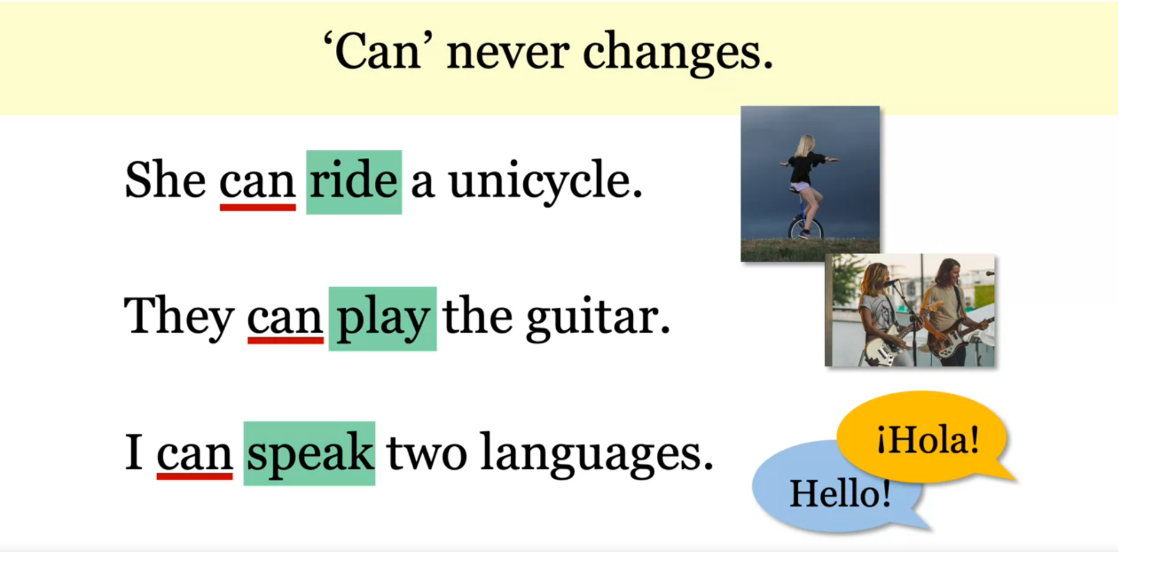
Here are some more examples,
did you know a frog can close its ears. A flamingo can swim very well,
elephants cannot jump, whales can’t breathe underwater.
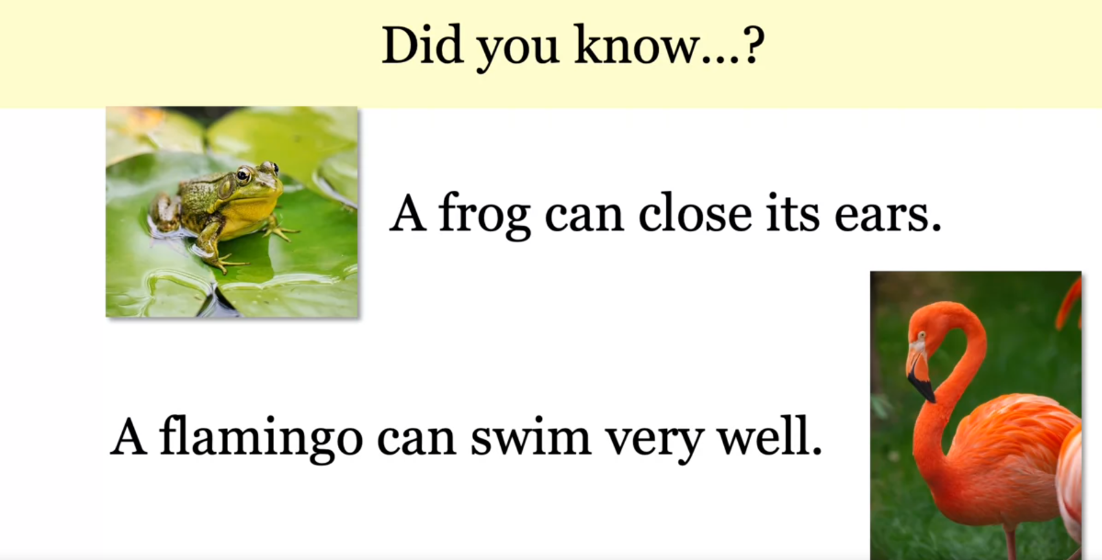
Okay, now we have negatives cannot and can’t they mean the same thing,
can’t is just a contraction. You know, we add not to form the negative
so we have she can, we add not. We have, she cannot, she cannot speak
French and notice cannot is one word, to make the contraction we
just have an apostrophe t. She can’t she can’t speak French. Use cannot or can’t for the negative, she cannot find her keys,
Tim can’t understand. There’s so much rain I can’t see clearly,
notice in the negative also we’ve got cannot, can’t and
can’t it doesn’t change. It’s just cannot or can’t you don’t
change an ending or add anything. And again just like the others find, understand and see also don’t change.
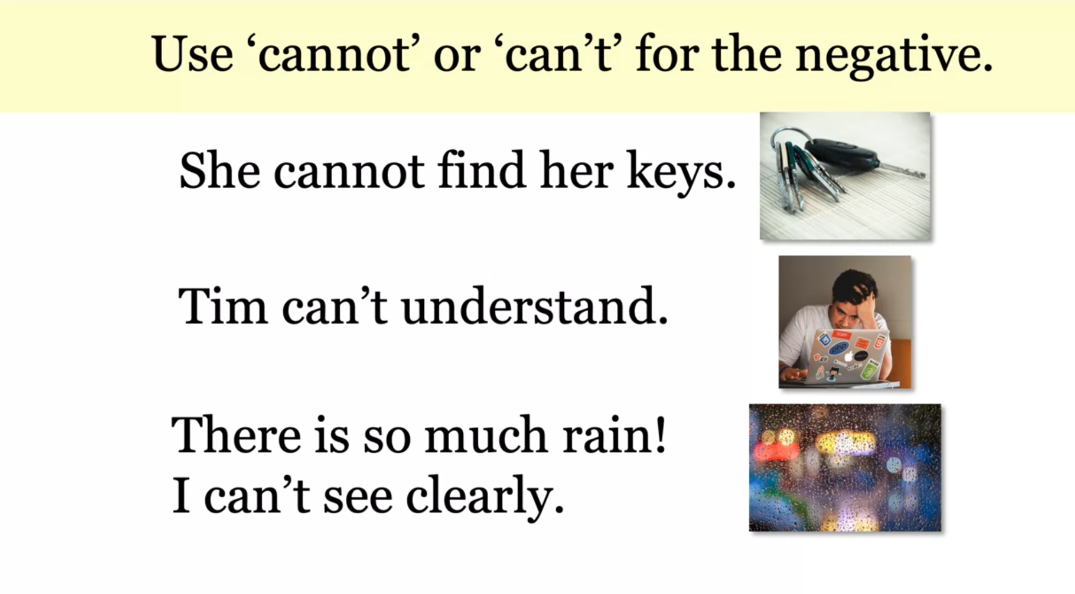
Switch the word order to form a question,
this might look familiar to you too. You can say she can ride a unicycle, and now if we want to ask the question,
we are going to switch the subject. And can, so
we get can she ride a unicycle? Yes, she can. Can Gina play the flute? Yes, she can, she plays very well.
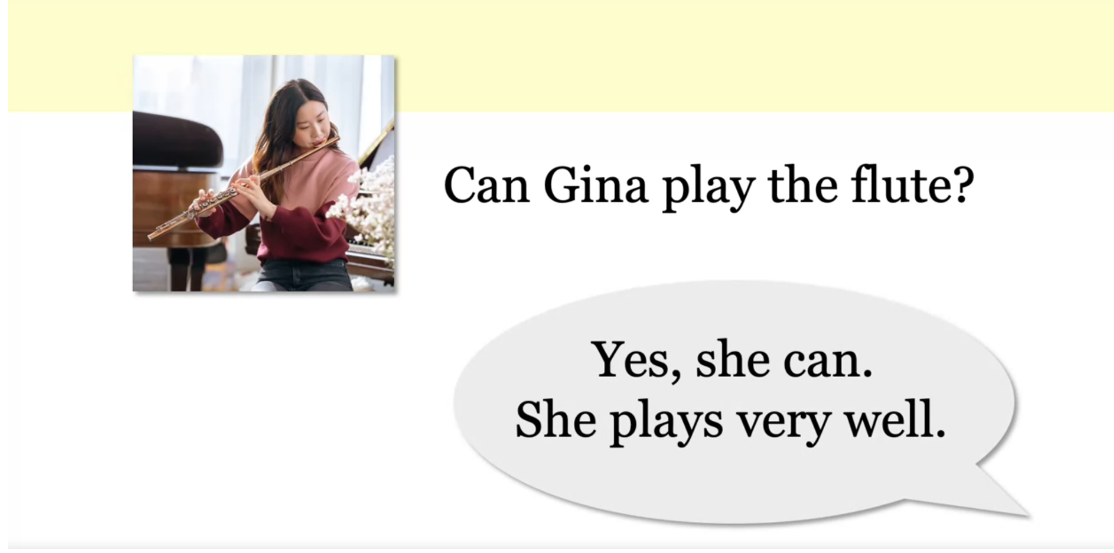
Can Tom sew a button on his shirt? Yes, he can. Can her daughter read? No, she can’t, not yet. Okay, you try you have the subject
they and you have the verb skate. Let’s say yes, no and the question, yes they can skate, no,
they cannot skate or they can’t skate and
the question, can they skate? Okay, same thing here the subject is
he and the verb is play the guitar. Yes, he can play the guitar, no,
he cannot play the guitar or he can’t play the guitar, same thing and the question, can he play the guitar? Last one, you/ cook, yes, you can cook, no, you cannot cook or you can’t cook and
the question can you cook? I can, can shows ability and can never changes. So now you can say sentences like
a flamingo can swim very well, elephants cannot jump,
whales can’t breathe underwater. Can you understand? I hope so.
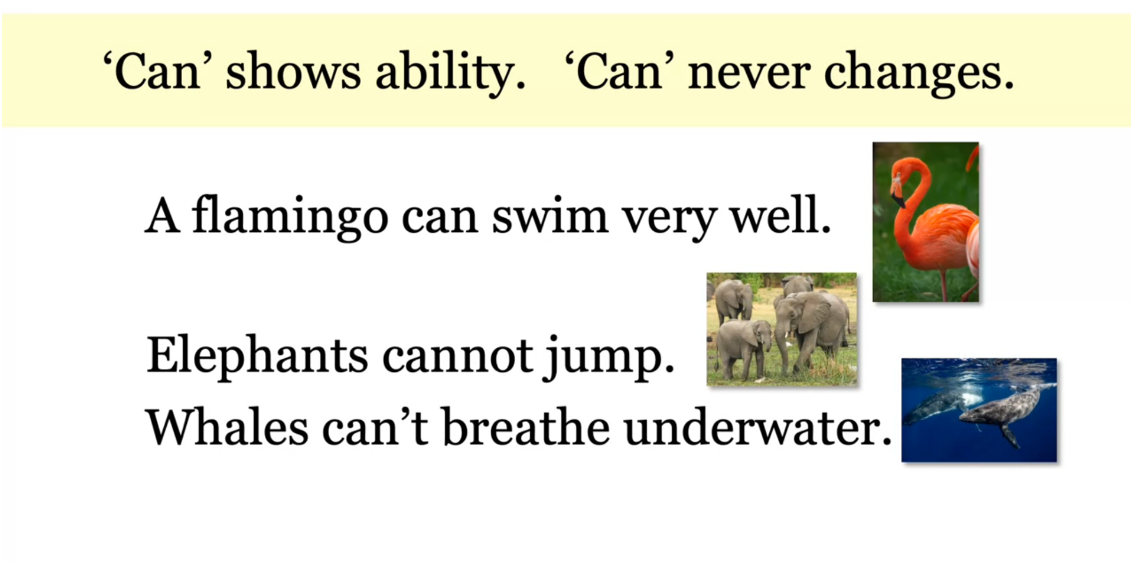
Using Can & Can’t (Practice Exercise)
Exercise

Answer
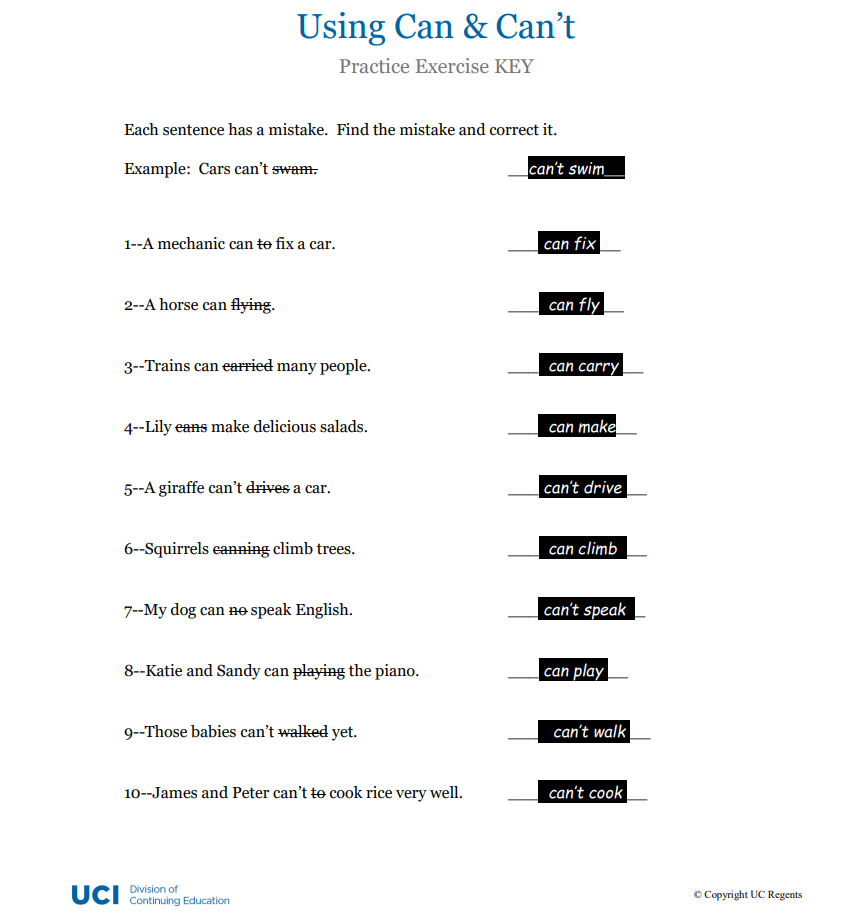
Quiz: Future Forms & Can


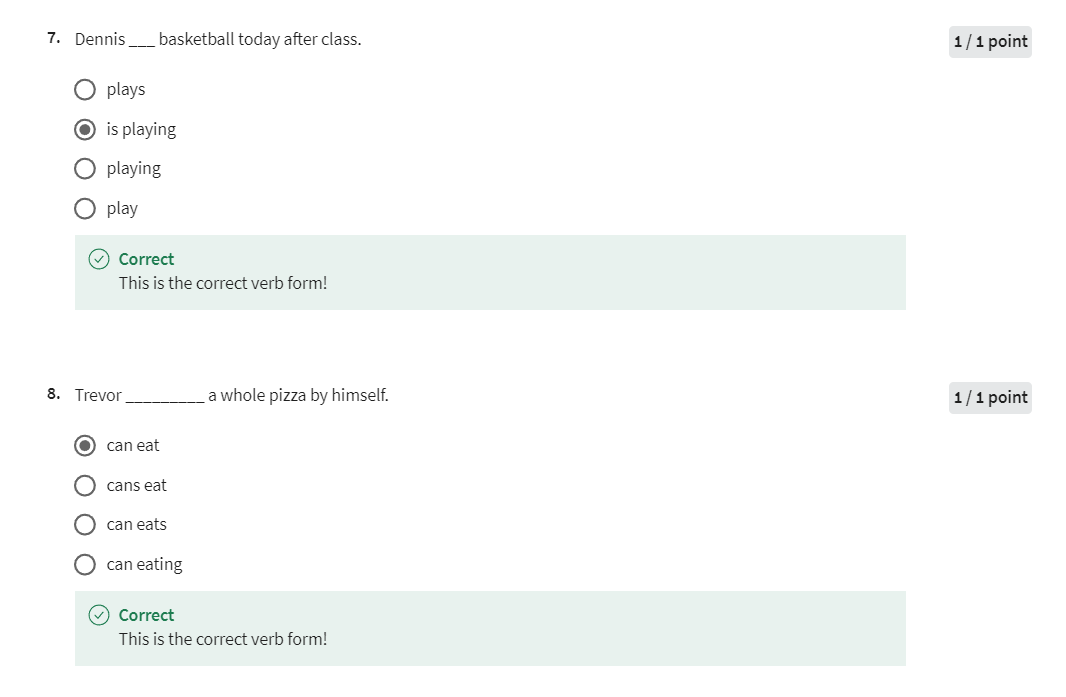
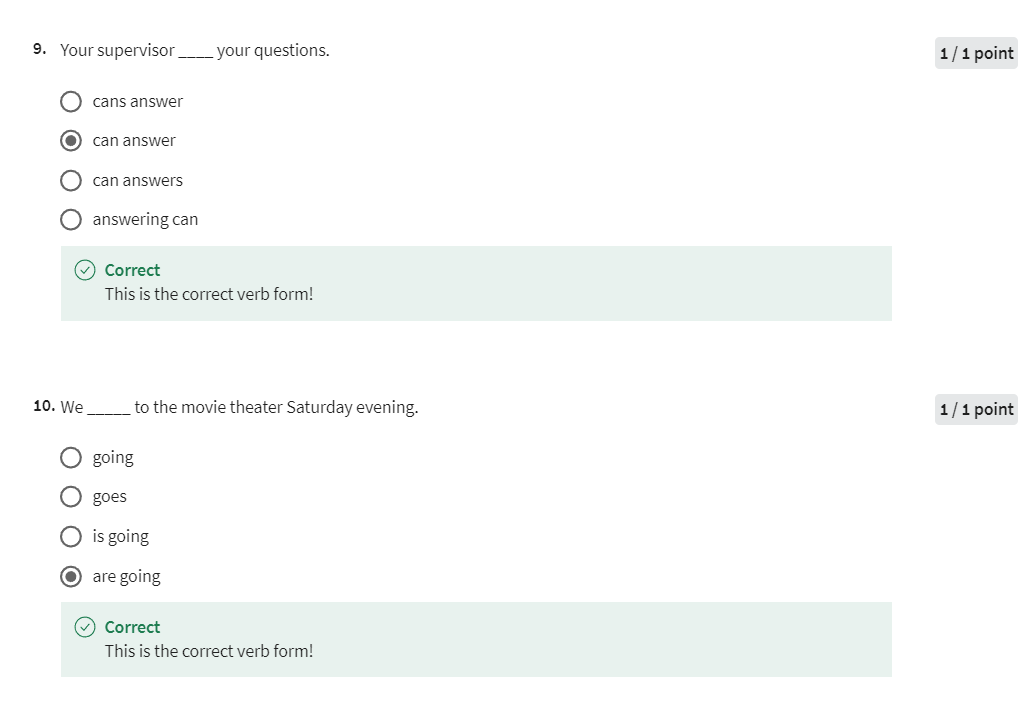
后记
2024年4月7日下午完成Coursera上的这门课,习得一些现在进行时(present progressive)和将来时的英文表达方式。这门课适合小学和初中生学习。


